The post Klimt + Gold = The Belvedere — 4th Greatest Museum in Vienna appeared first on Art Lovers Travel.
]]>
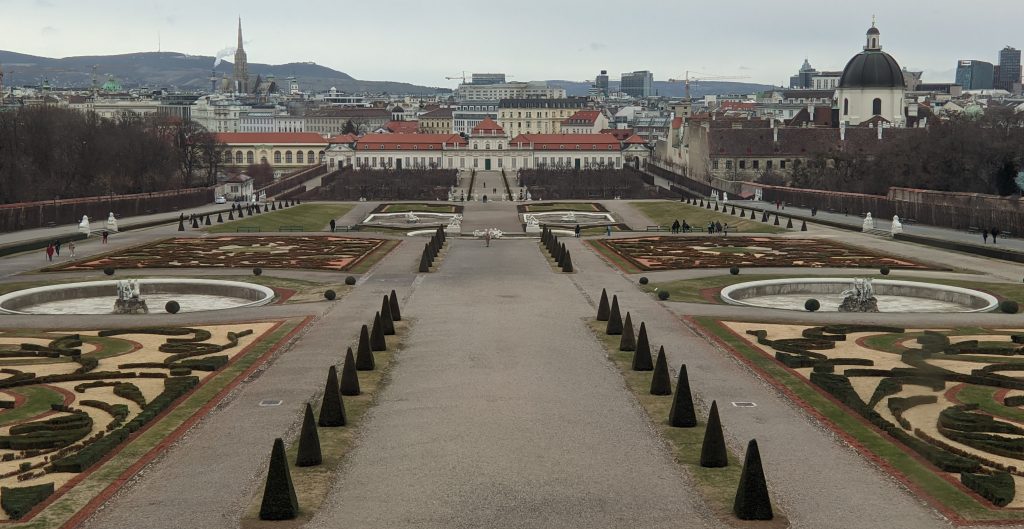
The Belvedere owns the most comprehensive collection of works by Ferdinand Waldmüller (1793 — 1865), as well as fine examples of Austrian modernism by Kokoschka and Schiele, and masterpieces by international artists such as Böcklin, Rodin, Monet, Munch and Van Gogh. Fine paintings by Gustav Klimt (1862 — 1918), nevertheless, provide the main attraction here!


Klimt’s “Lady with a Fan” Sold at Auction for $108.4 Million
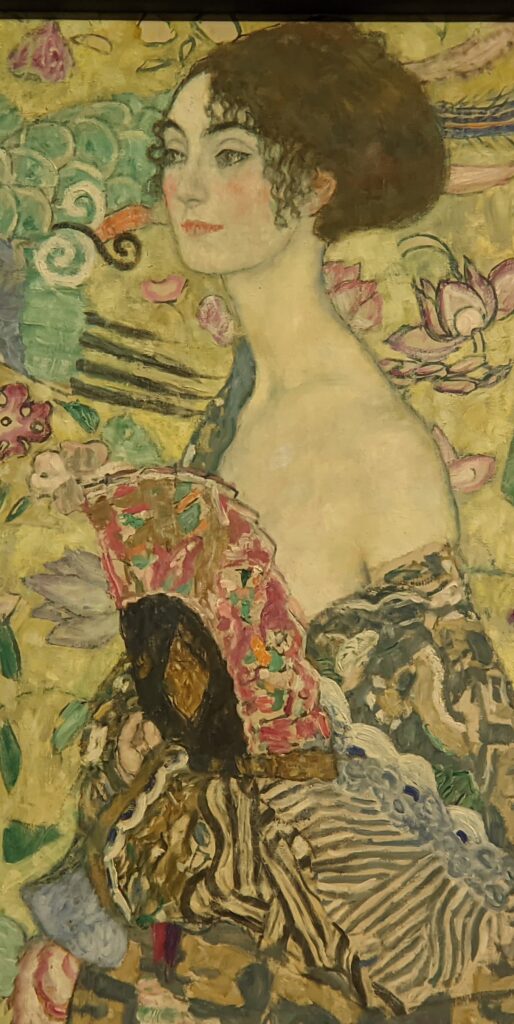
In June 2023, “Lady with a Fan” sold in London for more than $108 million, a price which was the highest ever for a Klimt painting sold at auction, surpassing Klimt’s 1903 landscape “Birch Forest” which sold for $104.6 million in New York in 2022.
In fact, the price for “Lady with a Fan” was the highest ever for any artist at a public sale held in Europe. This radiant portrait was shown at the Belvedere from March 2021 through February 2022 as part of a special exhibition. Additional images from the show entitled “Lady with a Fan — Gustav Klimt & East-Asia” appear later in this article.
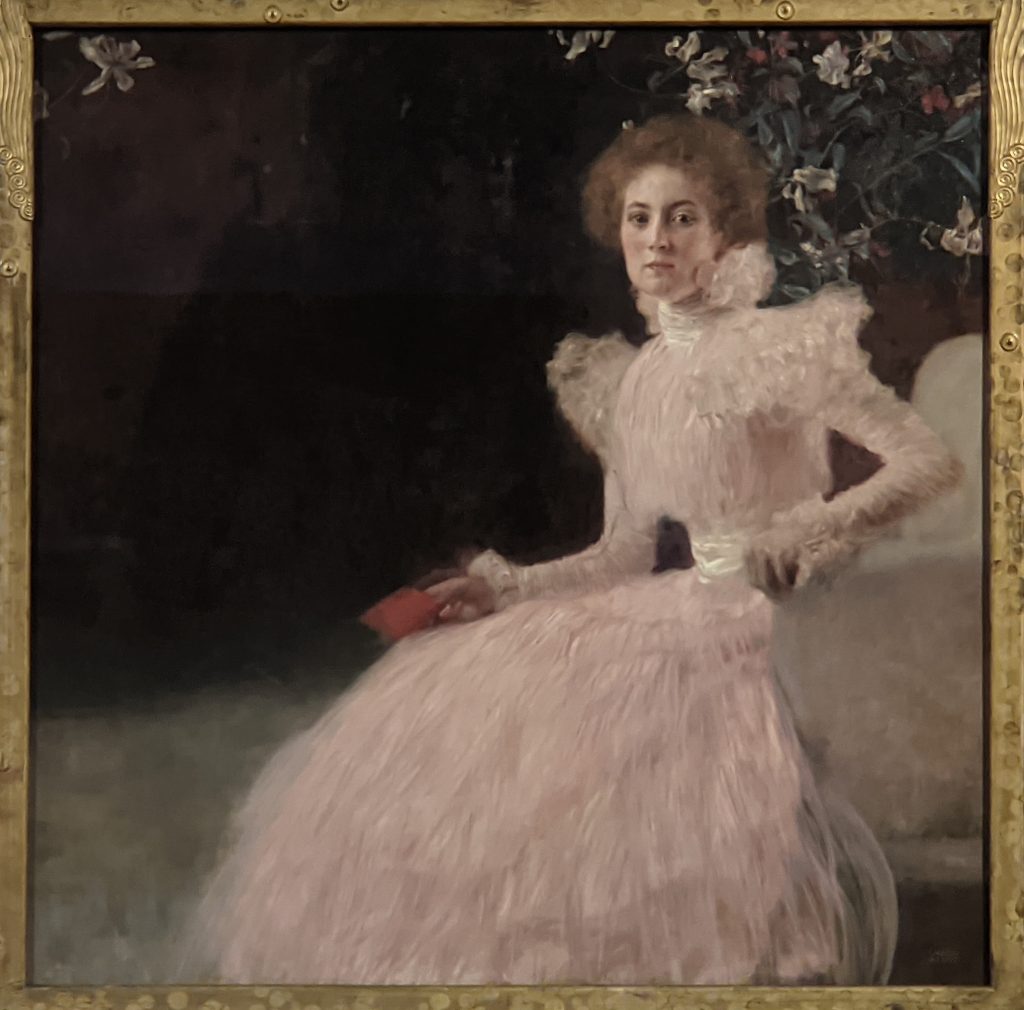
Portrait of Sonja Knips, 1897
Though Klimt did paint male figures in his early creative period, his Portrait of Sonja Knips (above) — commissioned when the artist was 35-years-old — was in many respects his breakthrough painting. It represented a departure from his academic background and work as a muralist, and from the glamorous theater world where Klimt first made a name for himself. In economic terms, Sonja’s portrait should be viewed as Klimt’s first significant entry into the Viennese social stratum, which nurtured the rise of the art movement to become known as the Vienna Secession (and, later, the Wiener Werkstätte).
Sonja’s portrait bears several clear influences of James McNeill Whistler, the American painter whose reproductions were likely known to Klimt. The square format of the Knips portrait, featuring the triangular semi-profile pose of the sitter, presaged the compositional devices (such as the pictorial tension between the floral arrangement in the striking background behind Sonja and her suffocating, high collar) that Klimt would successfully exploit in the long series of portraits depicting society ladies that would follow — leading up to the stylized work of the Gold Period, the centerpiece of Klimt’s international renown.
After Sonja, Klimt would almost exclusively paint women.
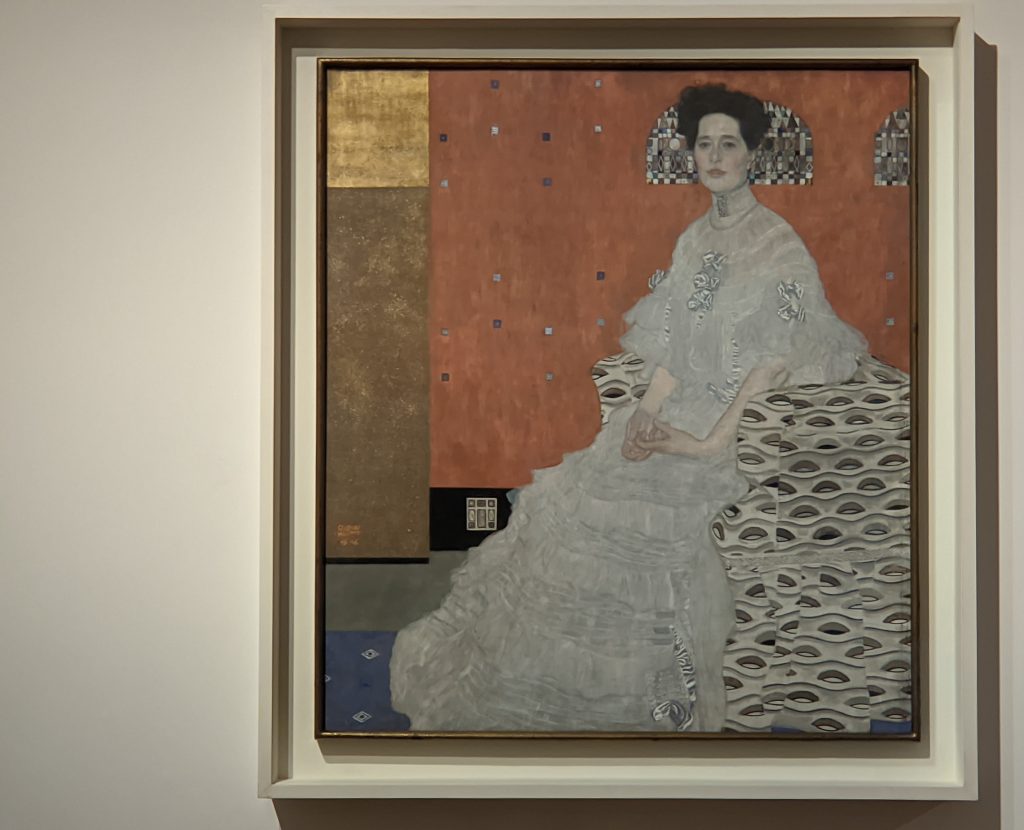
Gustav Klimt and the Vienna Secession
In 1897, a group of Austrian visual artists, designers, sculptors and architects, including the painters Koloman Moser and Gustav Klimt, resigned from the Association of Austrian Artists to protest its preference for traditional styles of art. They formed the Vienna Secession, an art movement related rather closely to Art Nouveau, and published an influential magazine of graphic art called “Ver Sacrum” (from the Latin for “Sacred Spring”). The group’s most influential architectural work is the Secession Building in Vienna (pictured below), designed by Joseph Maria Olbrich as a setting for the artists’ exhibitions.

The Golden Period of Gustav Klimt: 1898 — 1909
Your chief reason for visiting the Belvedere museum may perhaps be to see some of the highlights of the Secessionist Movement, most notably “The Kiss” (below) when Klimt began incorporating gold leaf into his iconic paintings.

At the Belvedere museum you can also see the equally impressive (though less glittery) “Portrait of Fritza Riedler” (below, right) painted by Klimt in 1906 — and you should notice that the decorative semicircular shape on the wall behind Fritza’s head signifies (in our opinion) Gustav Klimt’s homage to Diego Velázquez and the Spanish Golden Age.
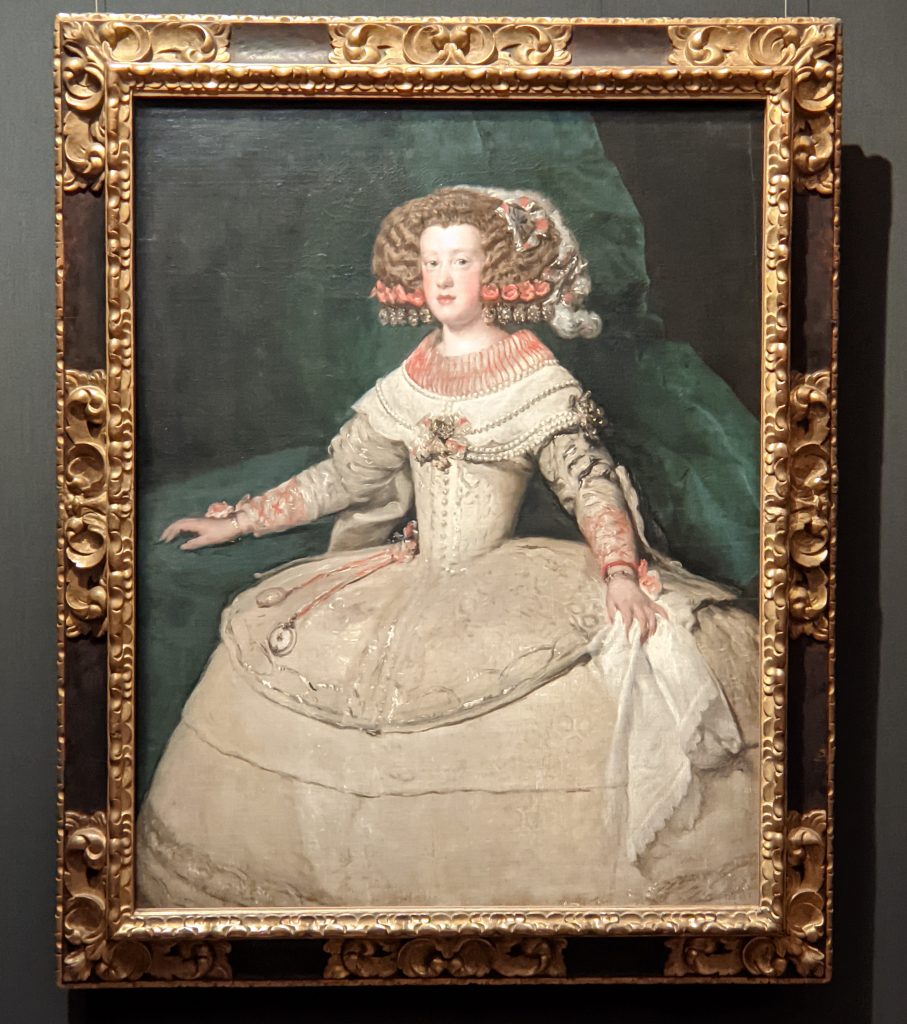
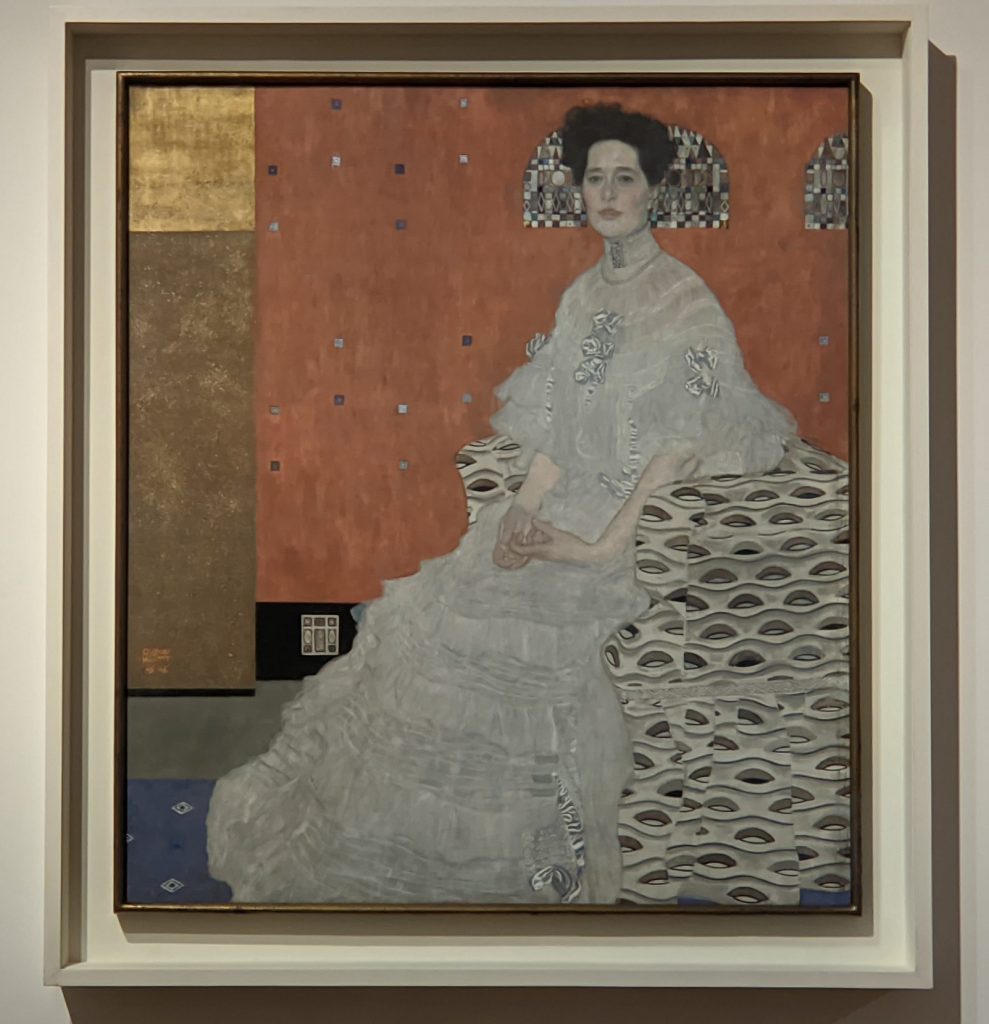
Discover the Details of Klimt & His Relationship with Other Artists
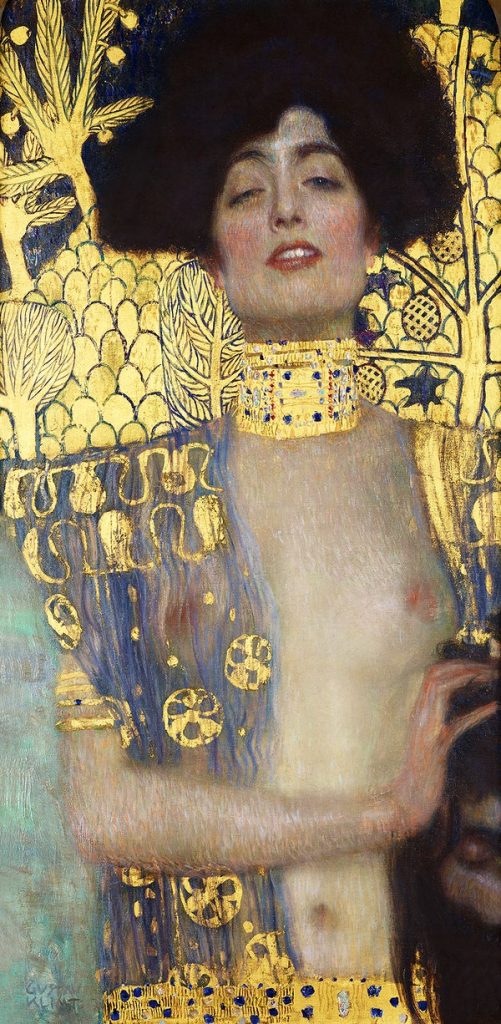
The Belvedere also owns Klimt’s first painting of Judith, the heroine from the Bible who seduced (and decapitated) the Assyrian General Holofernes to save her home city from destruction. Traditional renderings (by Caravaggio and many other artists) of the biblical theme of Judith depict a virtuous, courageous woman holding a sword bloodied from the violent act. In “Judith with the Head of Holofernes” (above) Klimt ignored art history and focused almost exclusively on Judith as a femme fatale, to the point where the severed head is incidental, literally cut off by Klimt at the right margin. One will notice that the sword and blood were excluded by Klimt, who instead placed emphasis on the torso and facial expression, implying that Judith used other means such as her voluptuousness and sensual magnetism to bewitch and destroy the General. As a model for “Judith” Klimt used his friend, the Viennese socialite Adele Bloch-Bauer, and we believe he drew inspiration from an earlier painting by Franz von Stuck (below left).
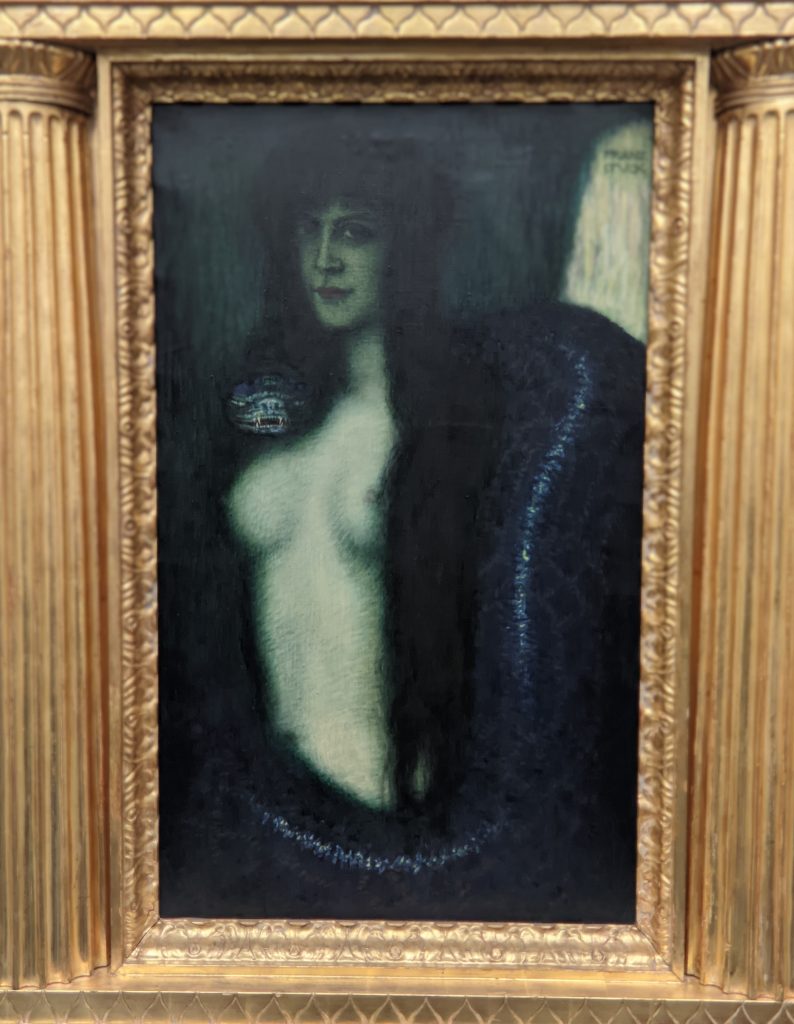

Klimt’s “Portrait of Adele Bloch-Bauer I” {also called “The Woman (or Lady) in Gold”} was exhibited at the Belvedere from the end of World War II until 2006, when it was returned to Adele’s niece, then sold for the then-record price of $135 million, and finally placed on permanent display in New York’s Neue Galerie.
Even though some of Klimt’s best-known paintings are not always on view at the Belvedere, you should still come to the Upper Belvedere palace for up-close enjoyment of the many beautiful details to be found in Klimt’s paintings.
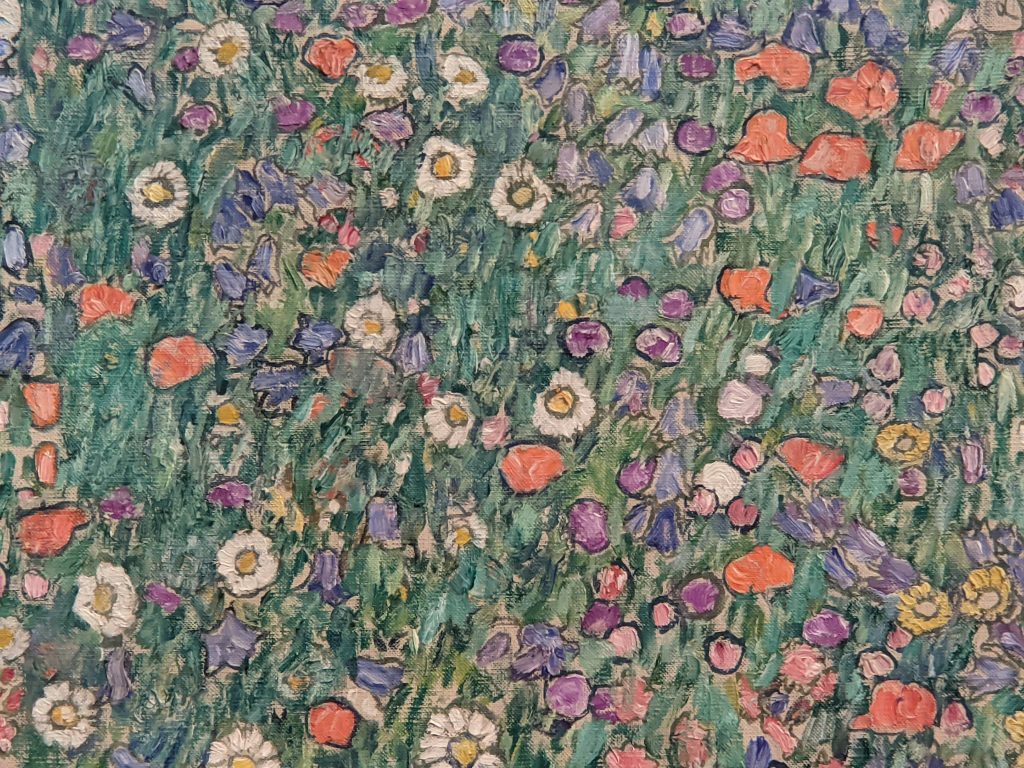
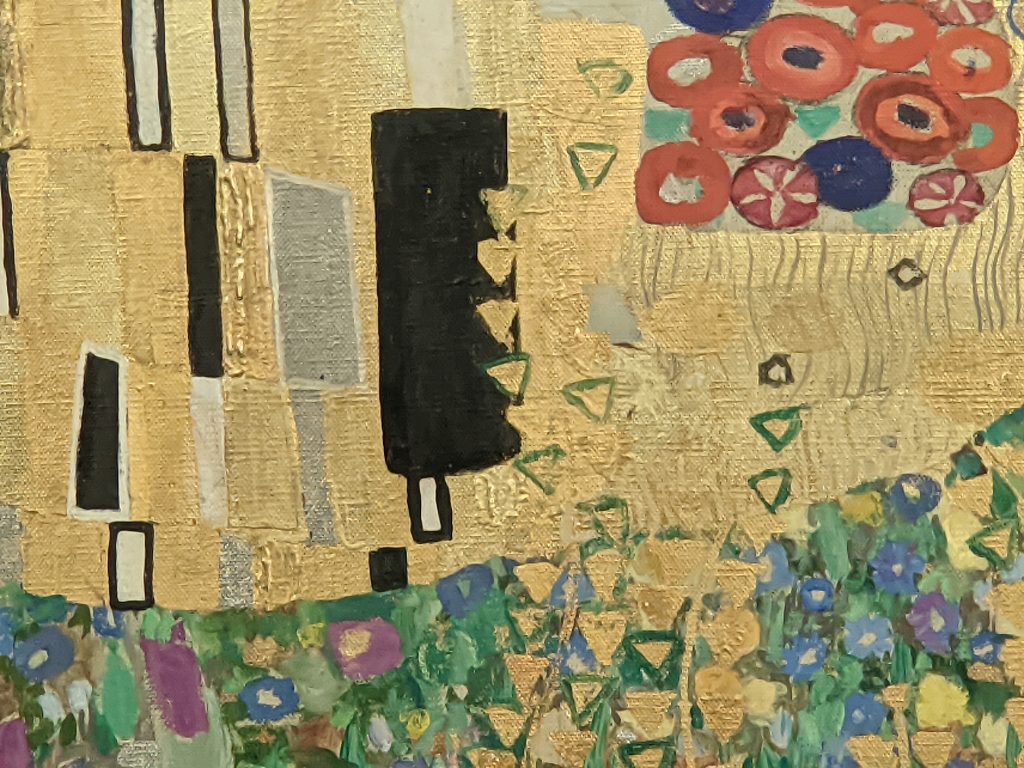

Klimt’s father was an engraver who worked in silver and gold. Klimt followed in his father’s footsteps and enrolled in Vienna’s School of Applied Arts where he studied varied subjects from fresco painting to mosaics.
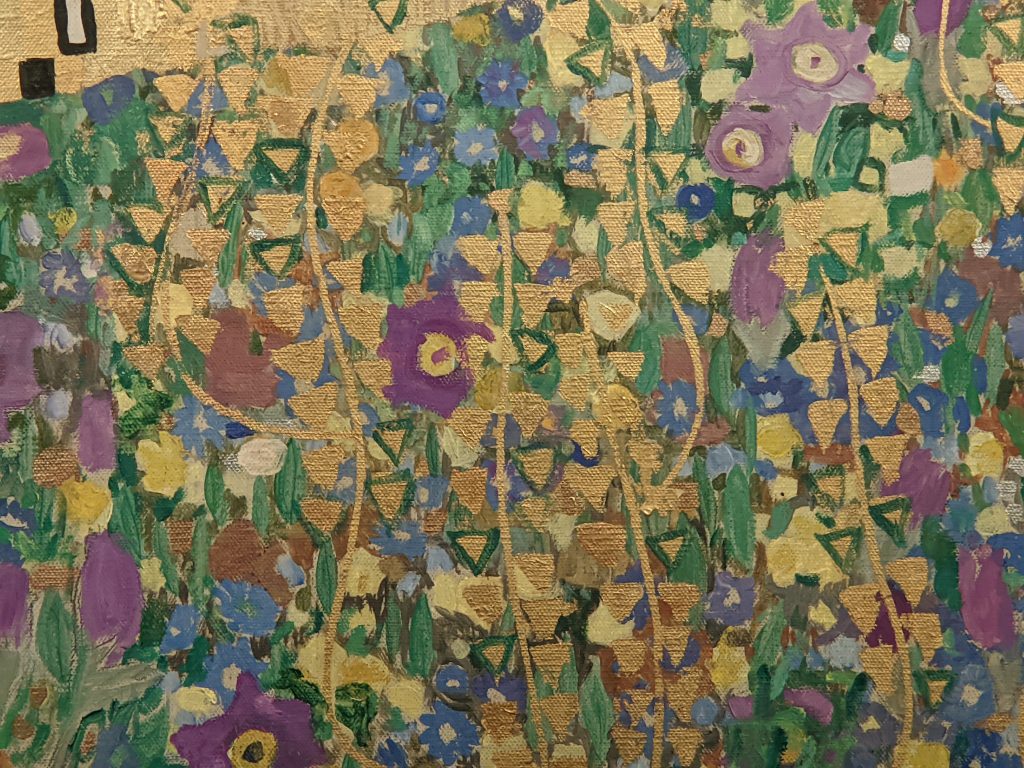
While Klimt’s murals, decorative commissions and ceiling paintings in public buildings were praised as lavish and his nudes enticing, some critics in his day labeled them scandalous and “pornographic” (by today’s standards, some might say “misogynistic”). After one public outcry in the 1890s, the University of Vienna refused to display three paintings they commissioned from Klimt, prompting the artist to declare, “Enough of censorship.” Klimt would never again accept a public commission, stating, “I want to get away…. I refuse every form of support from the state, I’ll do without all of it.” Soon after, Klimt traveled to Ravenna to admire the gilded Byzantine mosaics.
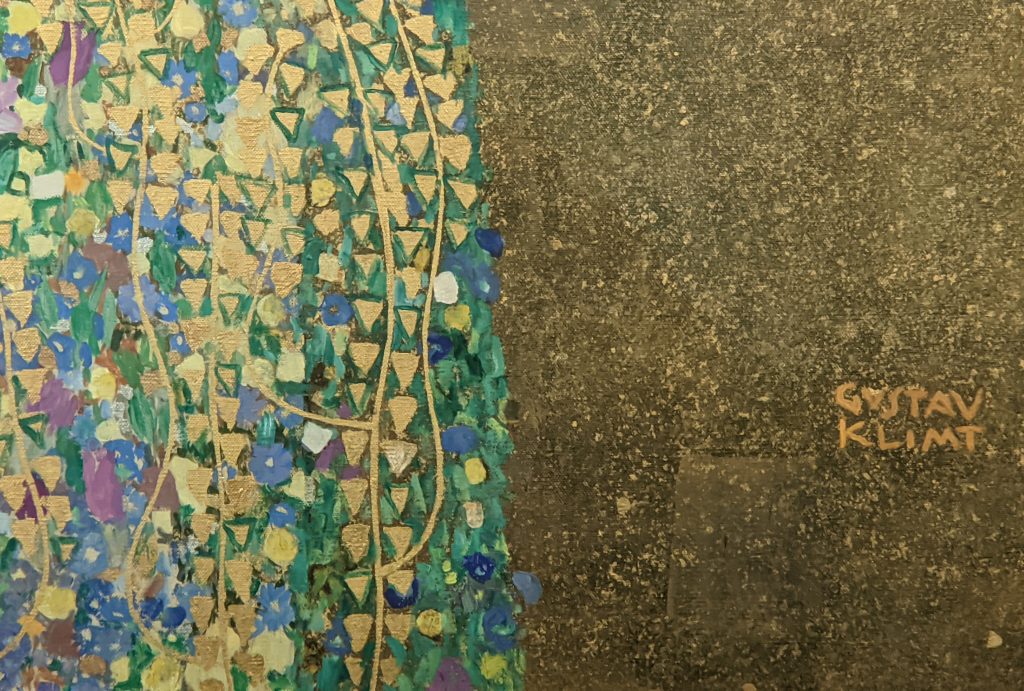

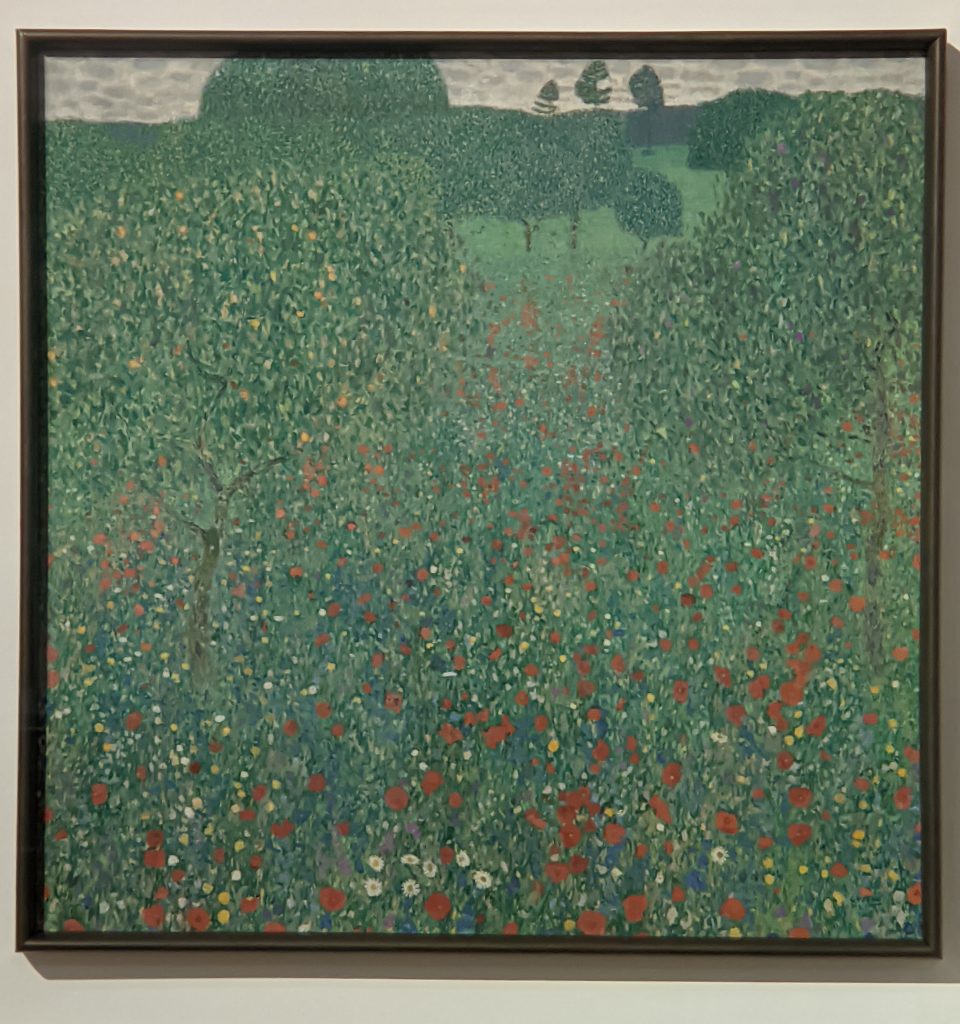
Klimt Combined Realism, Art Nouveau & Modernism
Following his Golden Period, landscape painting offered Klimt different opportunities. He could take slightly more control of his body of work by avoiding commissions; escape to the countryside and occasionally travel outside Austria; and enjoy time away from Vienna with Emilie Louise Flöge, his life companion (and muse), and her family.
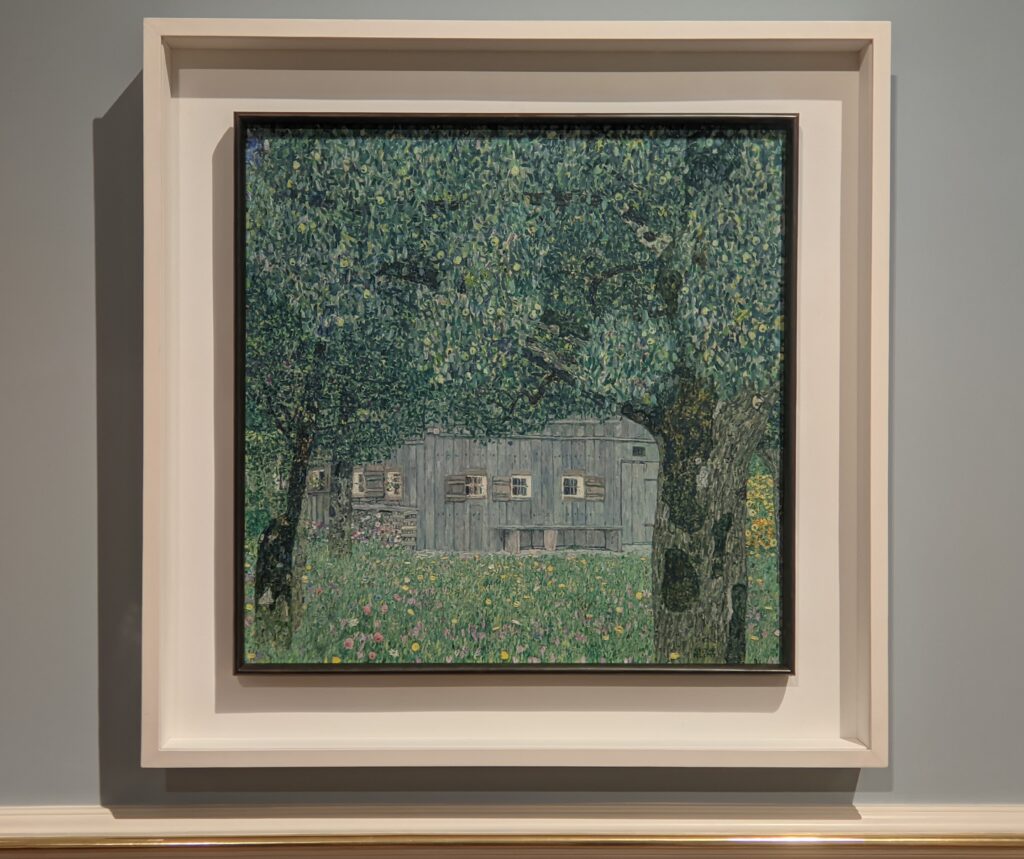
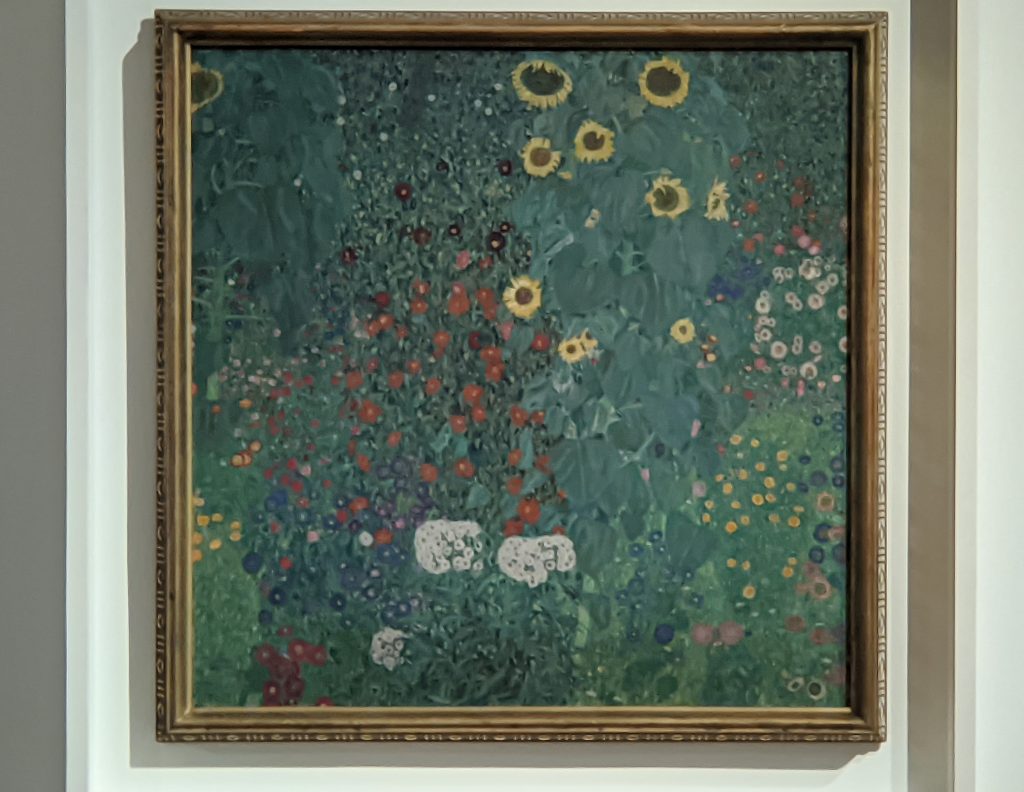
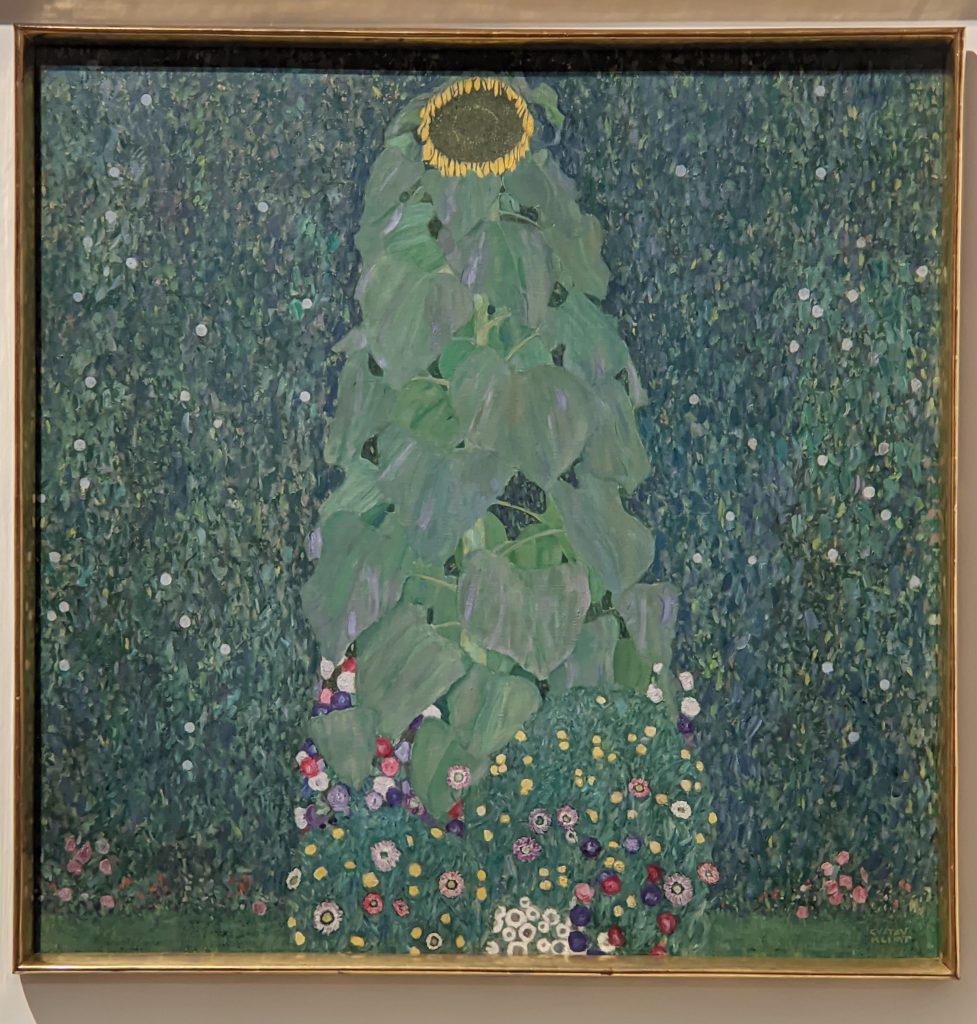

Klimt met Emilie Flöge around 1891, when his brother married into the Flöge family. Thereafter, Klimt used Emilie as a model for many of his works and was a frequent guest of her parents, spending summers together at Lake Attersee.
Creating landscapes constituted the only genre (aside from painting figures) that seriously interested Klimt. His interest in escaping to the mountains and lakes, and the modern paintings he created there (featuring atmospheric, flattened compositions devoid of people in an unusual square format, cropped like photographs), underscore Klimt’s connection to the natural world and his concern for humankind’s treatment of nature during the Second Industrial Revolution.

Landscape painting was also a passion Klimt shared with Egon Schiele (1890 — 1918). In 1907, the 17-year-old Schiele introduced himself to the famed Klimt.
Klimt bought drawings from Schiele, and connected the young artist with patrons. They took a keen interest in each other’s output, developed a friendship, and would spend time together in their studios often studying the other’s unfinished landscapes.
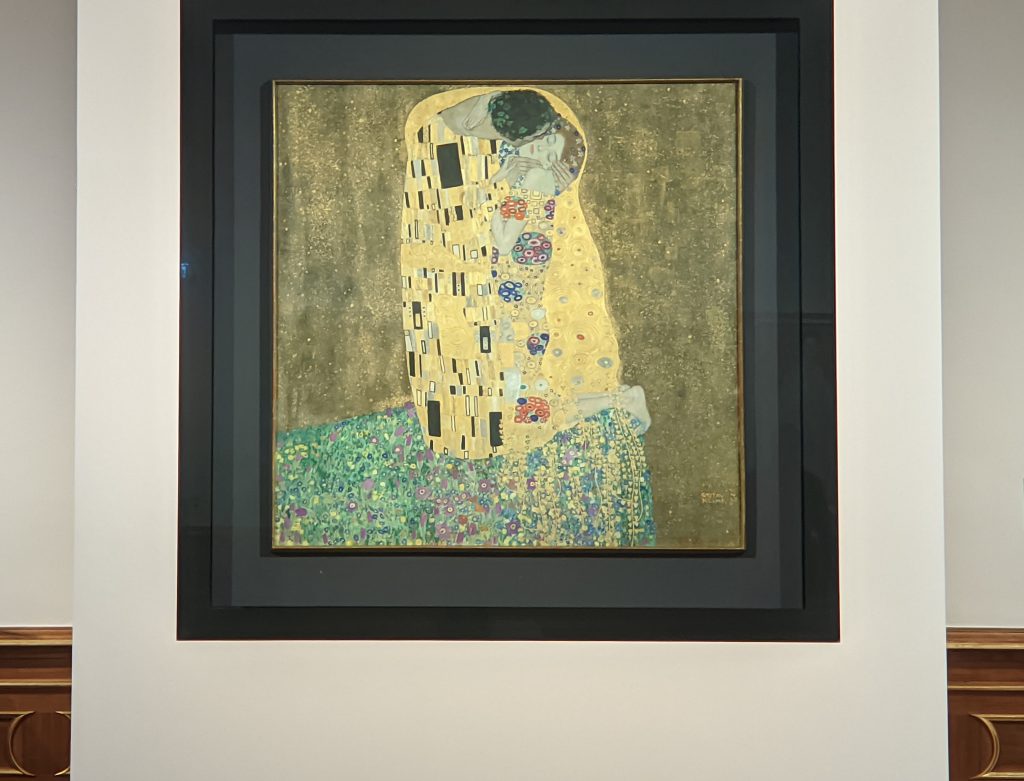
“The Kiss” & the Permanent Collection
It is believed that Klimt’s 1907-08 oil on canvas entitled “The Kiss” is a depiction of Klimt himself and Emilie Flöge as lovers. It is possible they were solely life-long friends, not sexual partners.
Klimt was known to be very active sexually, although he never married. He spoke and wrote very little about his private life, kept his affairs discreet, and avoided public scandal. Klimt is said to have fathered 14 children.
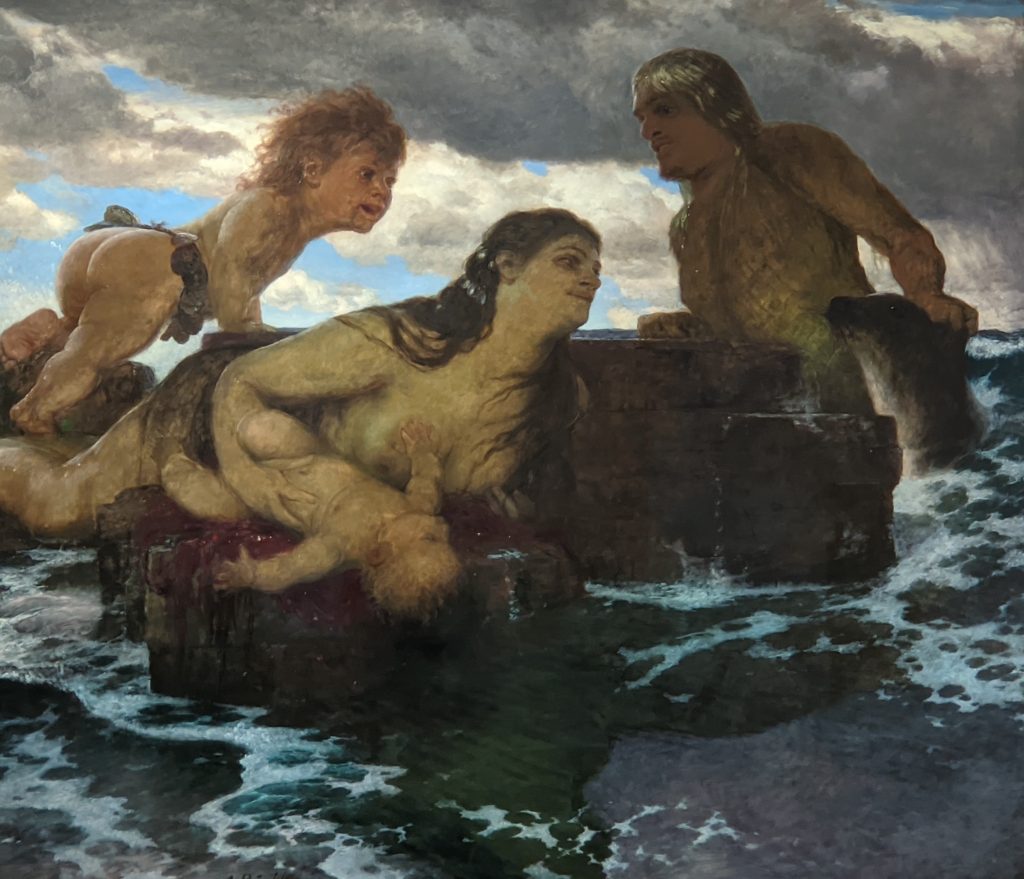
Symbolist Painters
Today, Gustav Klimt is best known as an Austrian Symbolist and the most prominent painter within the Vienna Secession movement. The symbols used by such artists contain references that are private and intensely personal (representing a departure from realism and traditional iconography). Painters associated with Symbolism employ mythological or dream imagery to convey hidden meanings. They believe art should represent absolute truths which can only be described “indirectly” — a symbolist painting may therefore look realistic, however, in actuality the painting represents a non-visual idea.
European artists in the Belvedere’s collection who embraced Symbolism before Klimt include Arnold Böcklin and Fernand Khnopff. “Still Water” (below) by Khnopff was painted in 1894.
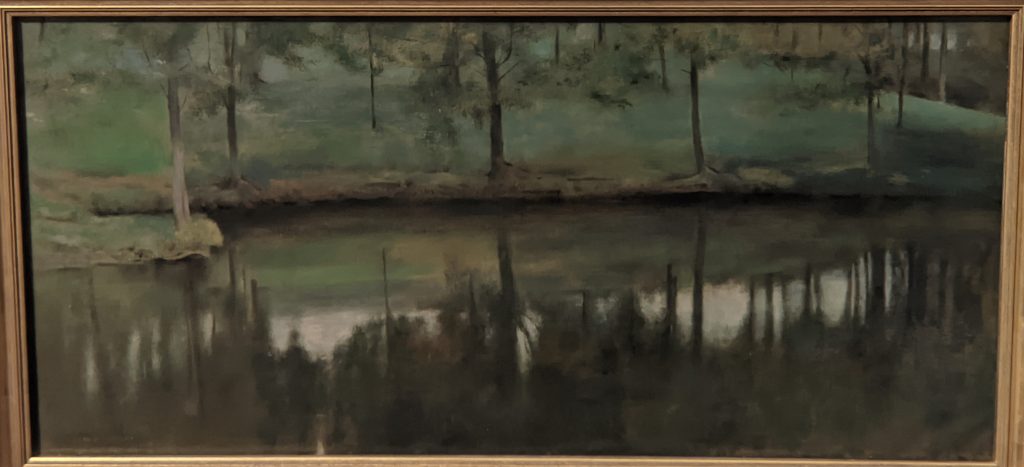

The Upper Belvedere’s art collection includes paintings by Segantini, Hodler, Koller-Pinell & Munch (above, left to right) & Rodin’s 1909 bust of Gustav Mahler
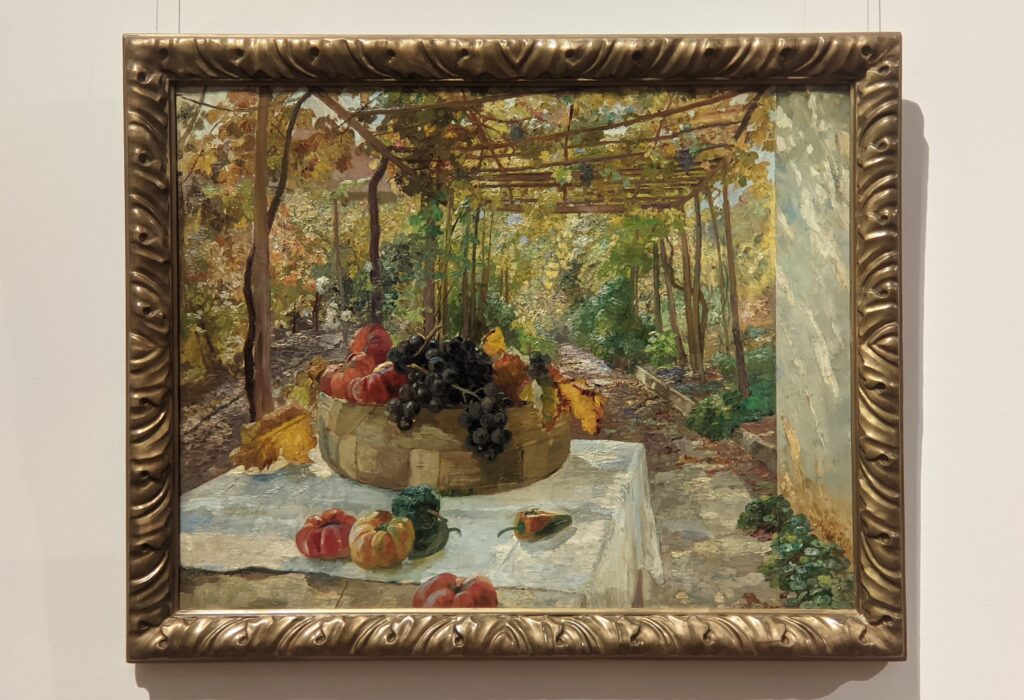
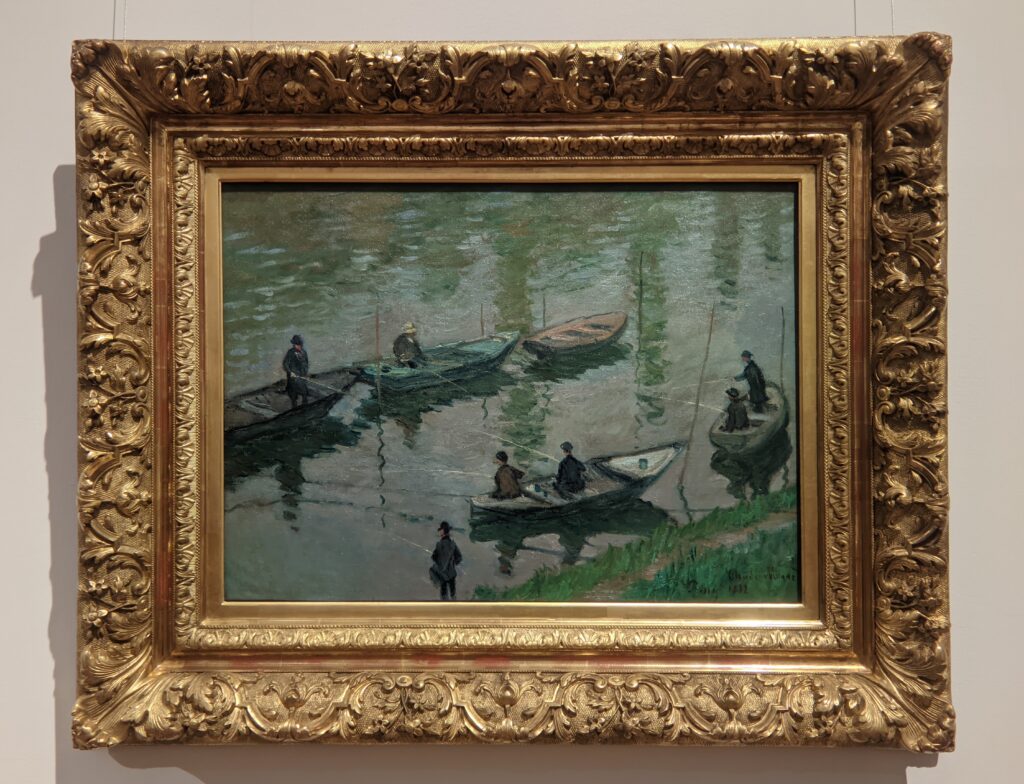
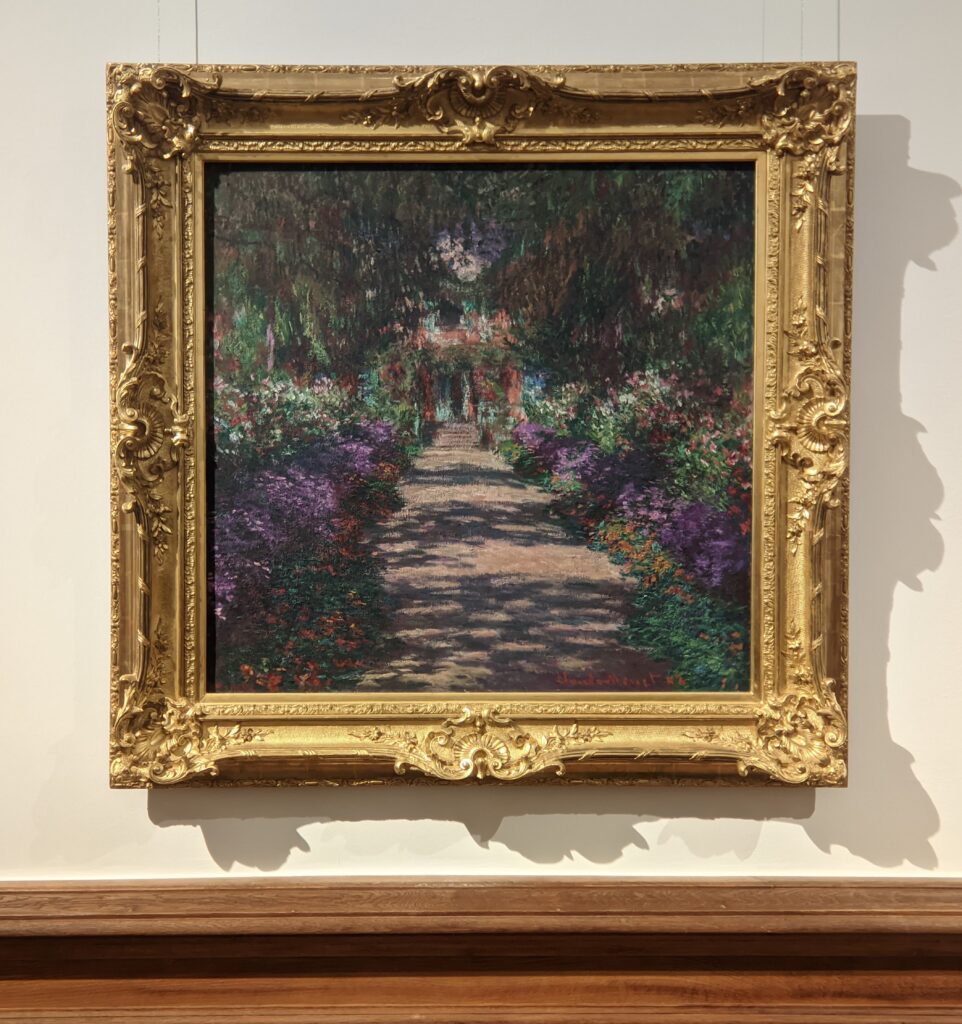
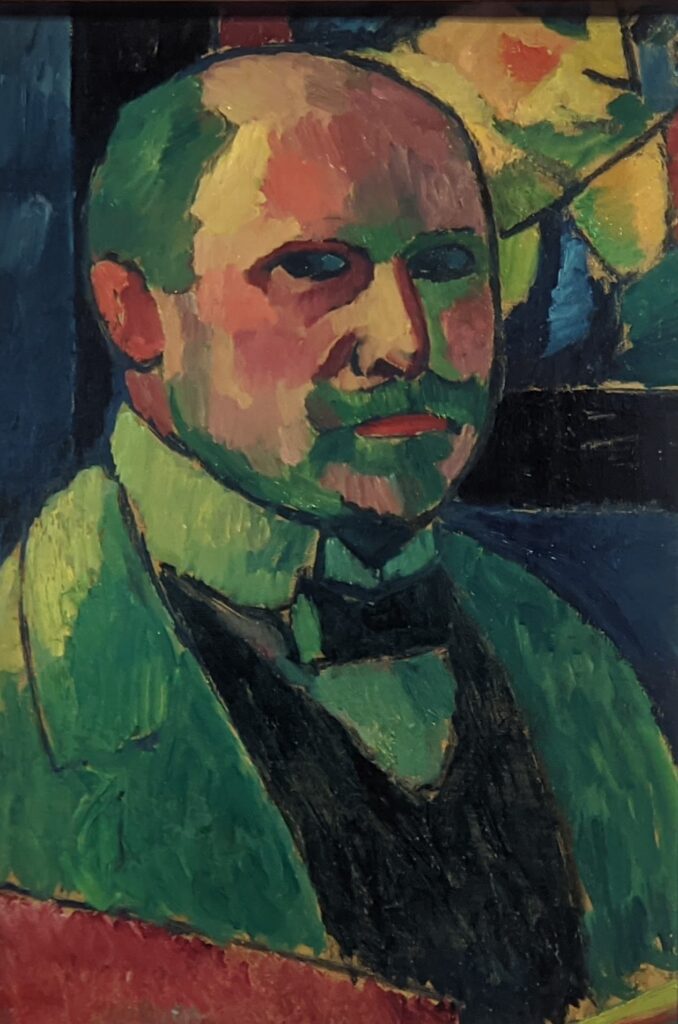




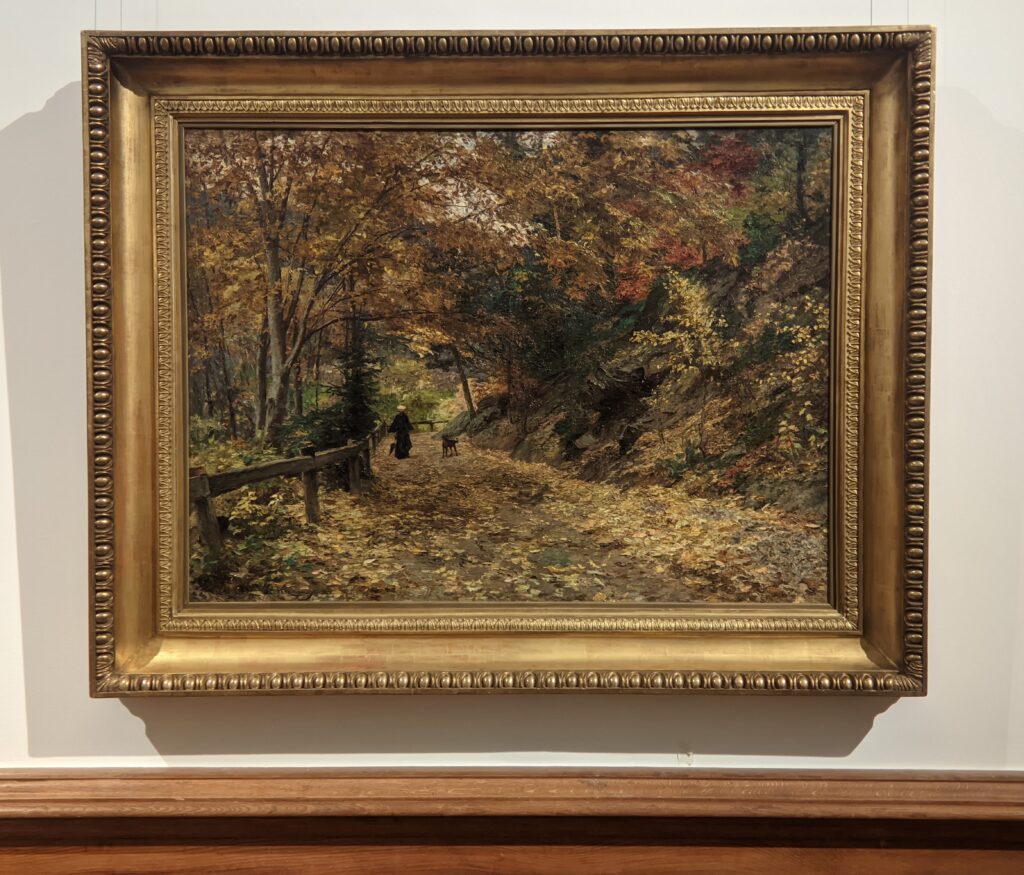

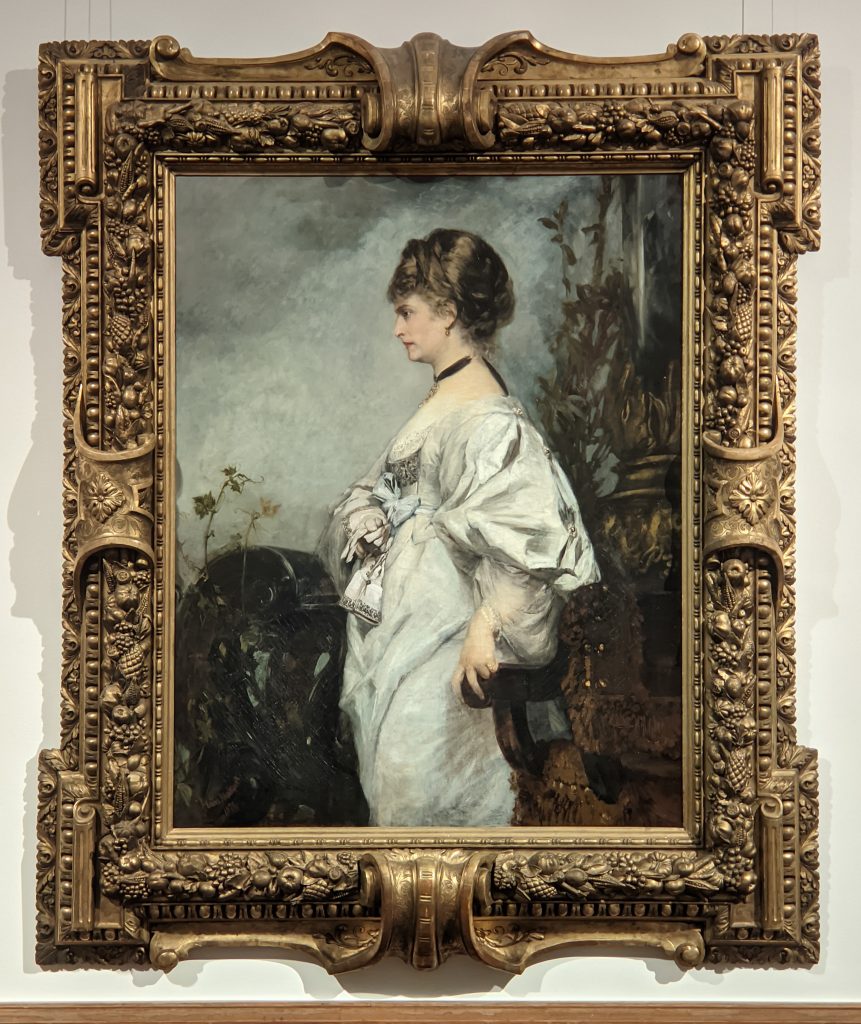
Highlights at the Belvedere Include Portraits by Makart
There is no doubt that Hans Makart (1840 — 1884) was idolized by Klimt; in fact Klimt spoke of his admiration for Makart’s “lavish Baroque design.” Makart’s training was entirely academic and all Germanic art of that period was under the rule of Classicism. Makart, however, possessed a sensual, passionate love of color. Forced to leave the rigid Vienna Academy, Makart relocated to Munich, where he developed his own style: large-scale history paintings where the importance of decorative qualities (brilliant colors, fluid forms) prevailed. Makart would return triumphantly to Vienna, where in the 1870s he was the acknowledged leader of the city’s artistic life, achieving cult-like adulation for moving the decorative, dramatic and sexually symbolic aspects of art to the forefront.
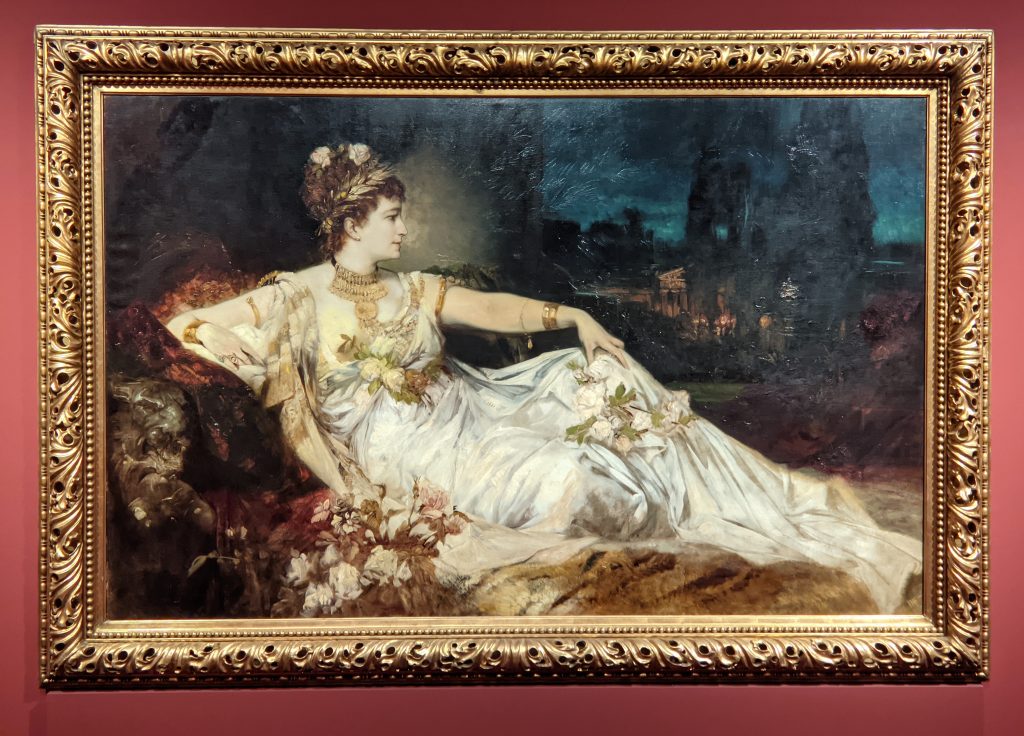
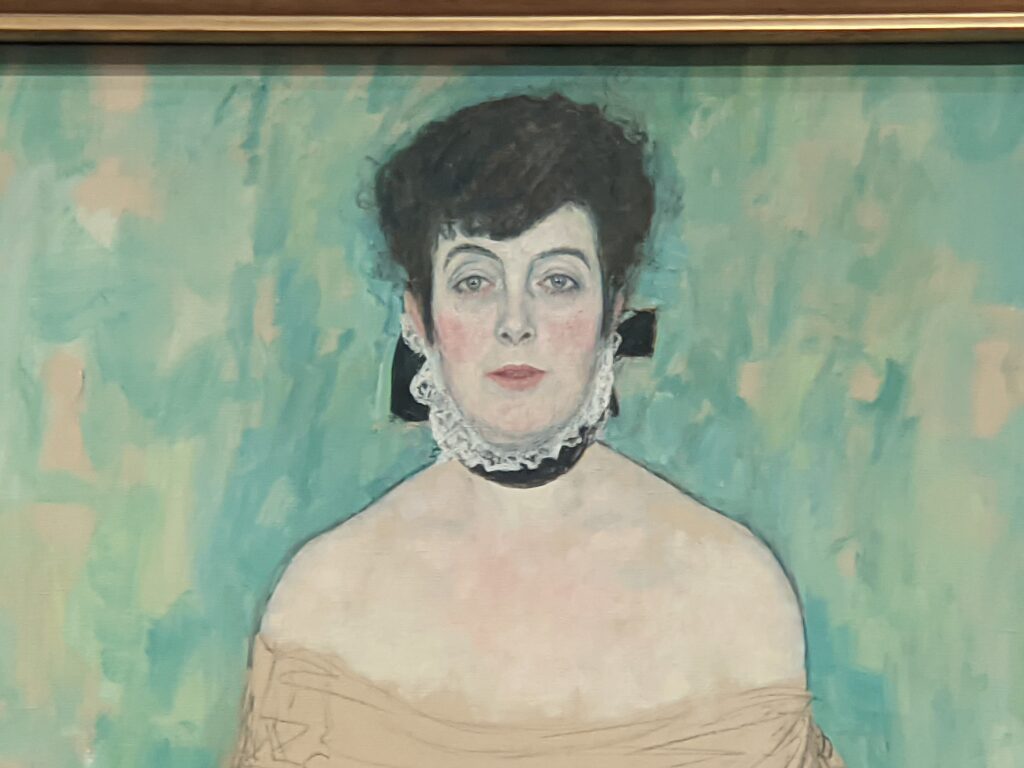

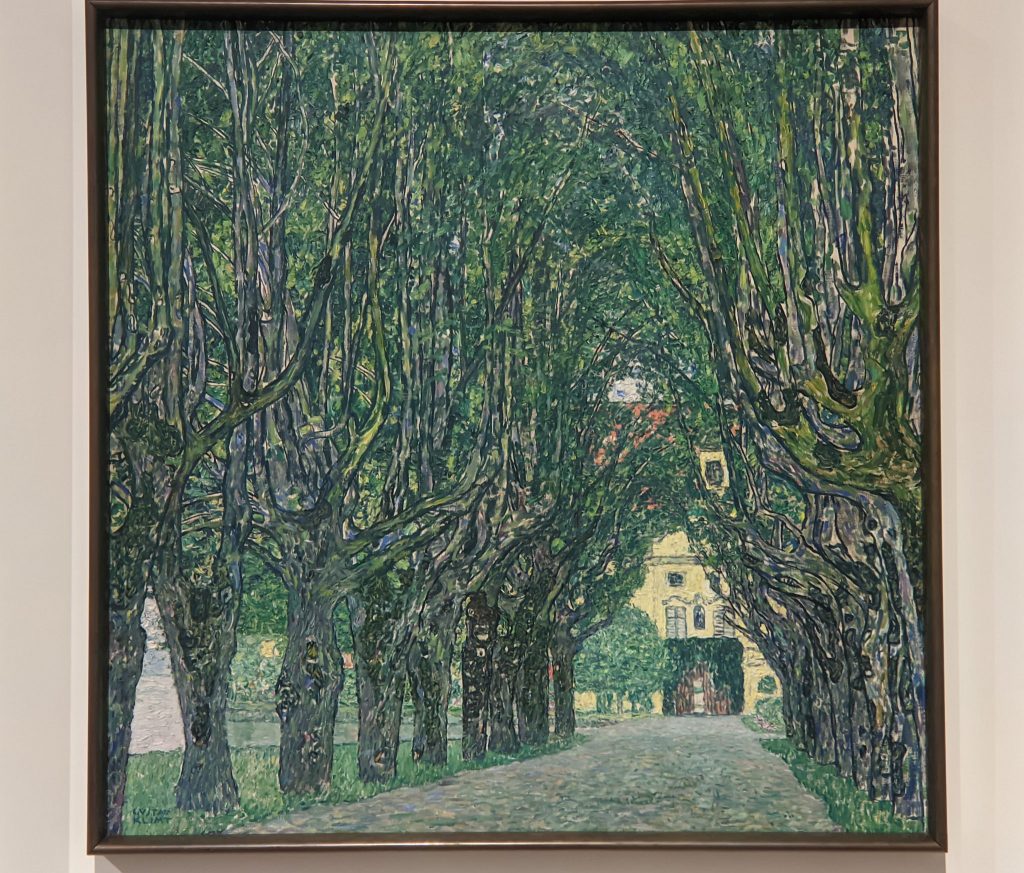
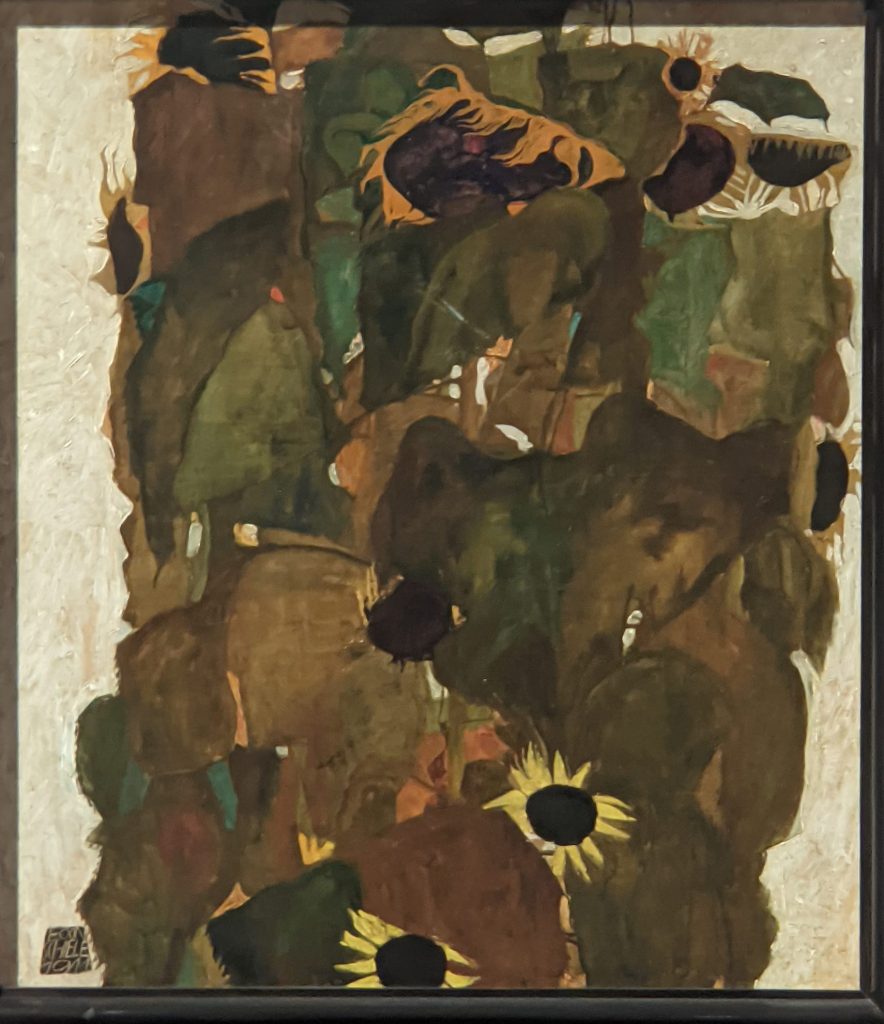
Klimt, Schiele & Van Gogh
It is well-known that Egon Schiele was invited by Klimt to participate in a 1909 exhibit at the Vienna Kunstschau, where Schiele encountered paintings by Vincent van Gogh, Jan Toorop, Edvard Munch and other painters for the first time. As a result, Schiele painted tributes to van Gogh’s Sunflowers.
Schiele’s late work turned darker — delving deeper into human emotions and psychology, revealing a marked distance from his earlier art nouveau-inspired aesthetic and Klimt’s decorative influence.
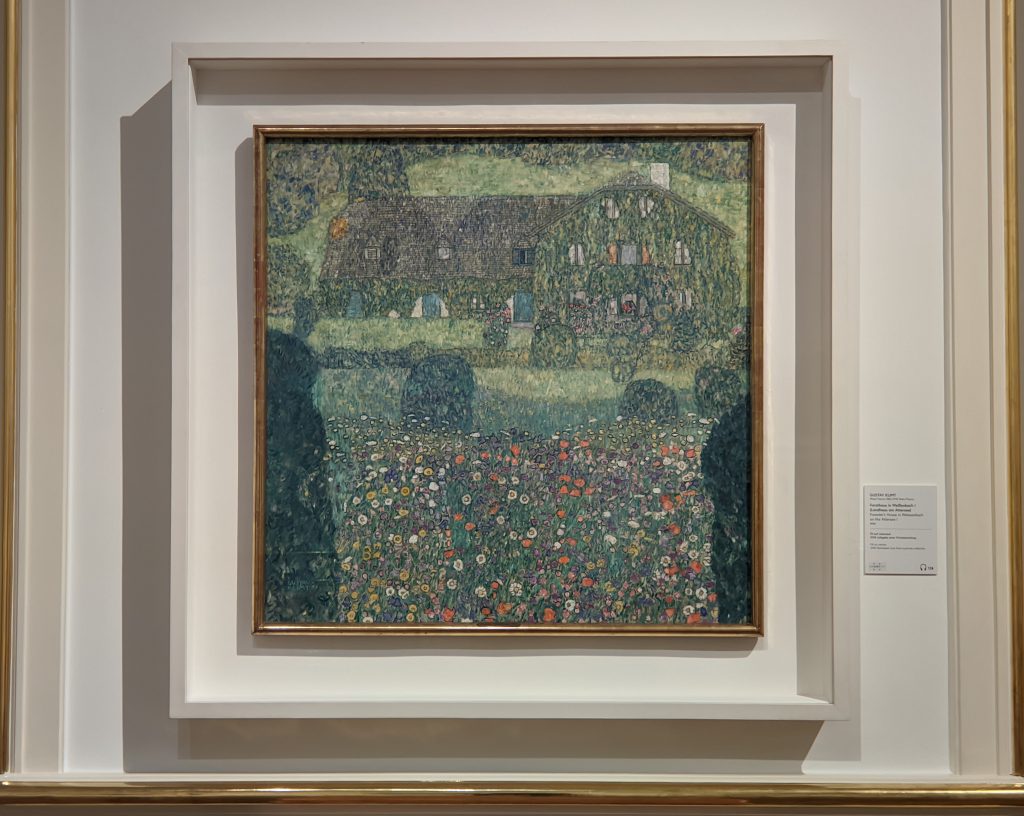
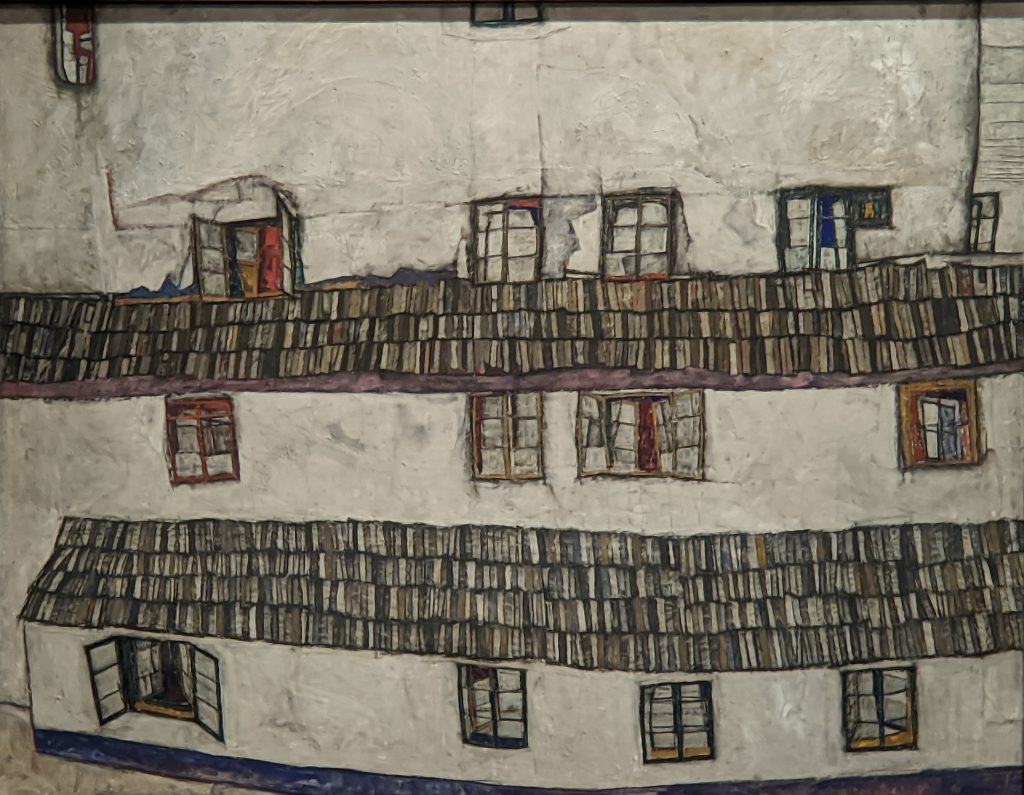
The Belvedere is the perfect place to begin your understanding of the body of work created by Egon Schiele and his mentor, Gustav Klimt. Schiele painted prolifically and participated in the Vienna Secession’s 49th exhibit (in 1918), which was an enormous success.
In 2011, one cityscape by Schiele sold for more than $40 million.
As a result of the 1918 influenza pandemic, Klimt experienced pneumonia and died from a stroke. “Emilie must come” were Klimt’s final words. Klimt left half of his estate to family members and the other half to Emilie.
Later, in the same year, Edith Schiele (the artist’s wife, who was six month’s pregnant) also perished from influenza; her baby did not survive. Three days later, Egon Schiele succumbed to the same viral infection. He was 28 years old.
Klimt’s body of work differed from the history paintings containing mythological subjects and classical themes of his predecessors because Klimt depicted his figures with human (not god-like) characteristics. His groundbreaking style injected sexuality and a uniquely expressive atmosphere into figurative painting. Egon Schiele remains a seminal artist in the development of Expressionism in painting.
CURRENT & FUTURE EXHIBITIONS AT THE BELVEDERE
Through February 25, 2024
“The Belvedere — 300 Years of Art”
It took more than a decade to build the Upper and Lower Belvedere palaces. Construction was completed in 1723. The Belvedere is reflecting on its history over the past 300 years, both as an architectural landmark and a museum for the presentation of culture, with a small high-quality show in the Lower Belvedere. Below, artwork from this exhibition’s original installation in 2023.

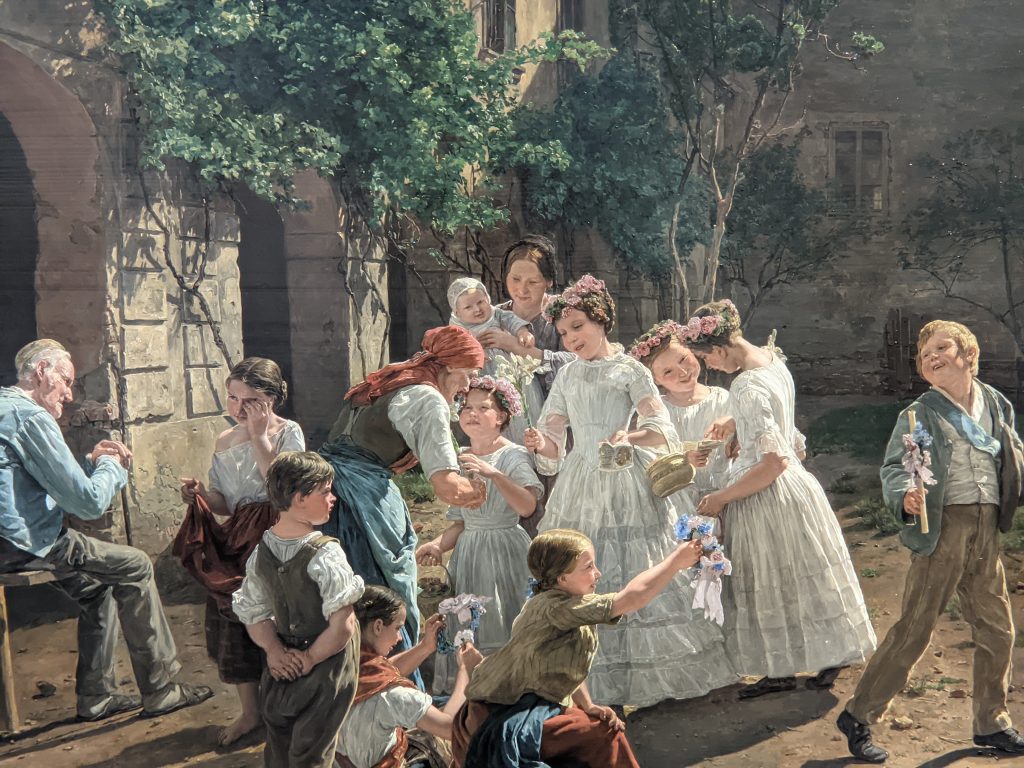


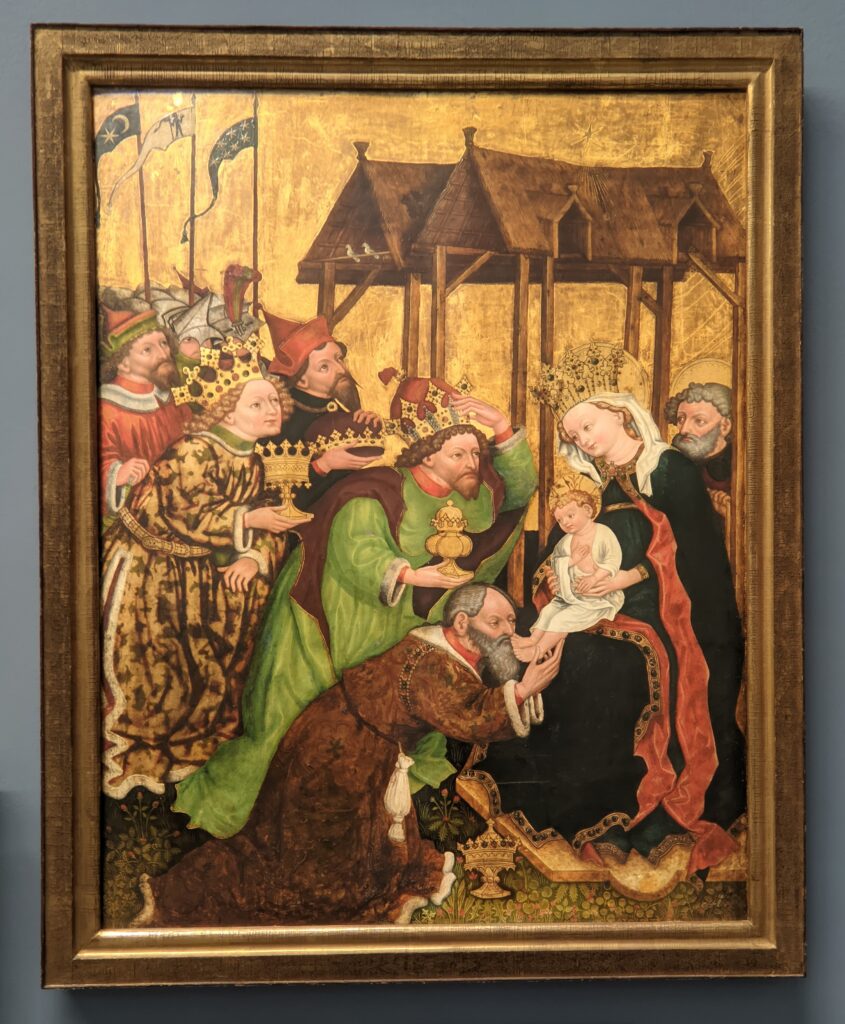
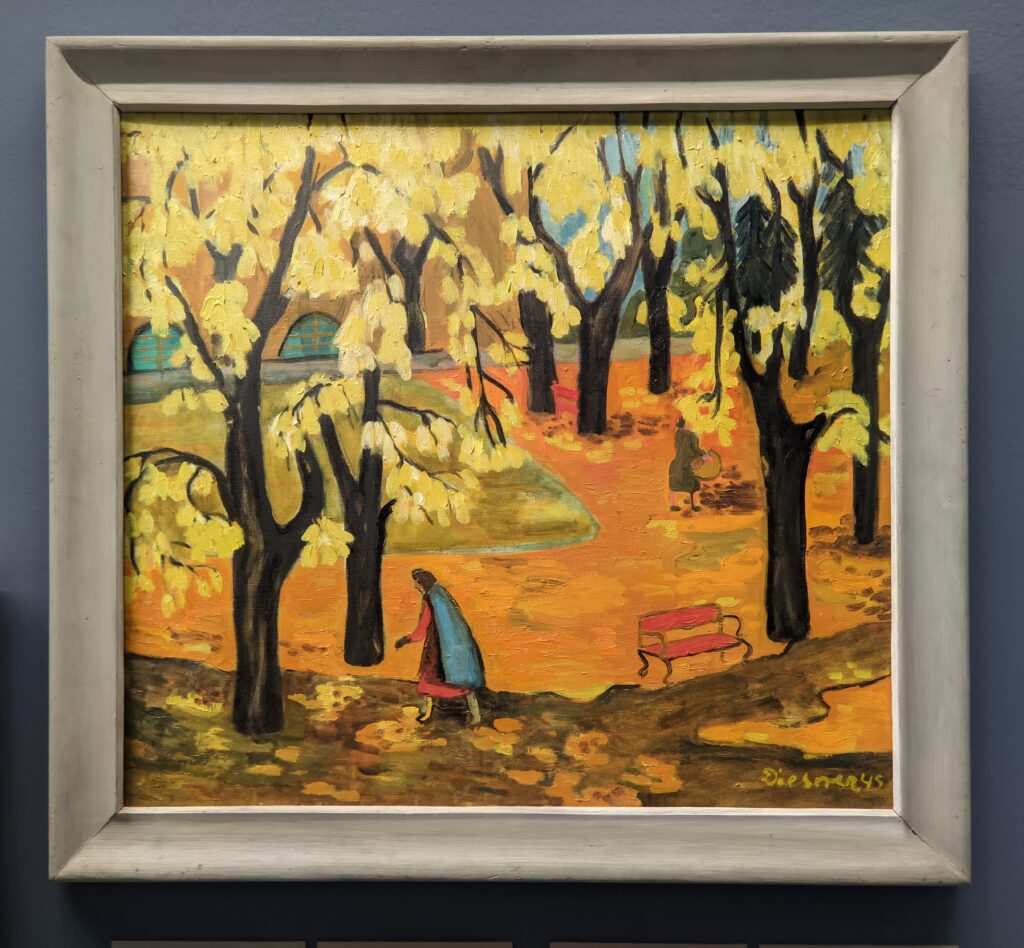
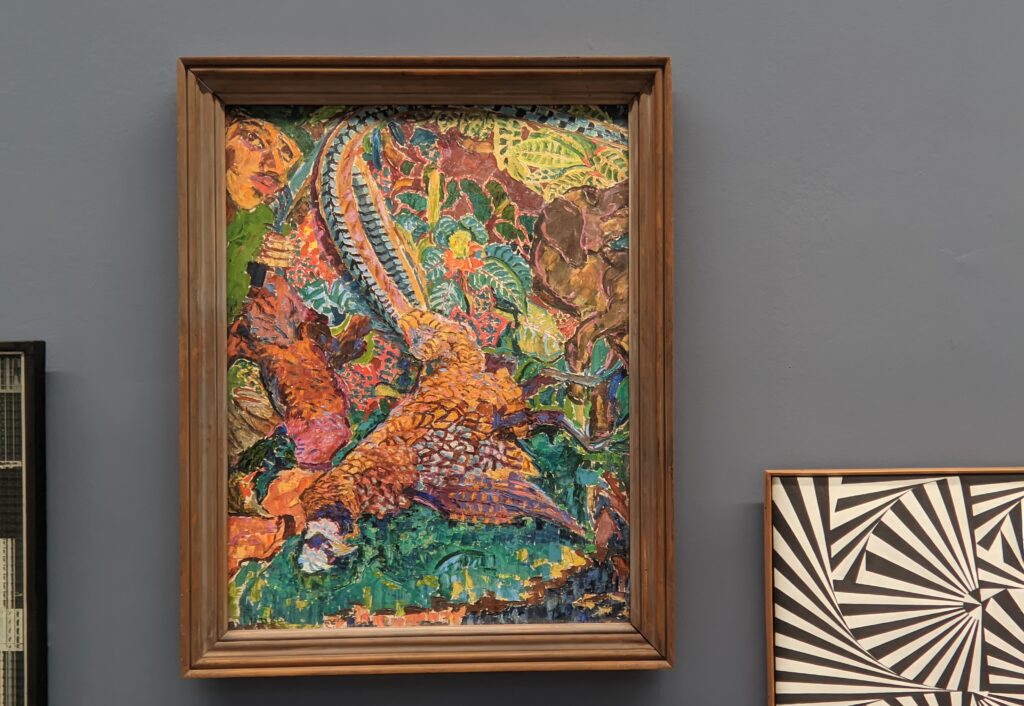

As you can see from these images, this small (and very interesting) exhibit surveyed 300 years of change in Austrian society — from the signing (shown above) of the “Treaty for the re-establishment of an independent and democratic Austria” (which re-established Austria as a sovereign state following years of foreign annexation and occupation after W.W. II) to the feminist artistry of Krystufek and her self-empowered philosophy “Anyone who looks needs to know that I look back.”
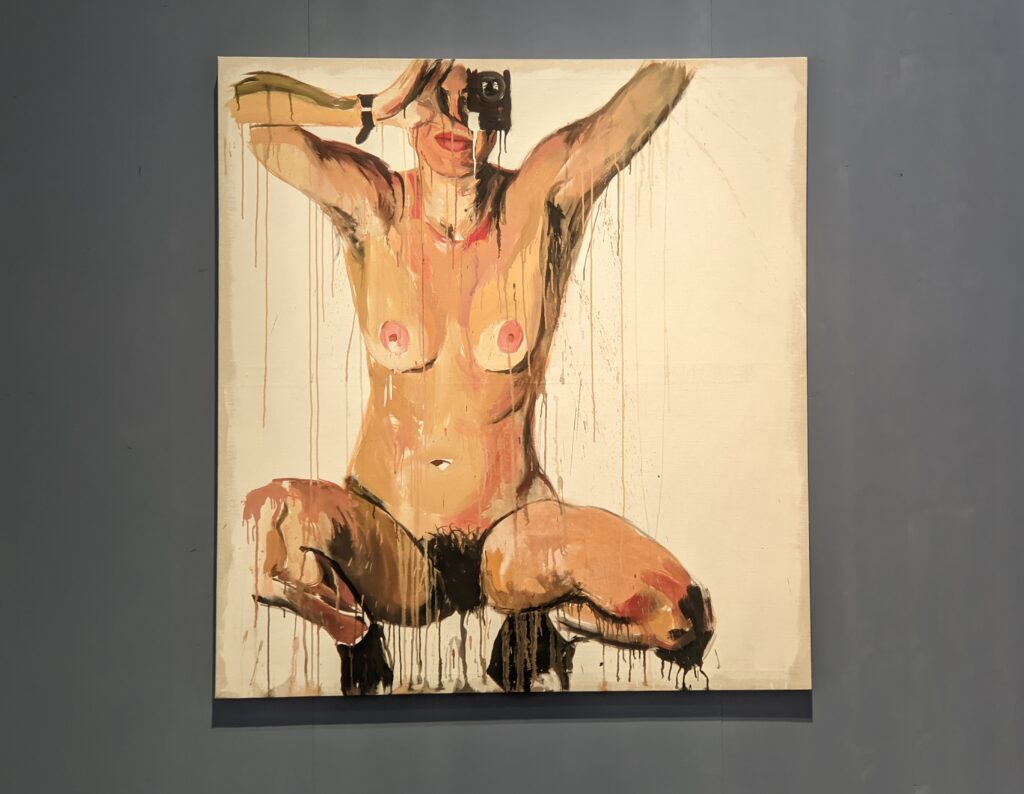
Louise Bourgeois — Persistent Antagonism
A retrospective devoted to the sculptures, drawings, paintings and prints of Louise Bourgeois may be seen from September 22, 2023 until January 28, 2024.
Broncia Koller-Pinell & Akseli Gallen-Kallela
From March 15 through September 8, 2024, a special exhibit will survey the progression (from the Impressionistic style of the Munich School to New Objectivity in the 1920s) of Broncia Koller-Pinell, one of the few women artists to have a presence in international exhibits of Austrian Modernism. A retrospective devoted to Akseli Gallen-Kallela will be on view from September 27, 2024 — February 2, 2025.
Previous Lower Belvedere Displays Included a Unique Klimt Exhibition

Through May 29, 2023, over 90 paintings from Austrian and European collections, including the Van Gogh Museum in Amsterdam, were on display at the Lower Belvedere in the exhibit entitled “Klimt. Inspired by Van Gogh, Rodin, Matisse…” This first-rate show included art by James McNeill Whistler, Lourens Alma Tadema, Jan Toorop, Margaret Macdonald Mackintosh and other prominent artists.
Research was conducted in recent years to learn which leading international painters and sculptors influenced the artistic development of Gustav Klimt. For example, it has been verified that Klimt saw the Van Gogh painting “The Plain at Auvers” (below) in Austria when it was exhibited at the 1903 Impressionist exhibition sponsored by the Vienna Secession.

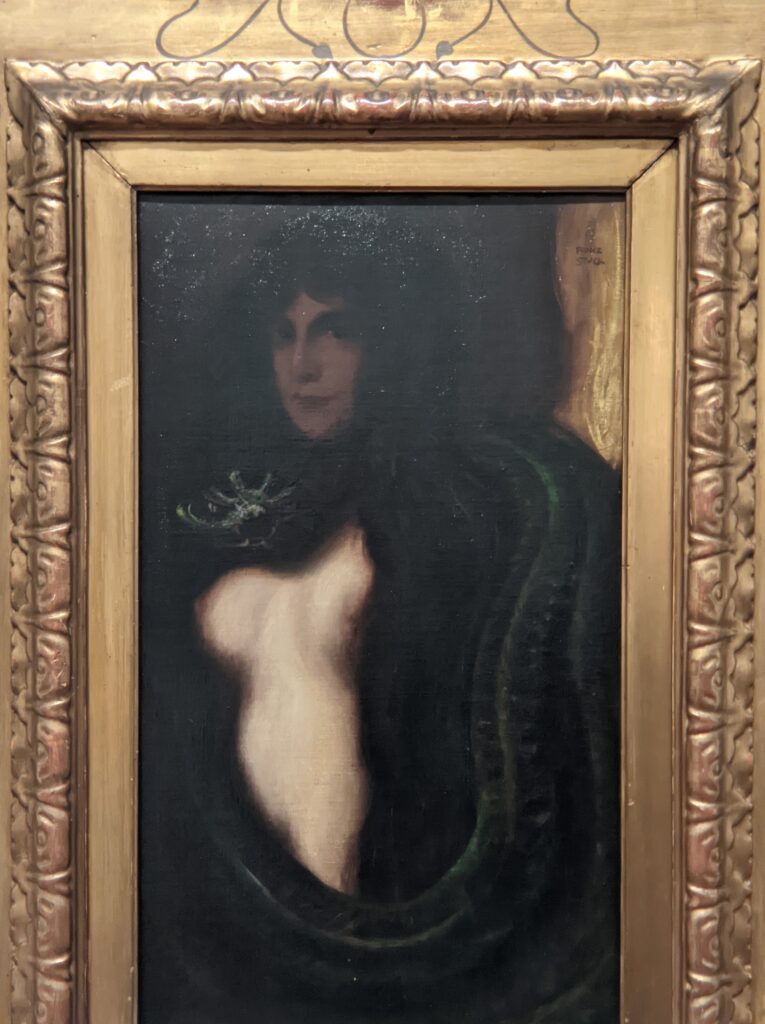
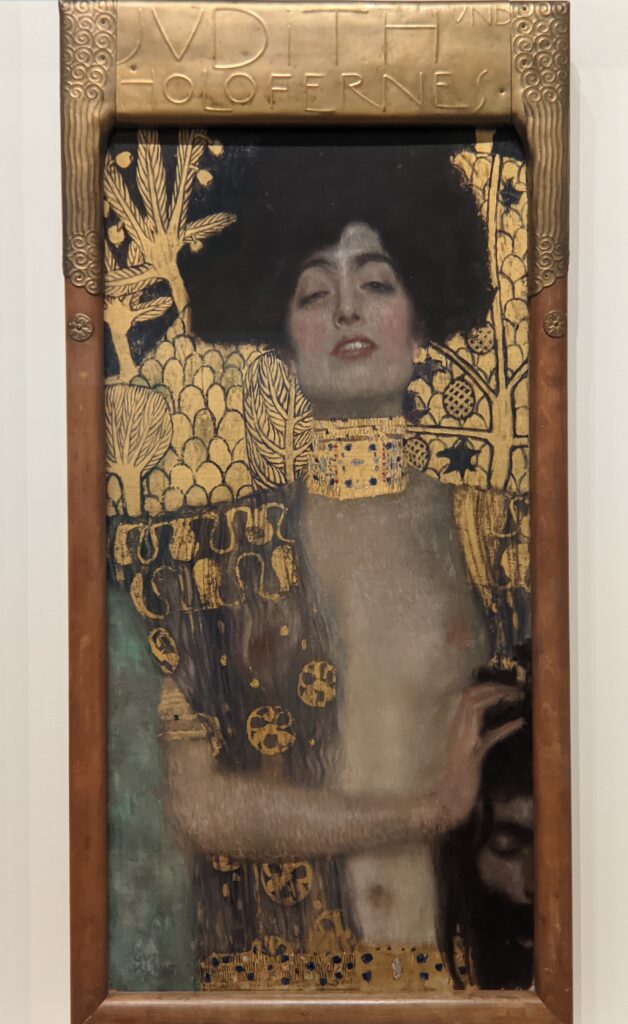
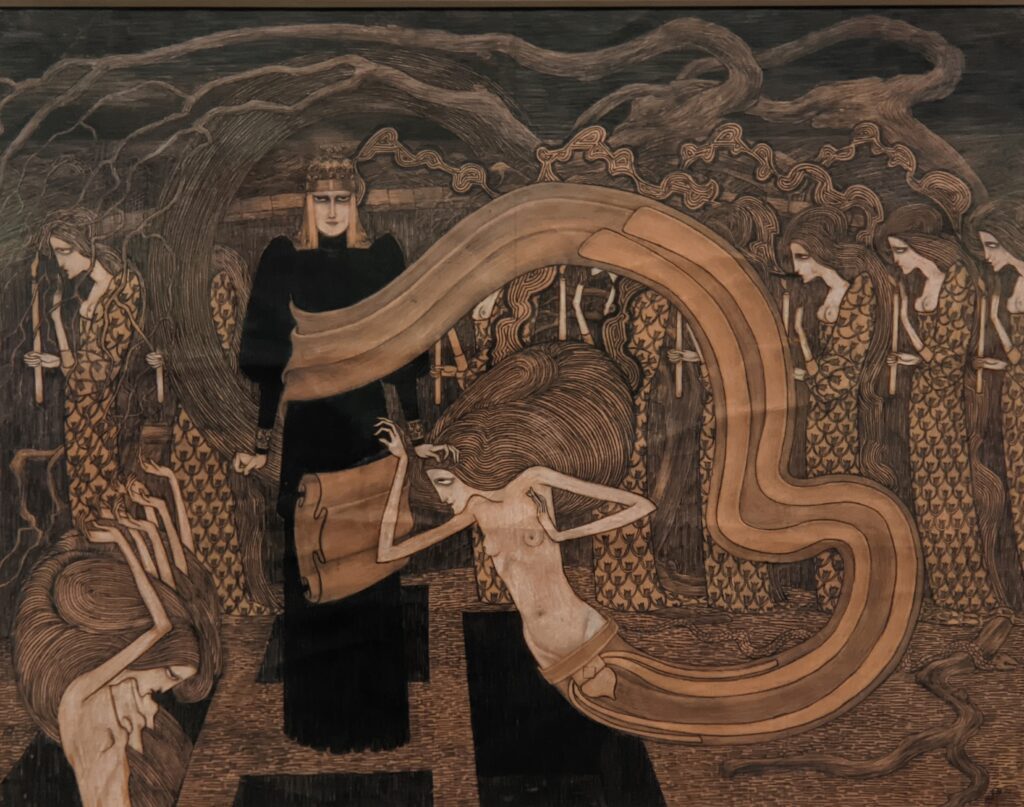


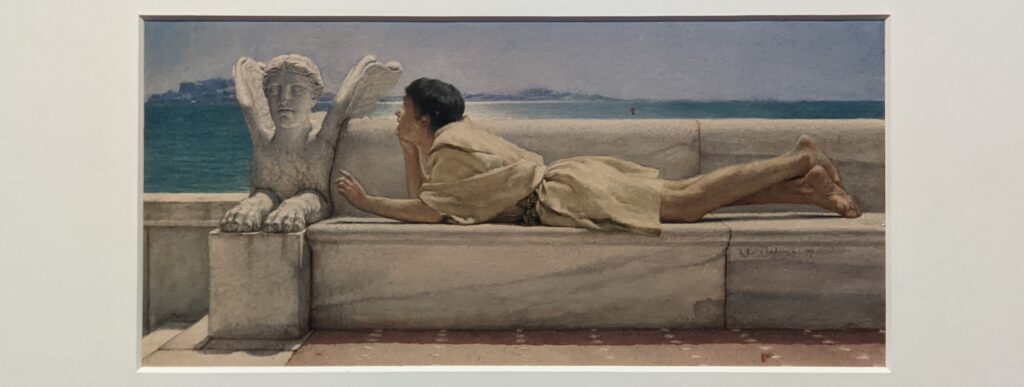
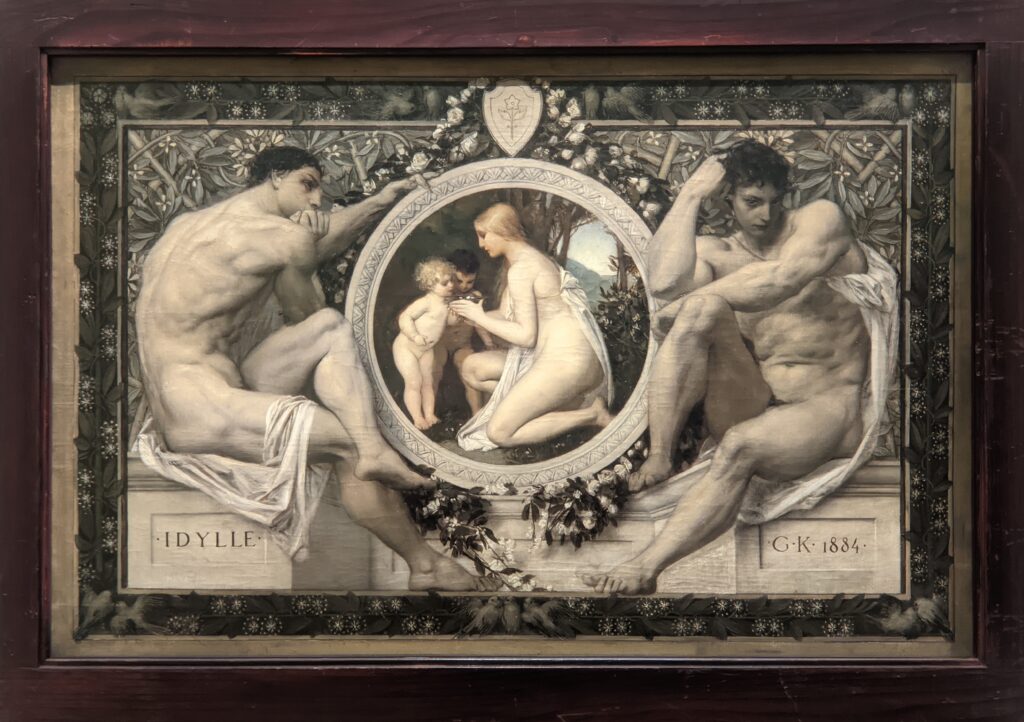
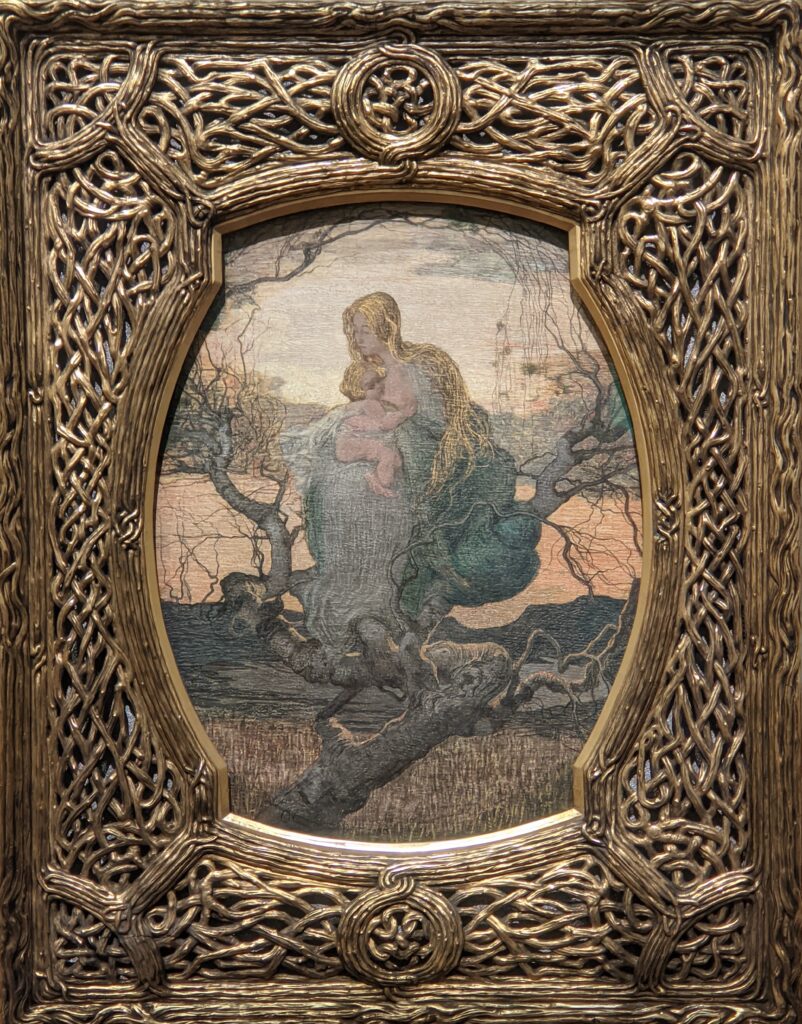

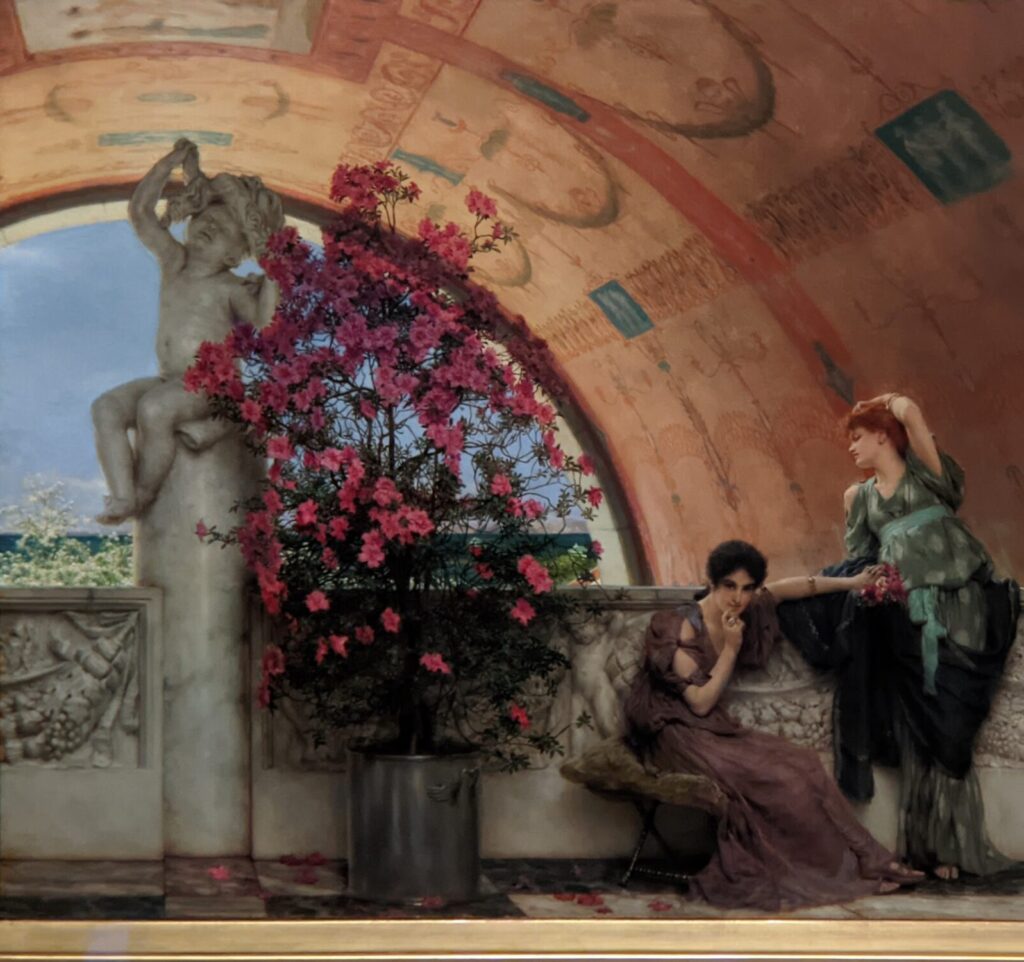
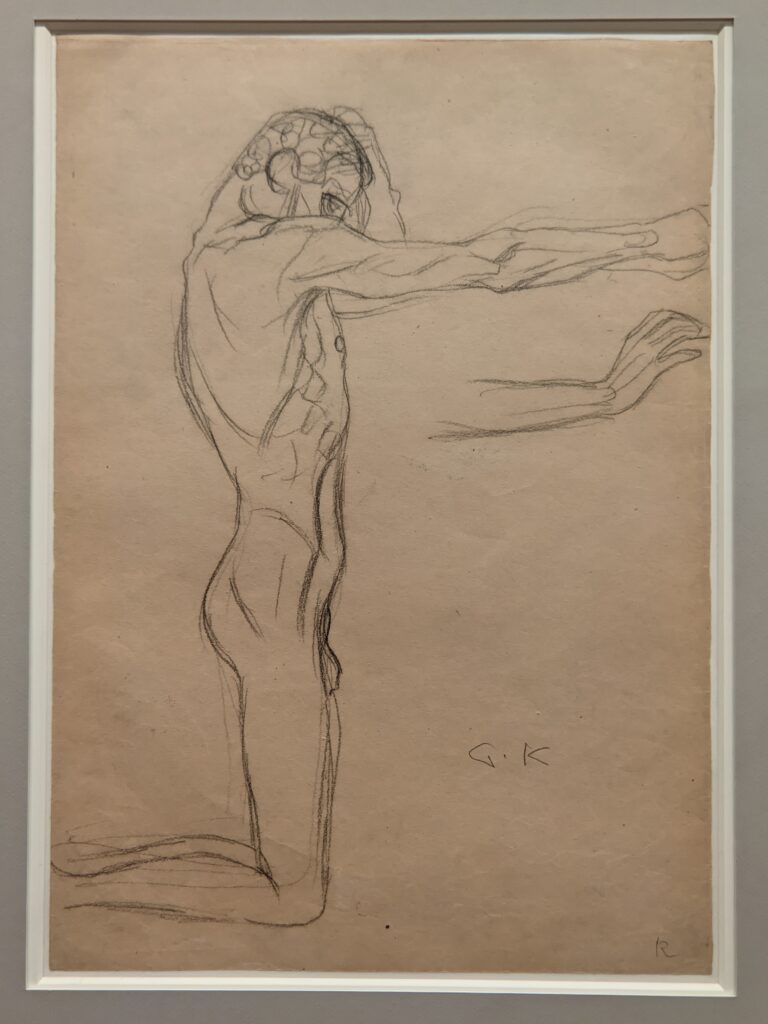

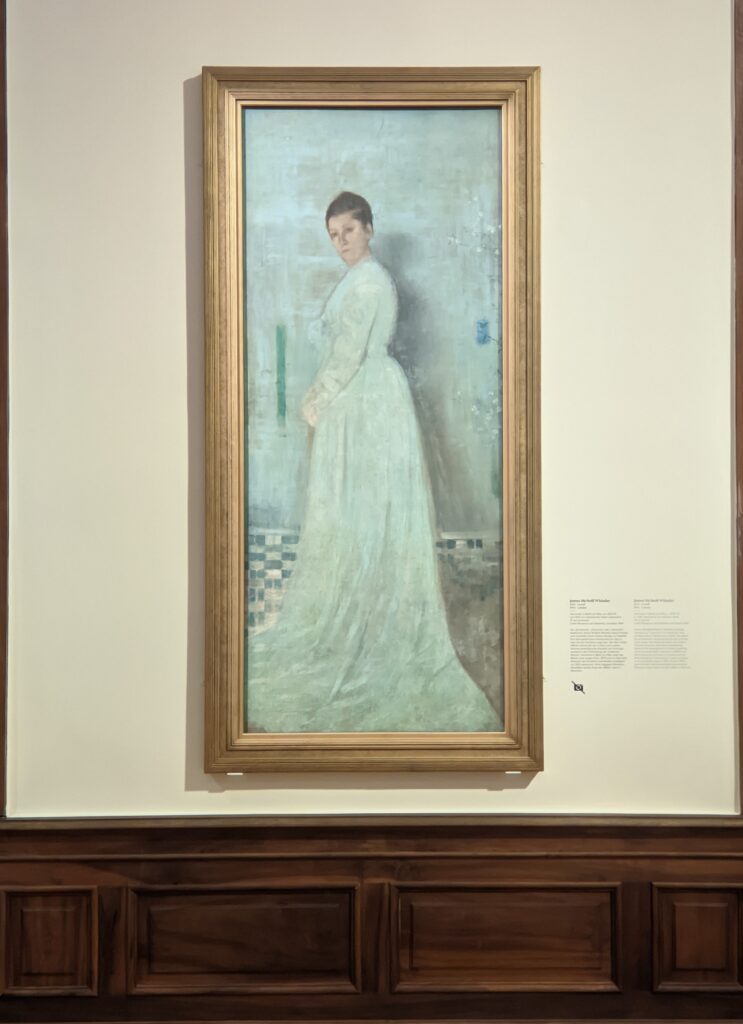

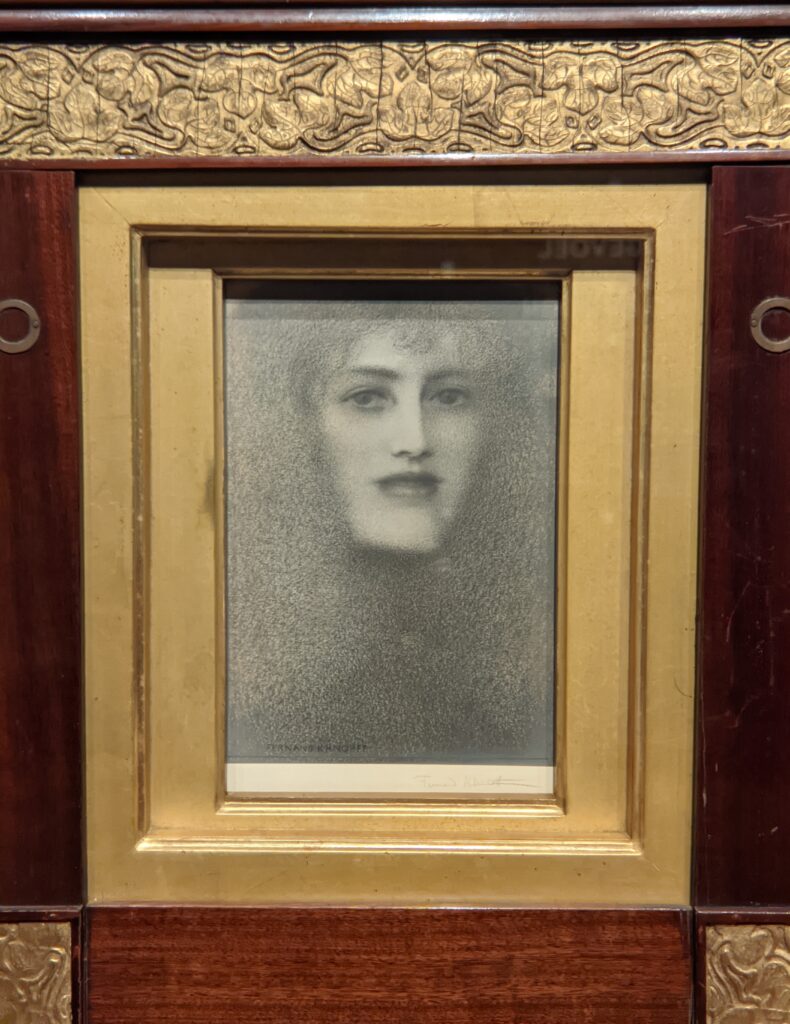
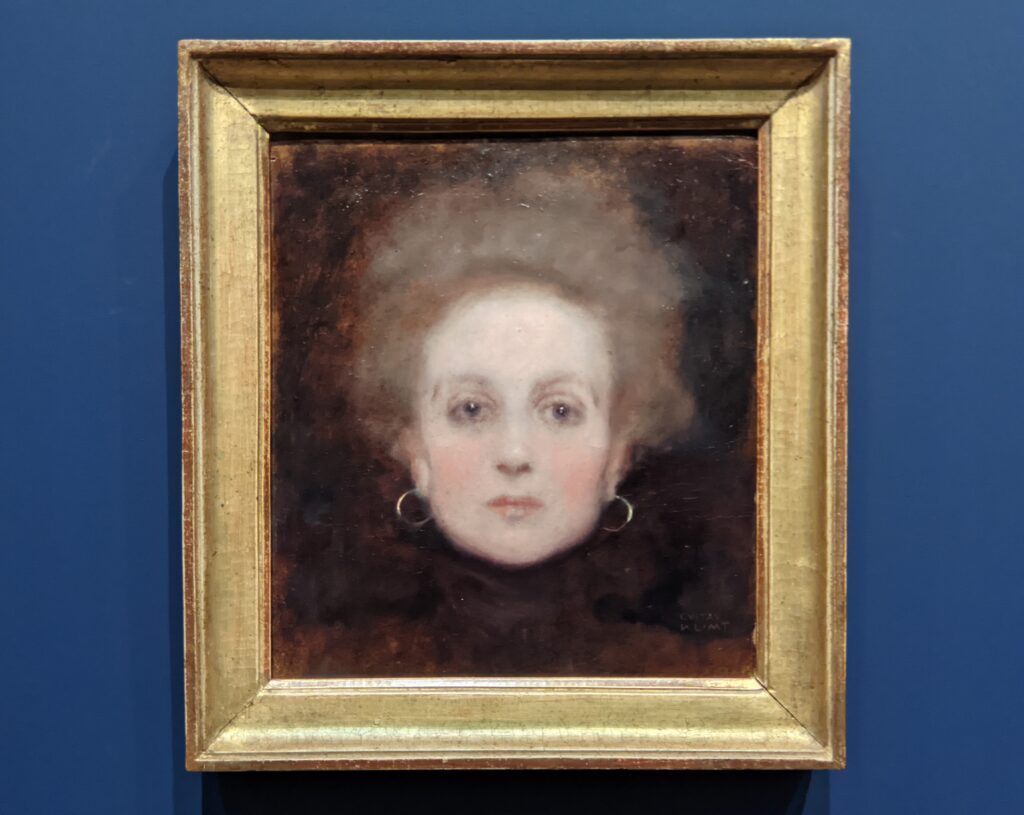
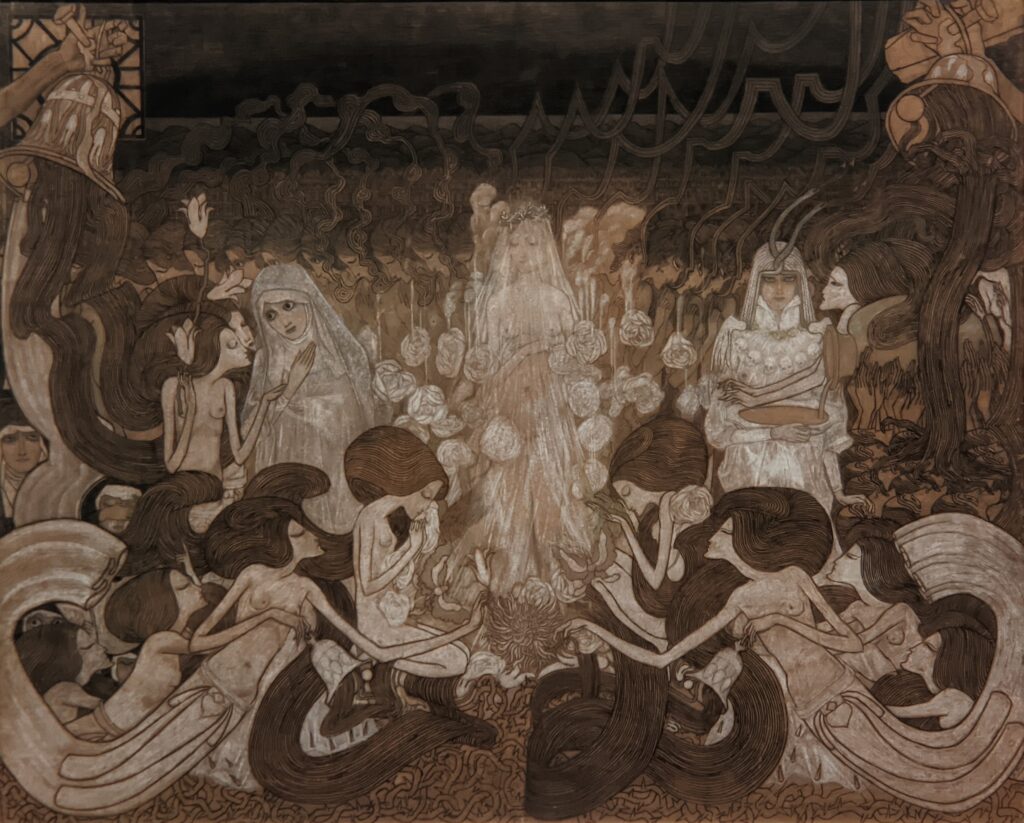
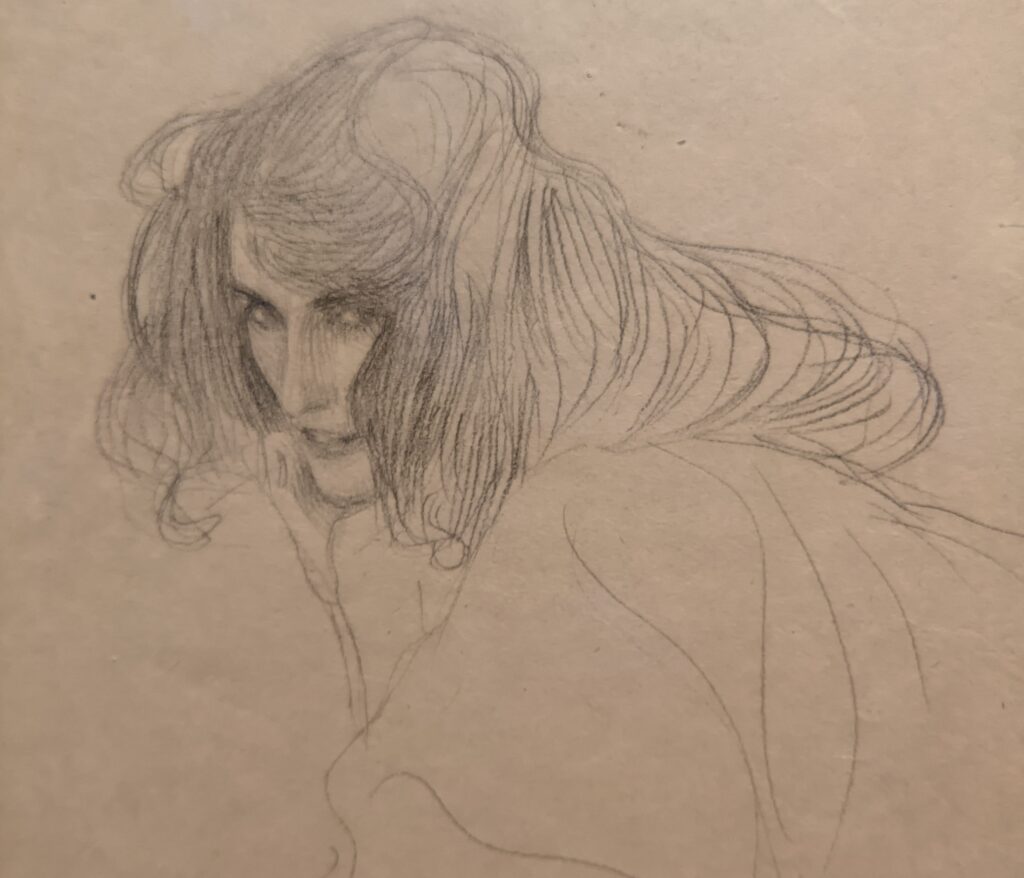




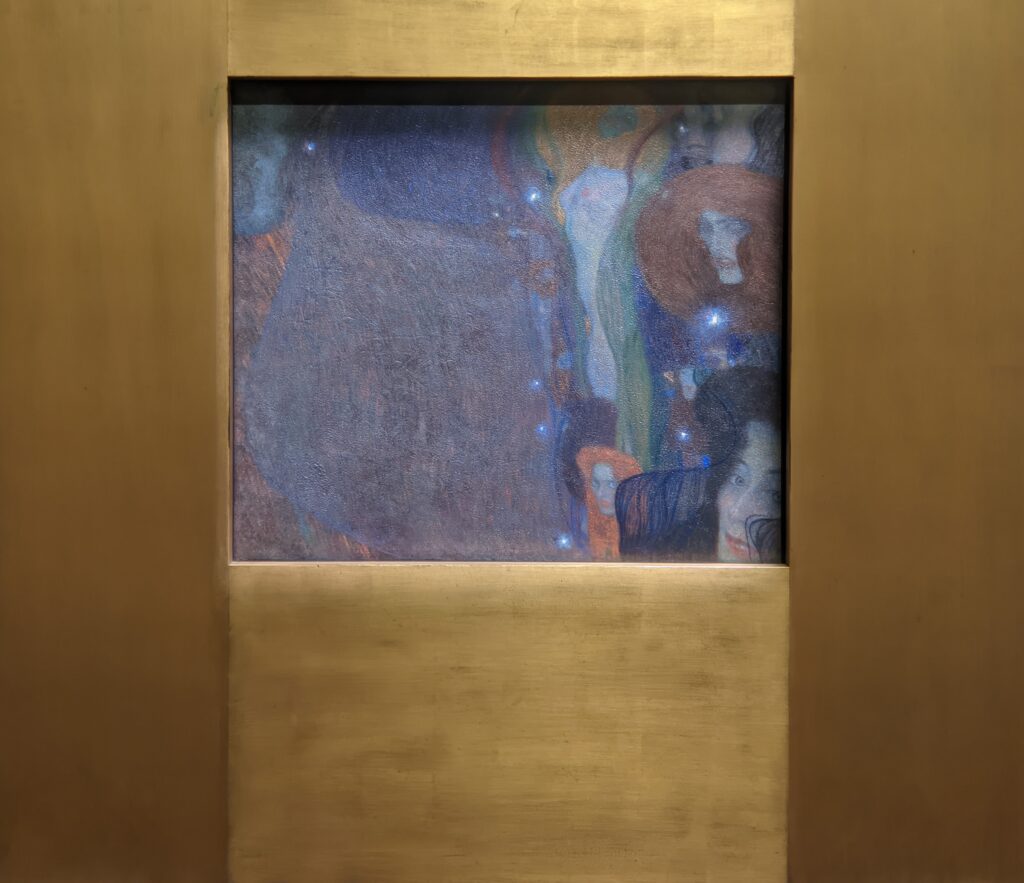
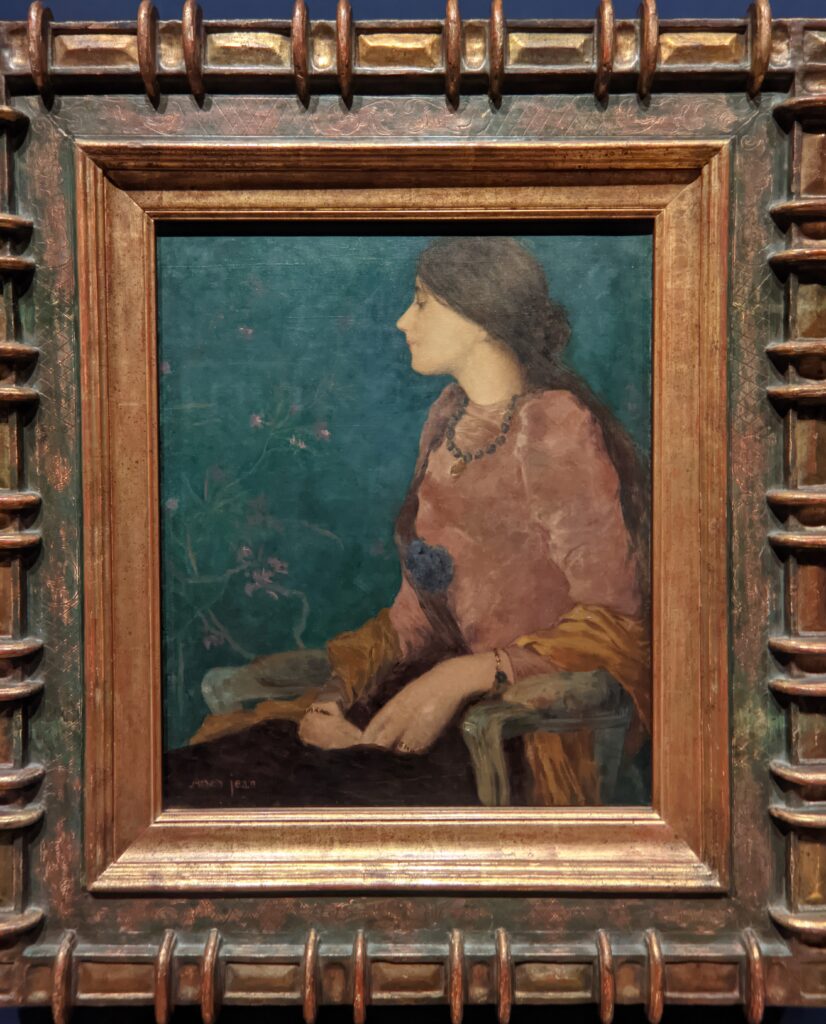

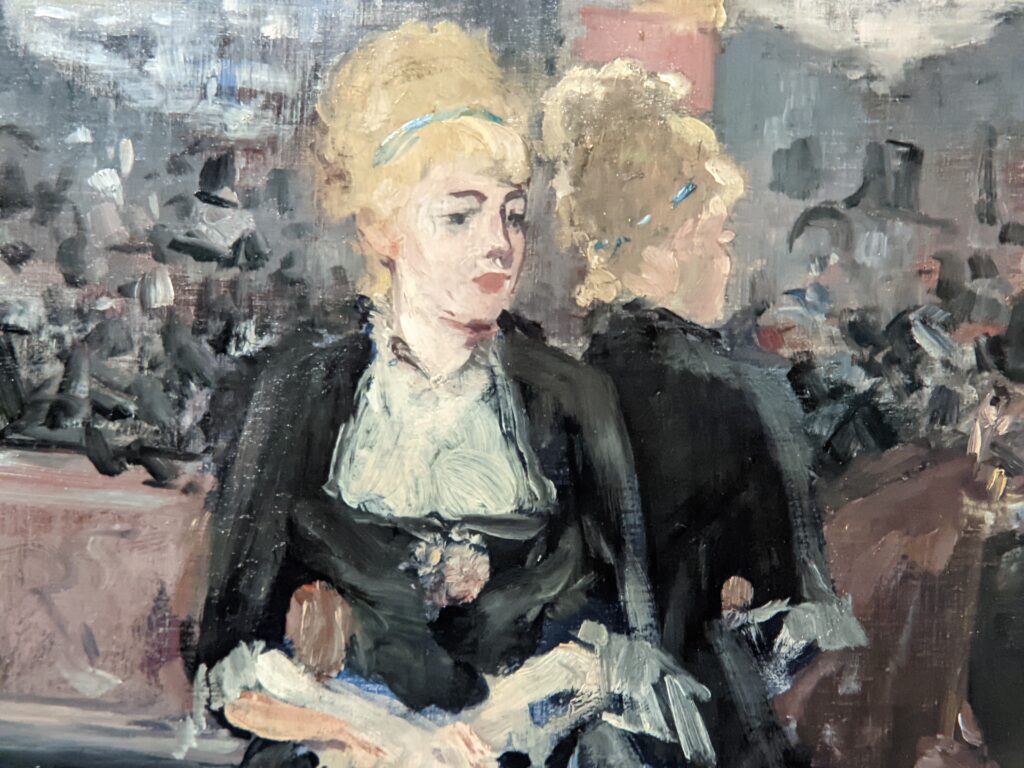


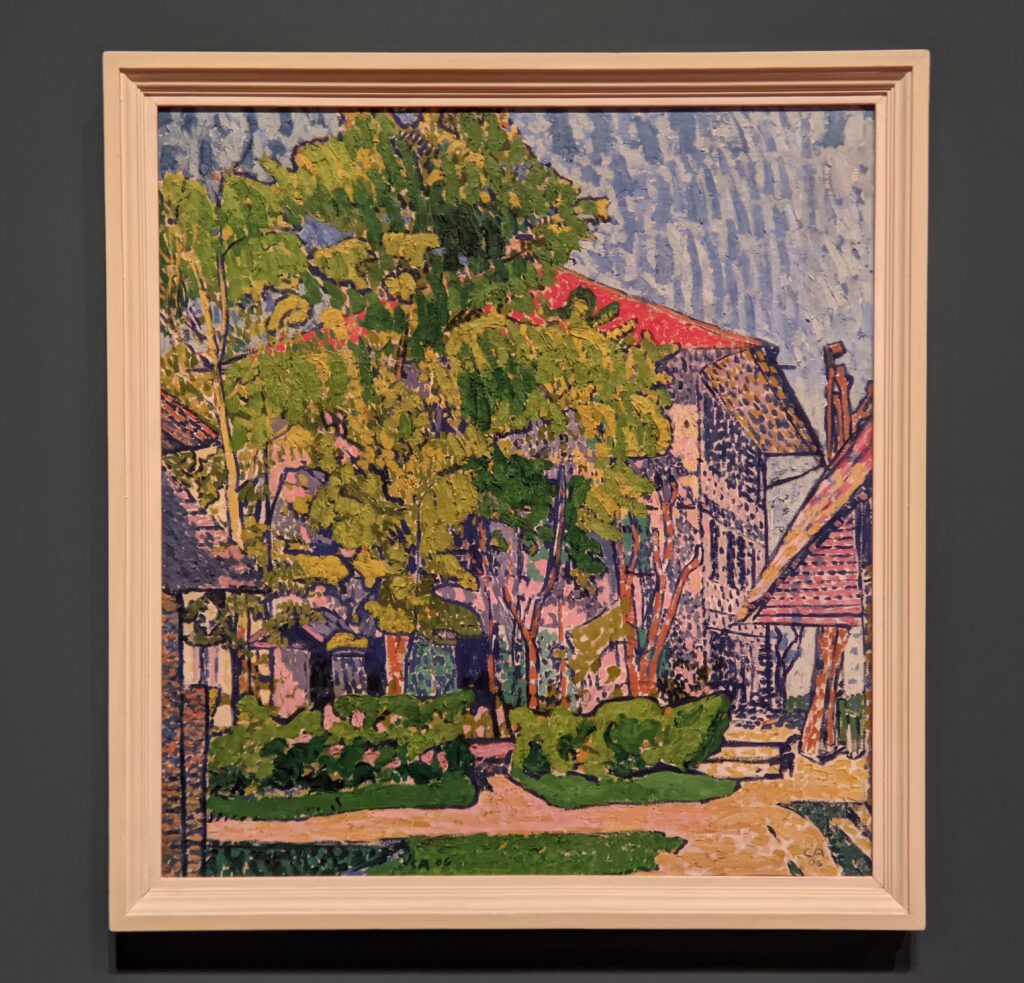
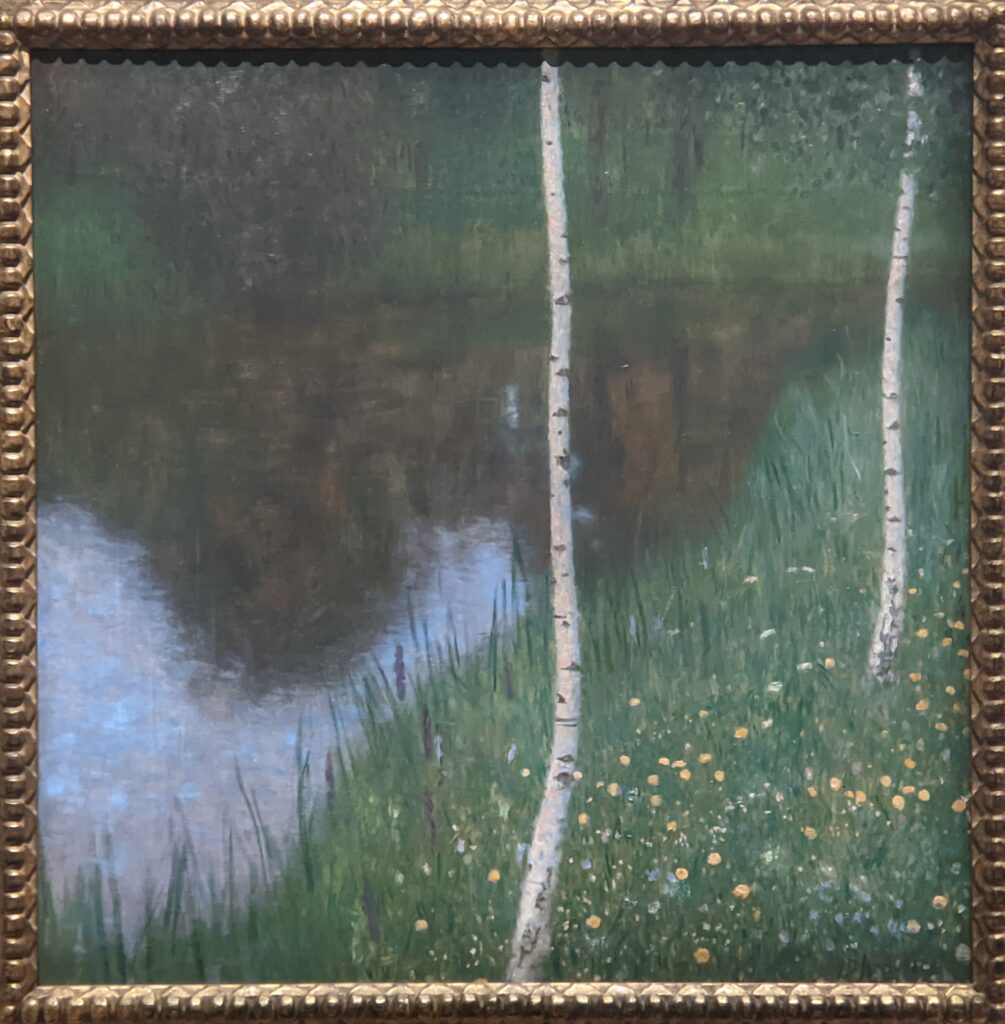

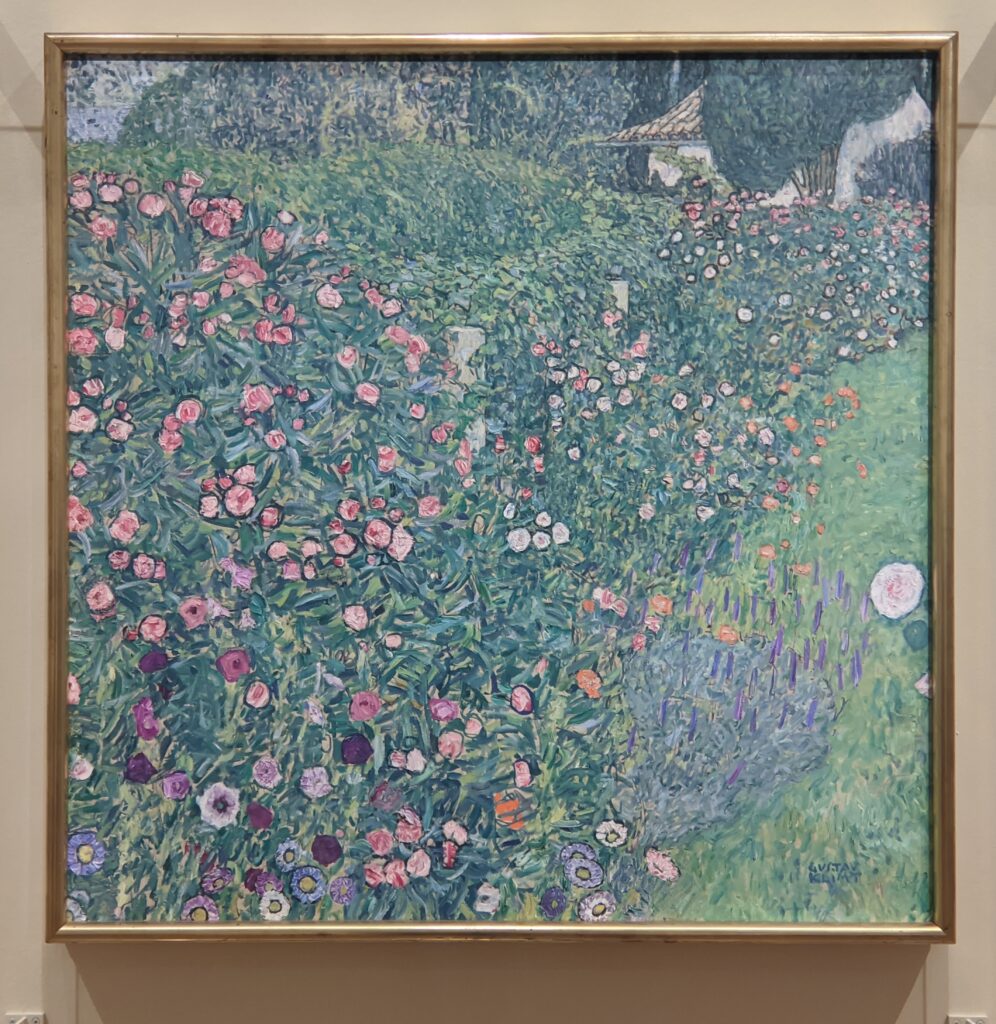
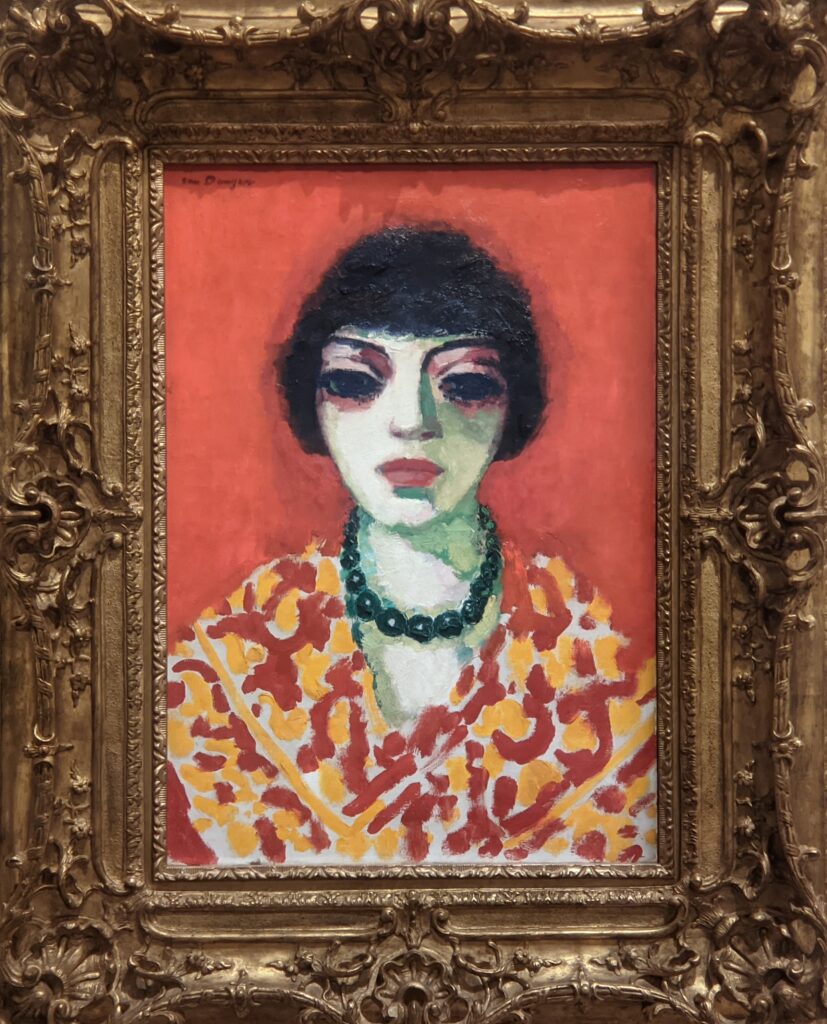
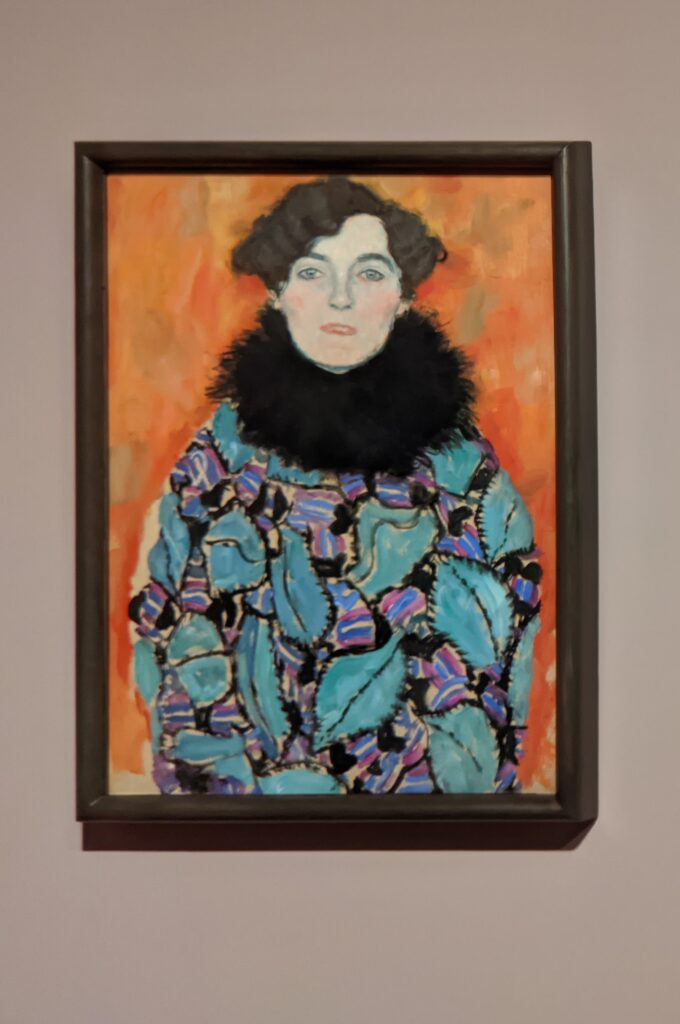
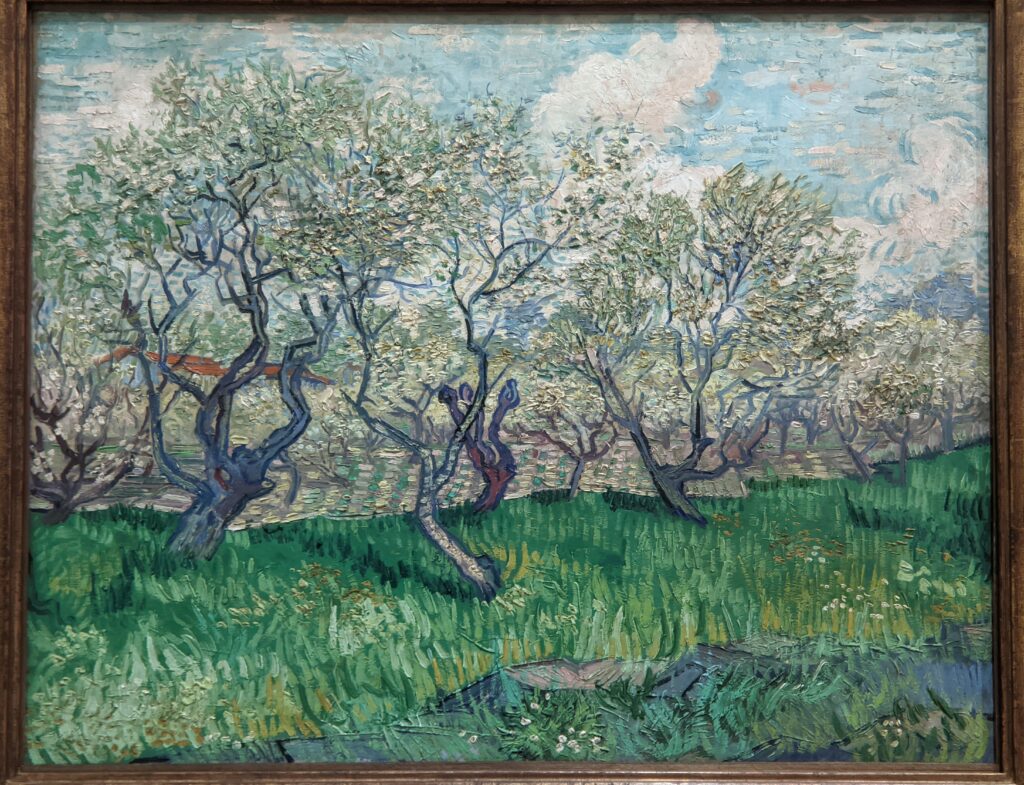
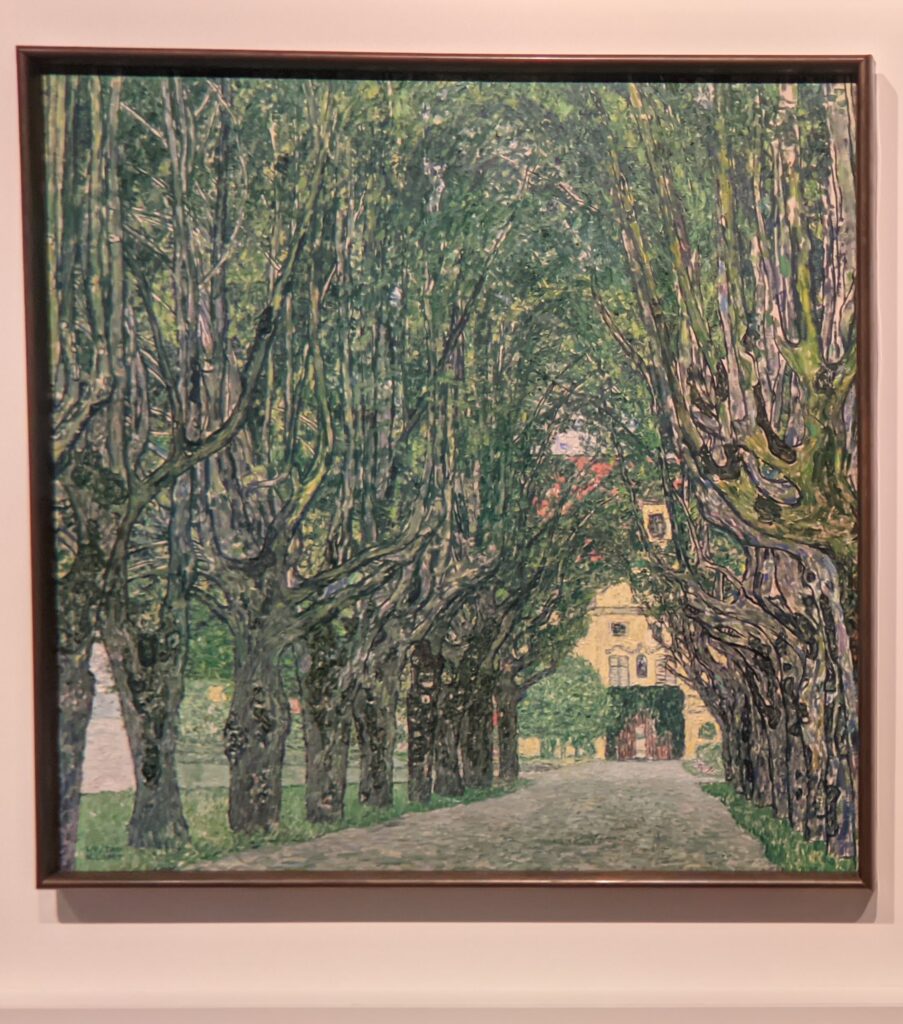

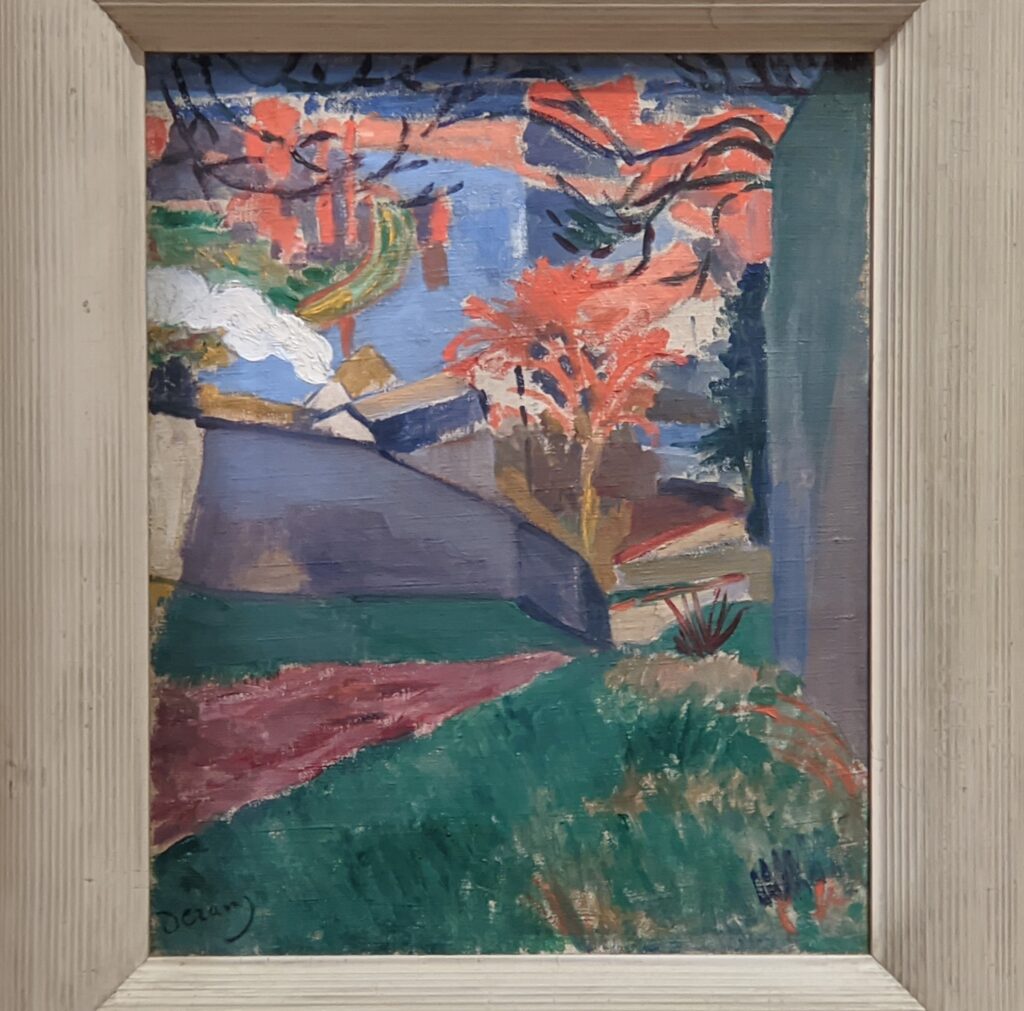
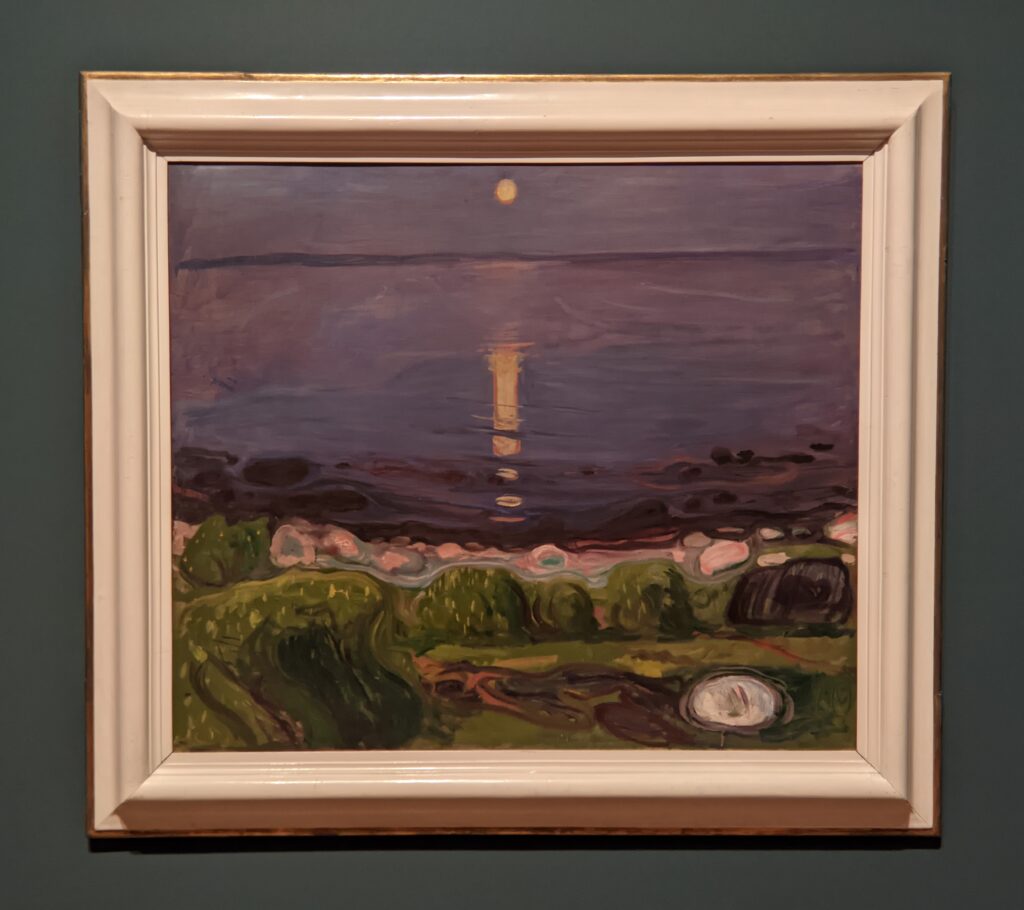
In 1904, the Secession exhibited 20 works of art created by Edvard Munch. That exhibit included “Summer Night on the Beach” (above right), and it is easy to see how Munch’s sensual expression of emotions using colors and softly flowing forms in this nocturnal scene affected Gustav Klimt. Similarly in 1909 Klimt championed an effort to bring more artwork from the international avant-garde to Vienna. Excited by the new movements in art he had seen, Klimt visited Paris, the center of modern art at that time. The radical experiments in form and color by Matisse and the Fauves inspired Klimt to adopt a more expressive, liberated style of painting.


The looser brushwork and intense coloration adopted by Gustav Klimt in his late portraits demonstrate his enduring enthusiasm for French modernism, an affinity which is evident even in Klimt’s final painting “The Bride,” which was found unfinished on Klimt’s easel in 1918.

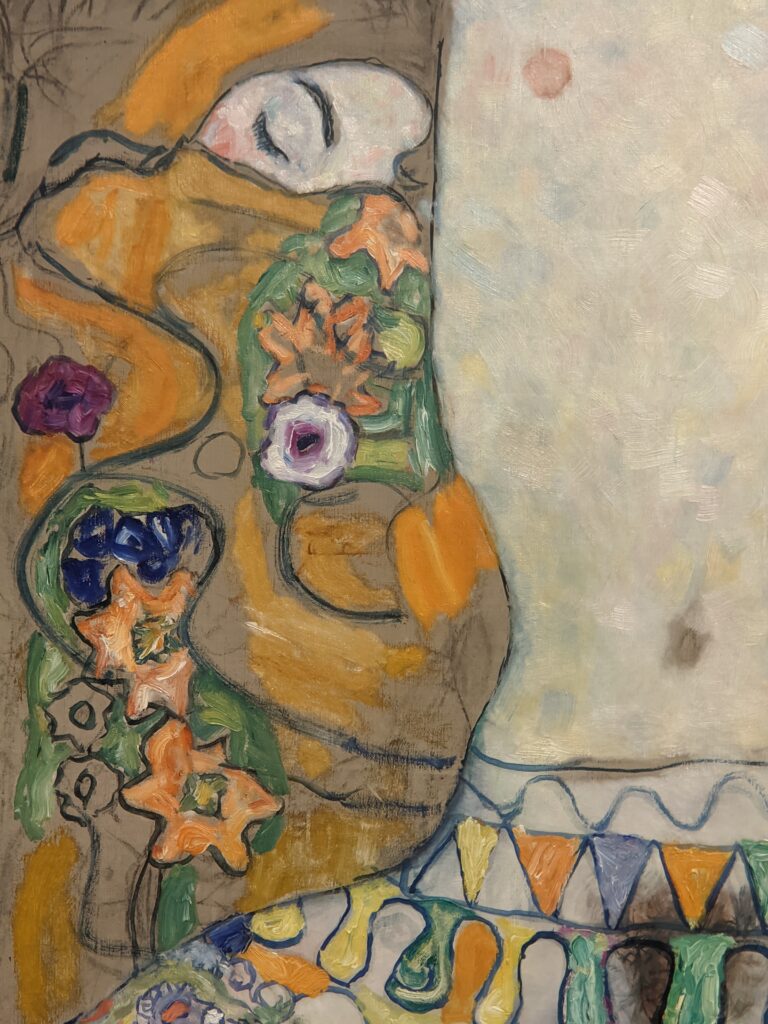
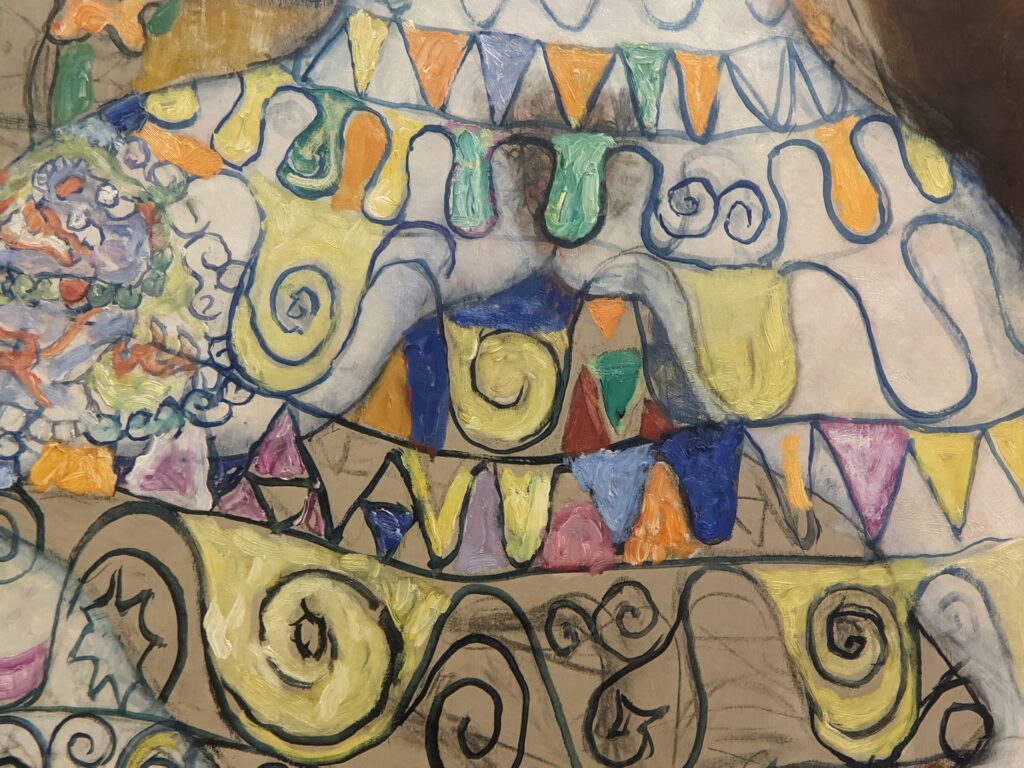
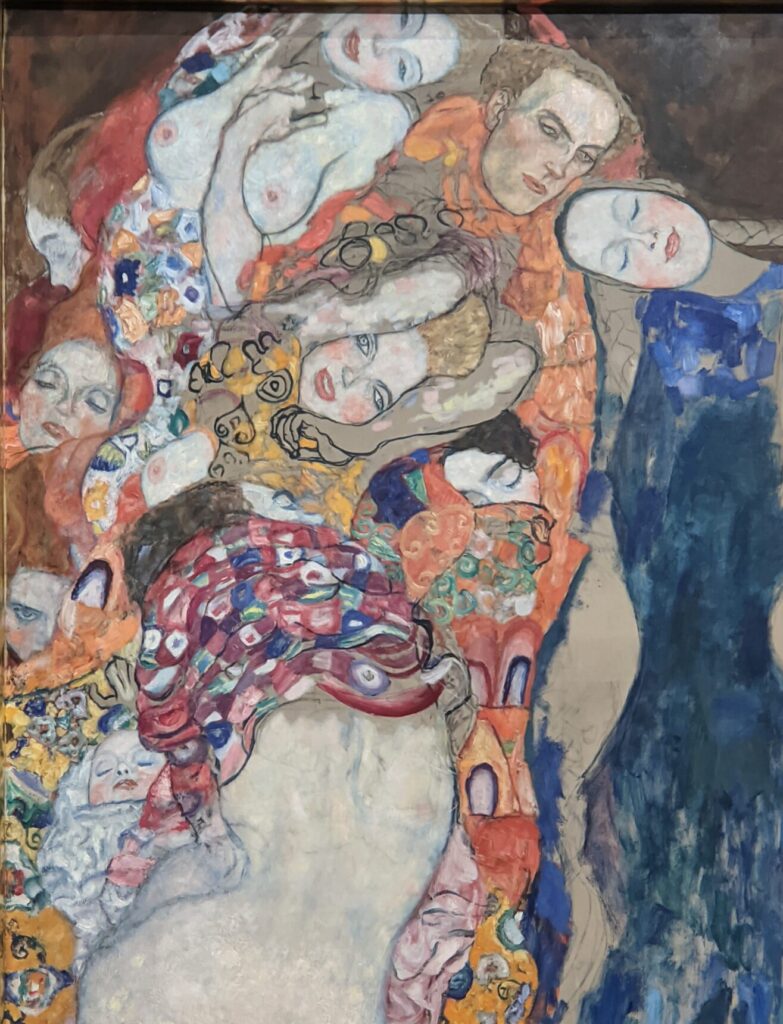
Klimt: A Gifted & Influential Painter in Both the 19th and the 20th Centuries

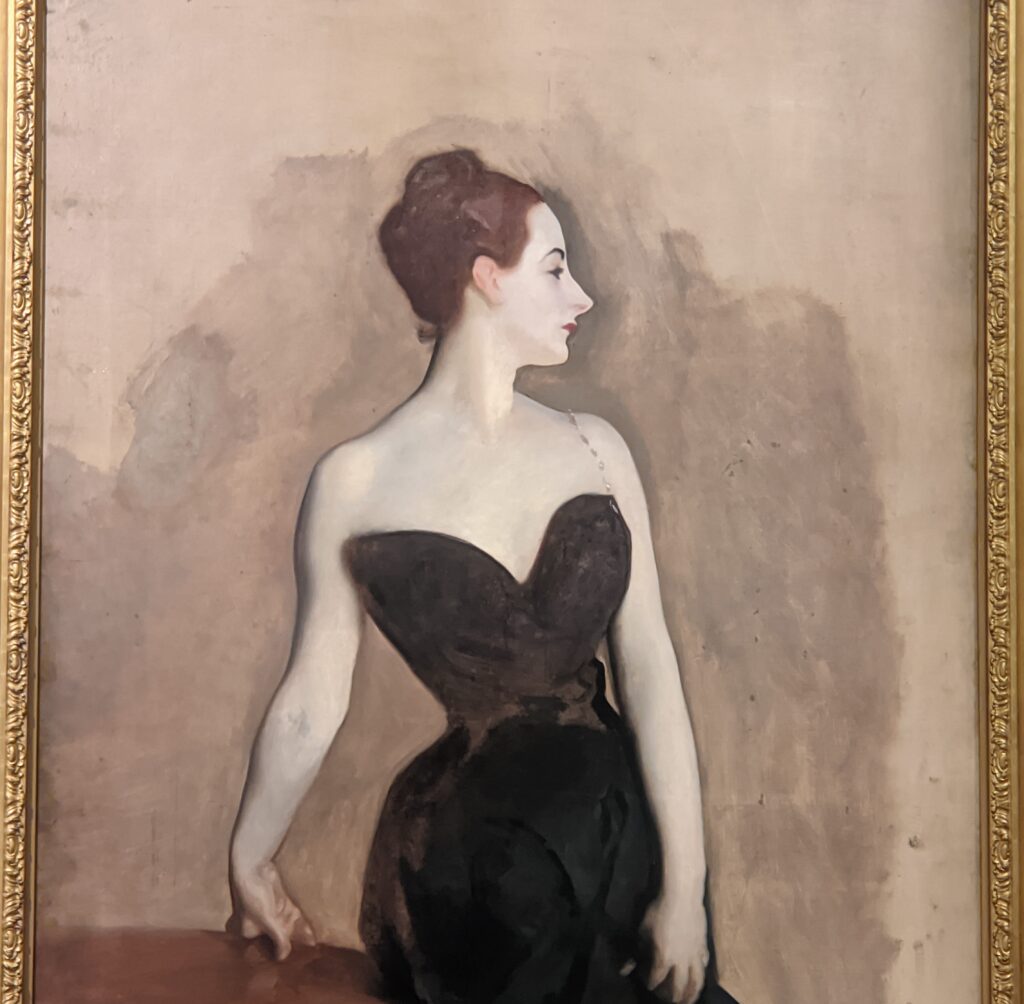

“Lady with a Fan — Gustav Klimt & East-Asia”
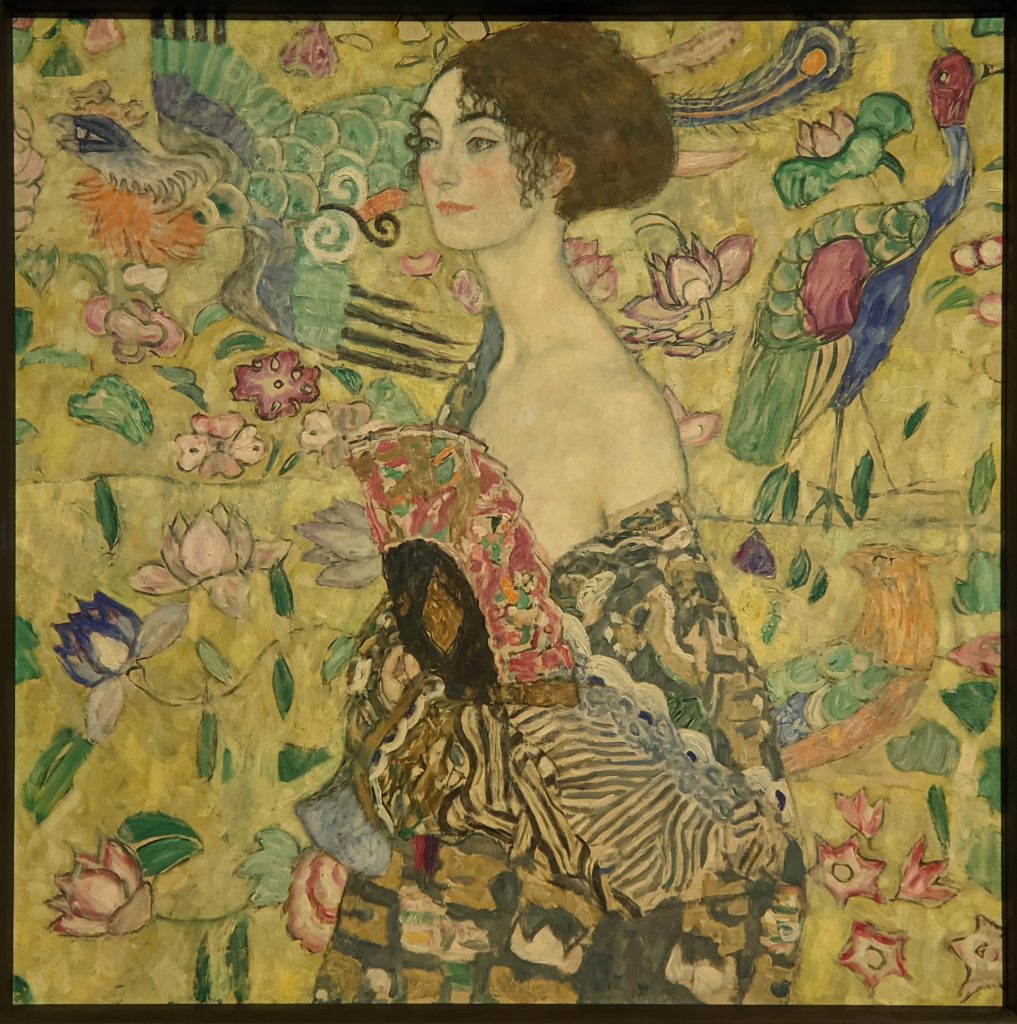
“Lady with a Fan,” painted by Klimt in 1917-1918 just before his death, served as the centerpiece of a previous exhibit at the Belvedere exploring the inspiration Klimt found in art from China, Korea and Japan. That beautiful show closed on February 13, 2022. Influenced by Japanese prints (below), the painting “Lady with a Fan” was on public view in Vienna just once before — over a century ago at the Kunstschau in 1920.
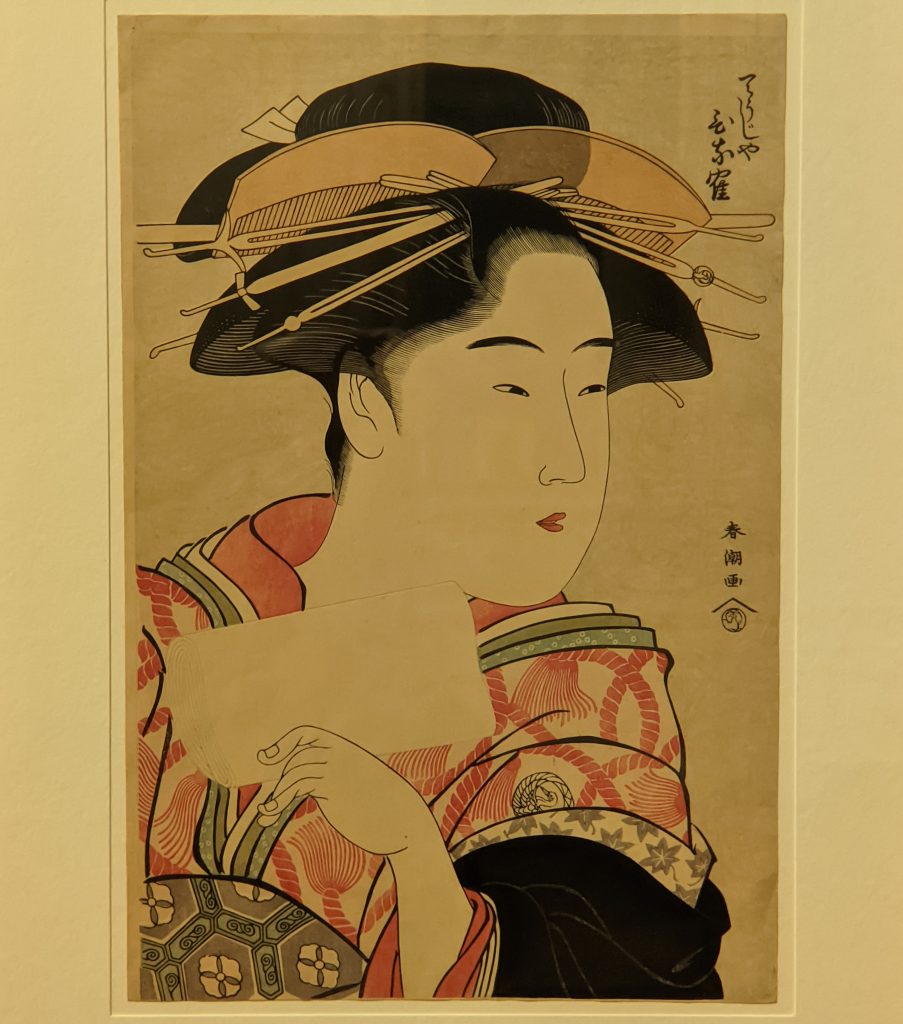

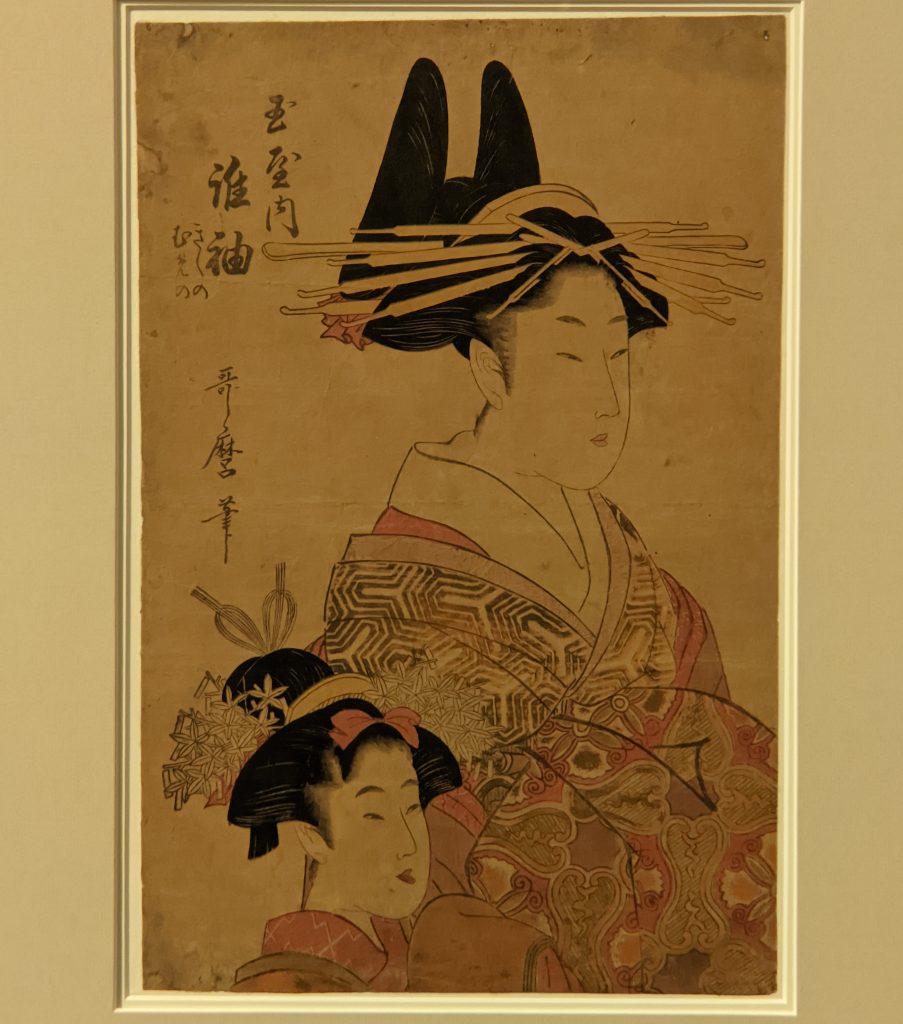
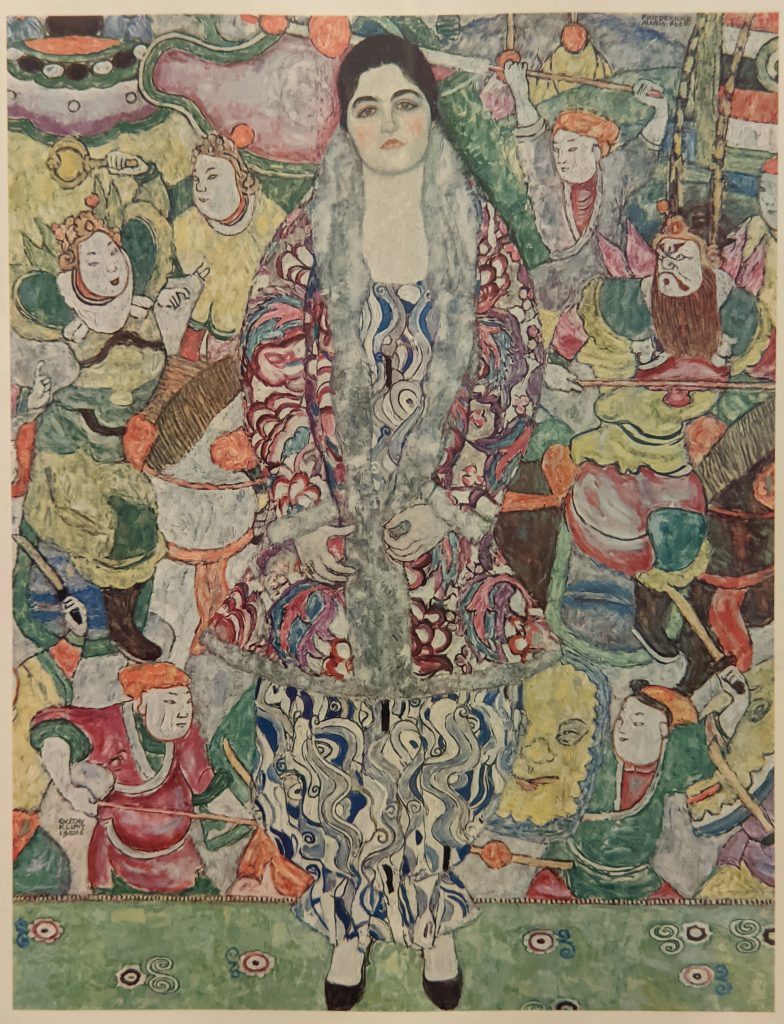


Waldmüller and Biedermeier Vienna
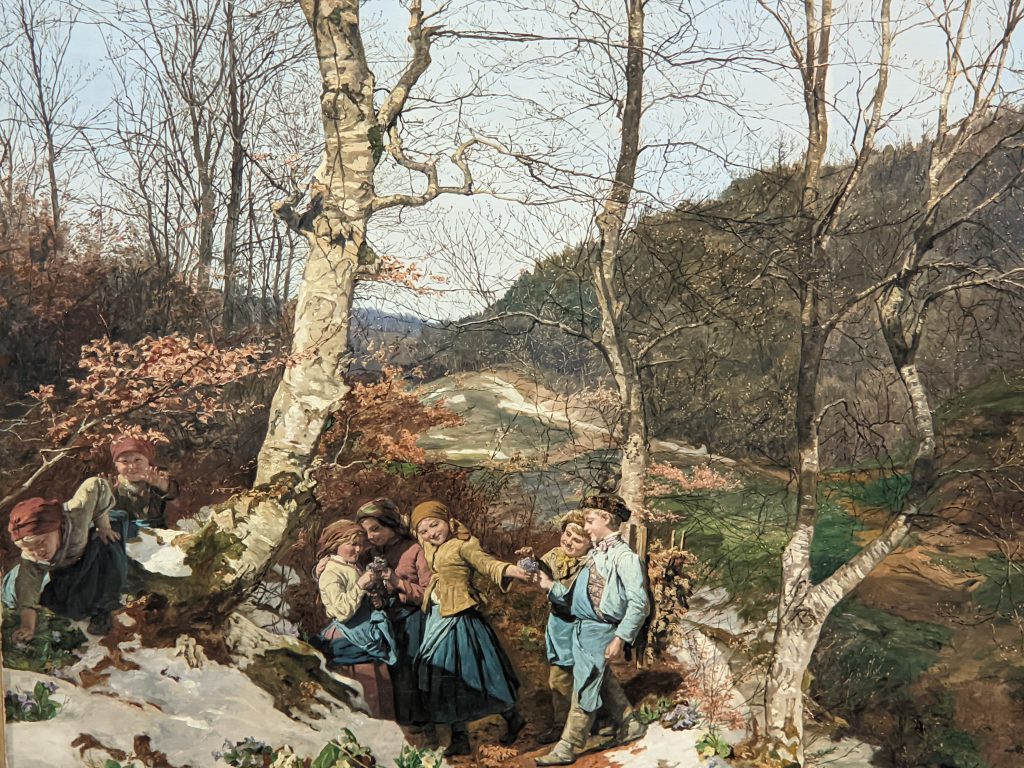
The exhibition “Better Times? Waldmüller and Biedermeier Vienna” was presented from May 12, 2021 through February 27, 2022 and included some of Ferdinand Georg Waldmüller’s most famous paintings, including “Early Spring in the Vienna Woods” (above) completed in 1861. Even though Waldmüller studied portrait painting at the Academy of Fine Arts Vienna and created a portrait of Beethoven in 1823, later he focused on landscapes because he believed the close study of nature should serve as the foundation of painting.
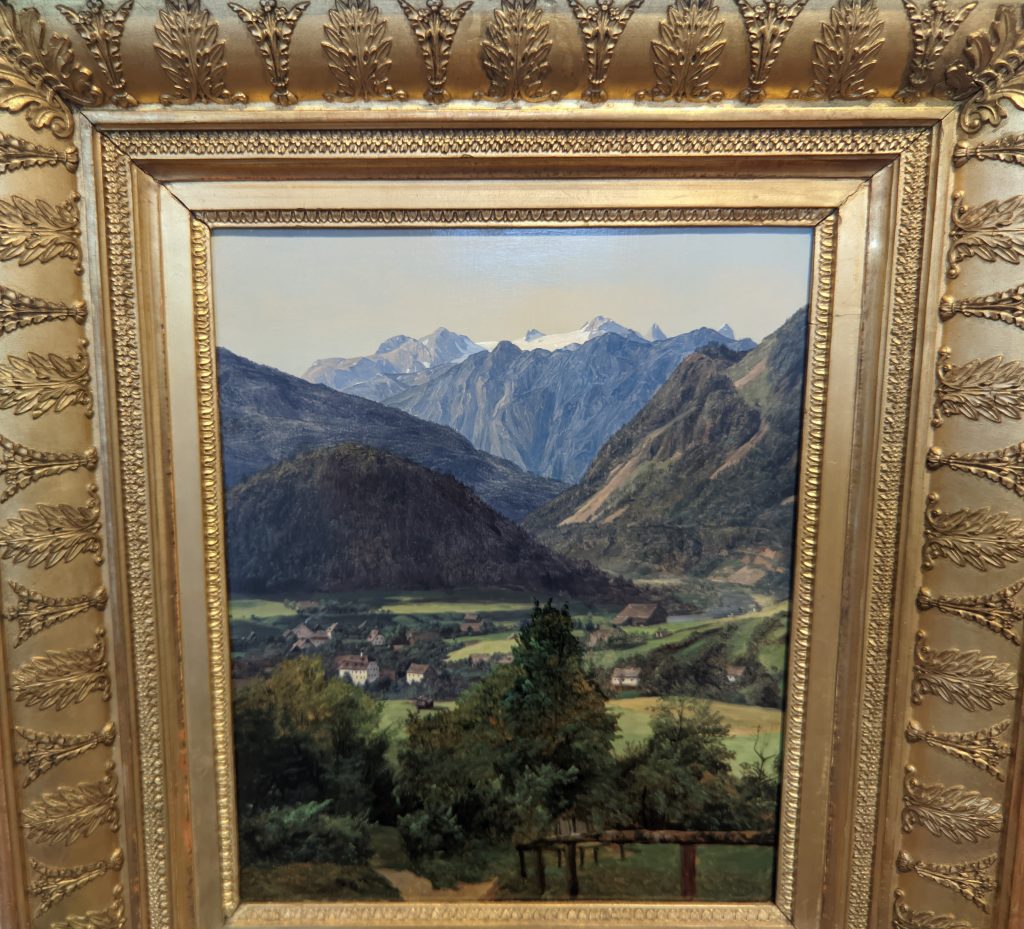
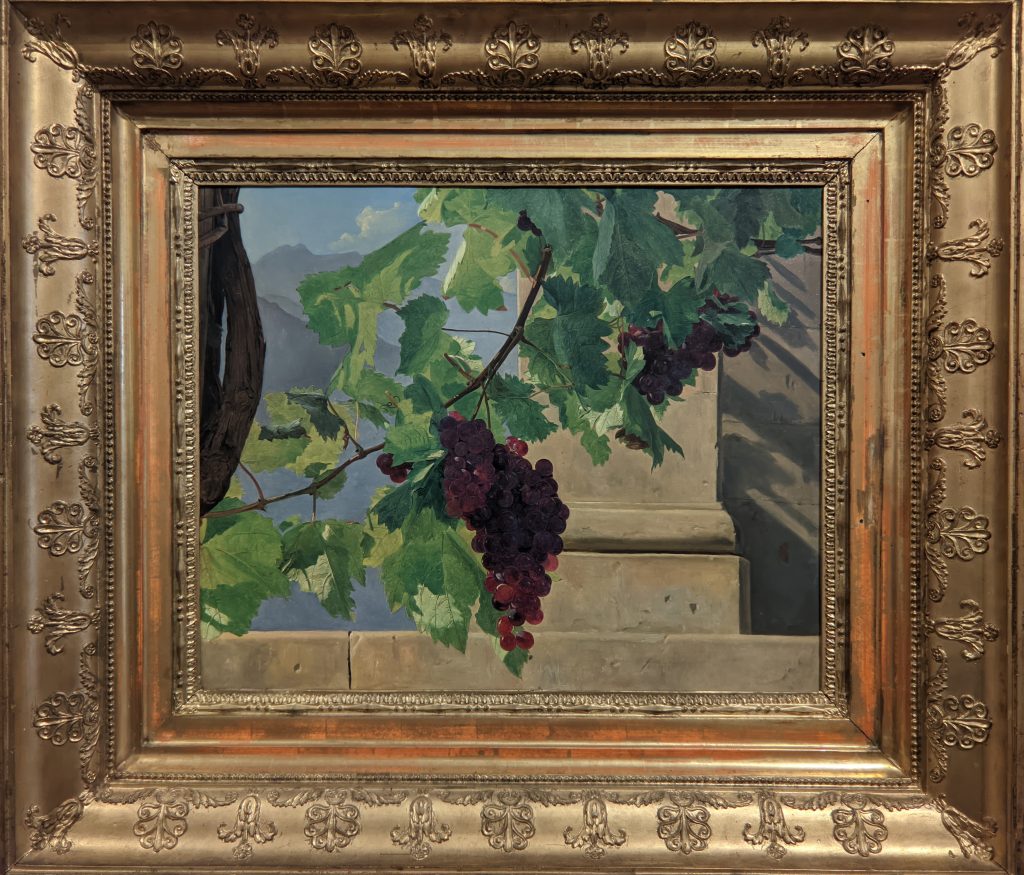
Waldmüller’s work on exhibit at the Belvedere included “View of the Dachstein from Ischl” (above left), “Trailing Grapes” (above right), “A Girl Adorning the Virgin Mary with a Rose” (below left) and “Roses in a Glass” (below right).

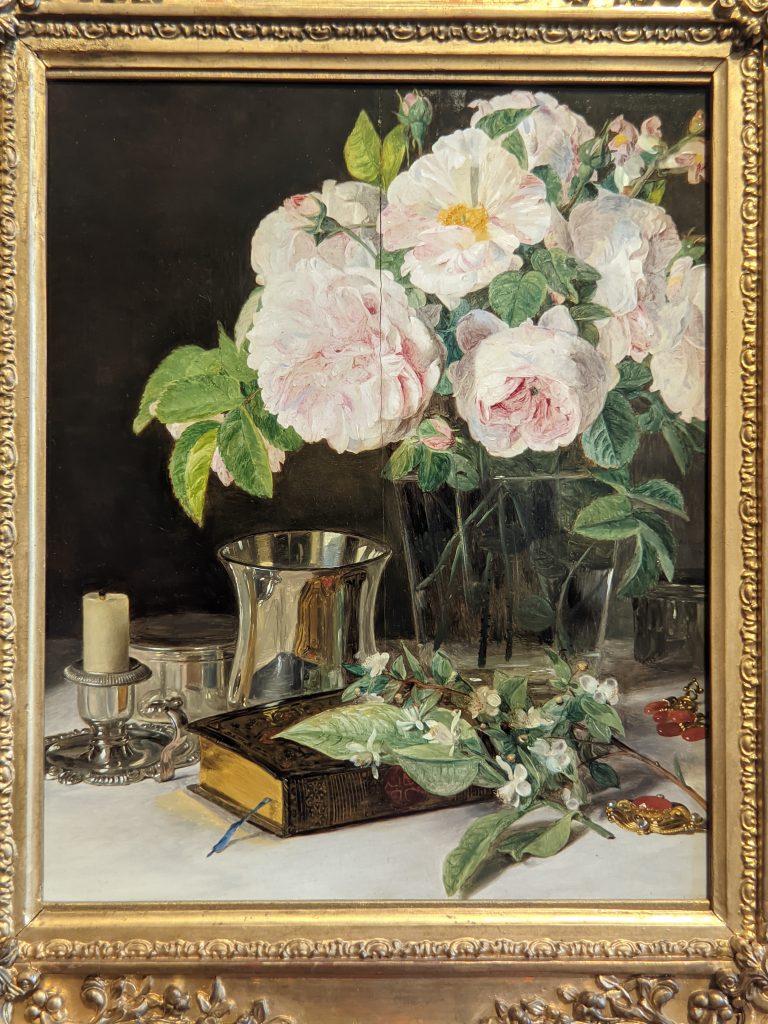
In 1819, Waldmüller became a Professor at the Academy of Fine Arts Vienna, where he wanted to introduce a focus on the study of nature into the curriculum. Such ideas were deemed incompatible with the ideals promulgated by the Academy and the Viennese establishment and, ultimately, Waldmüller was forced to resign. As a proponent of natural observation and plein-air painting — and a critic of academic painting — Waldmüller was indeed ahead of his time and became an inspiration for his contemporaries (whose paintings are pictured below) and an entire generation of artists.
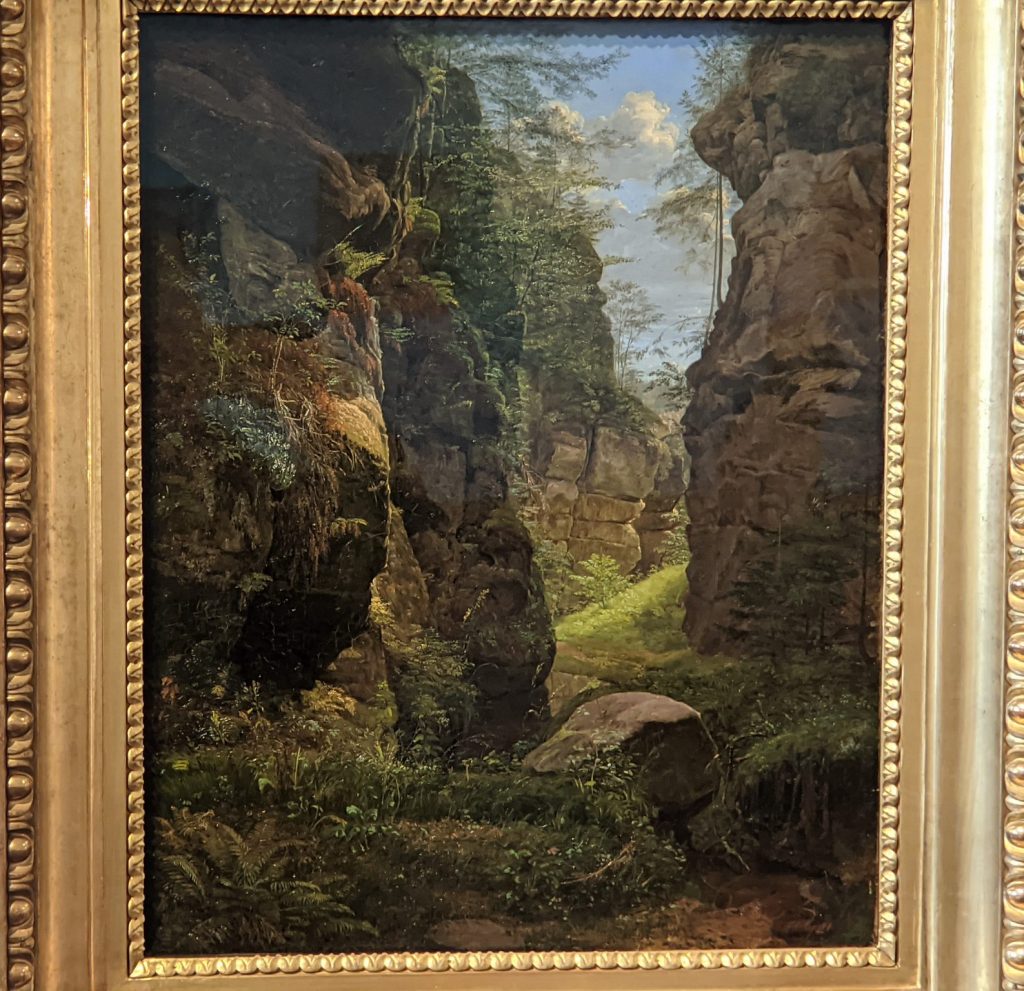
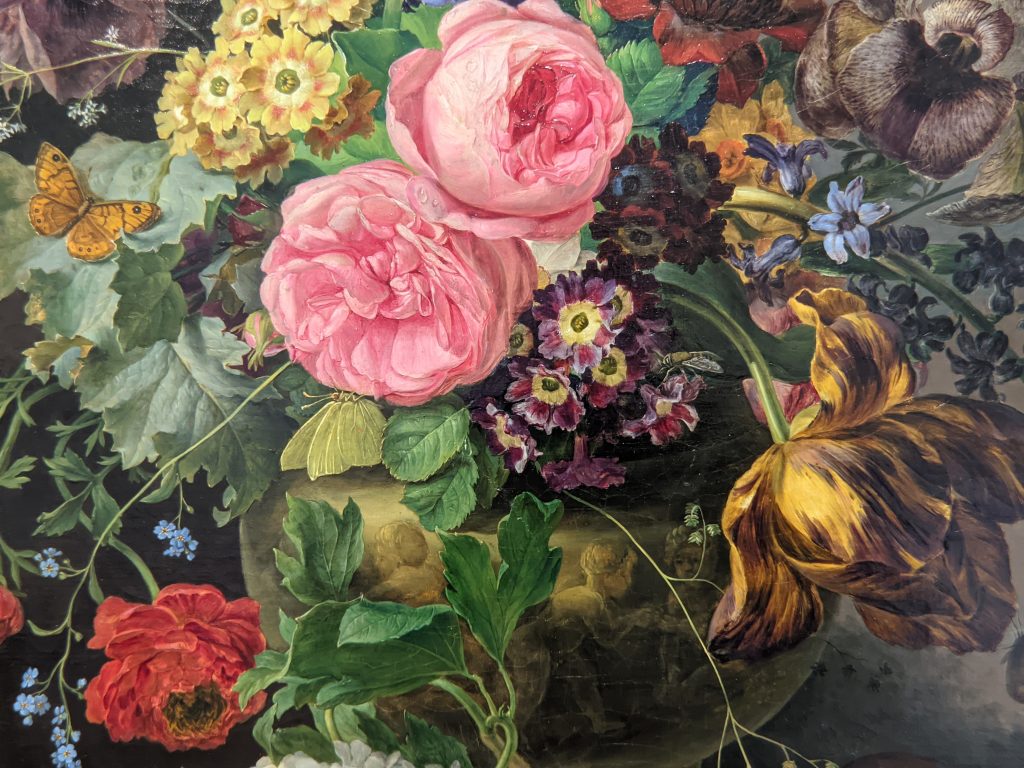
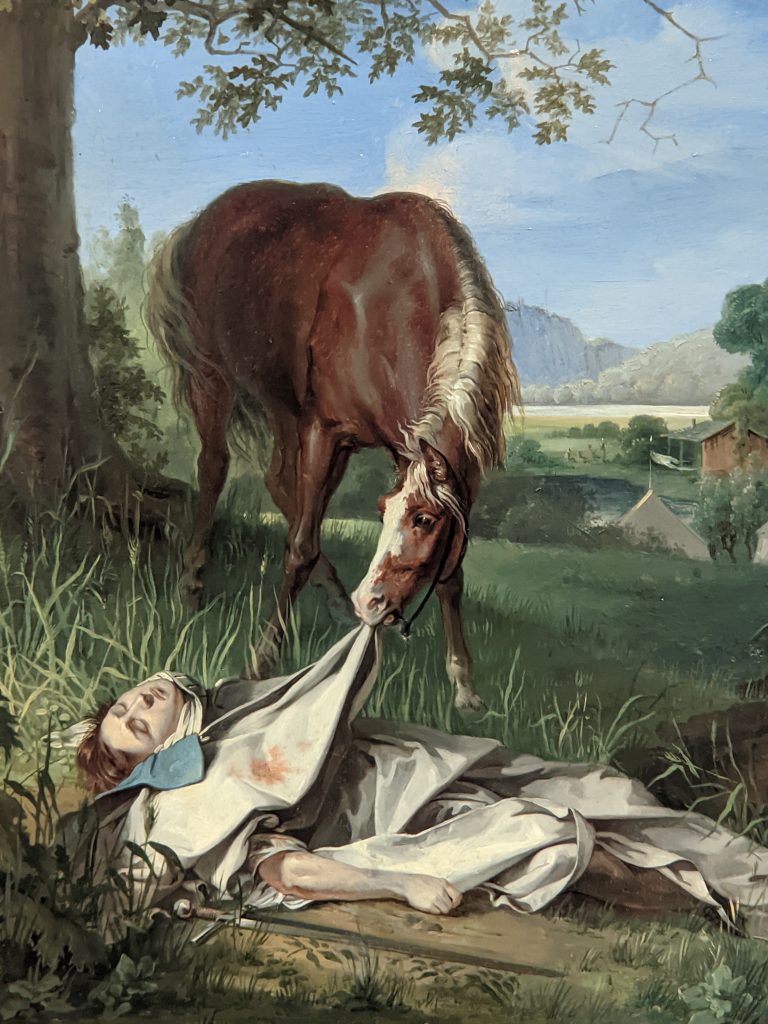
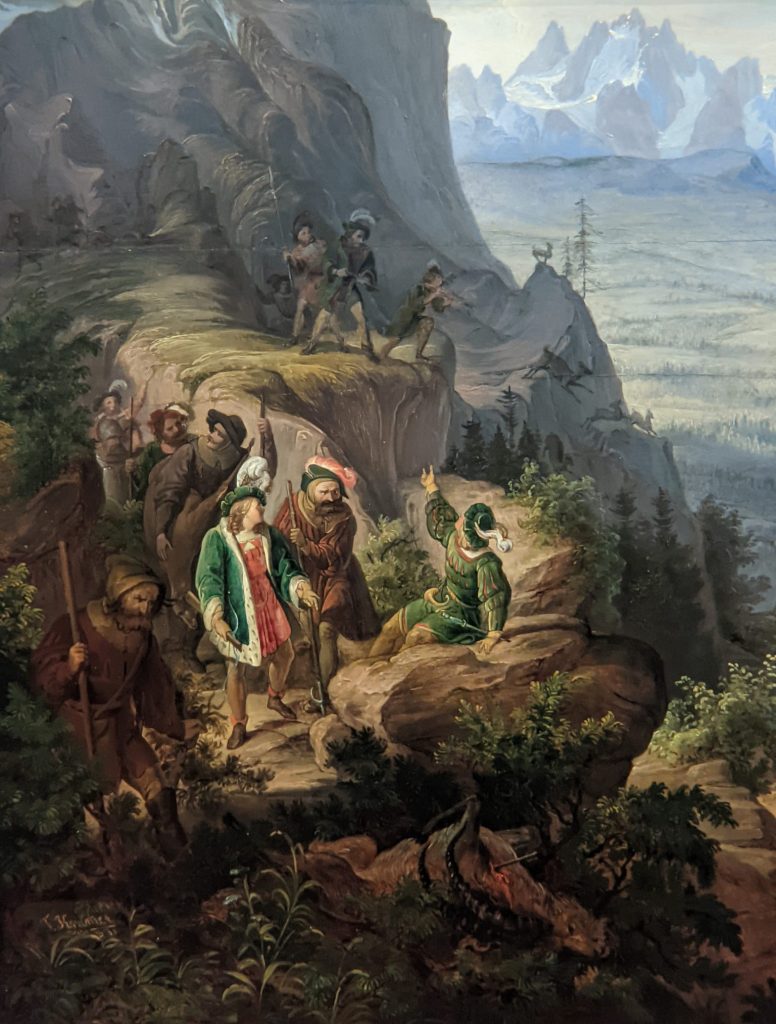

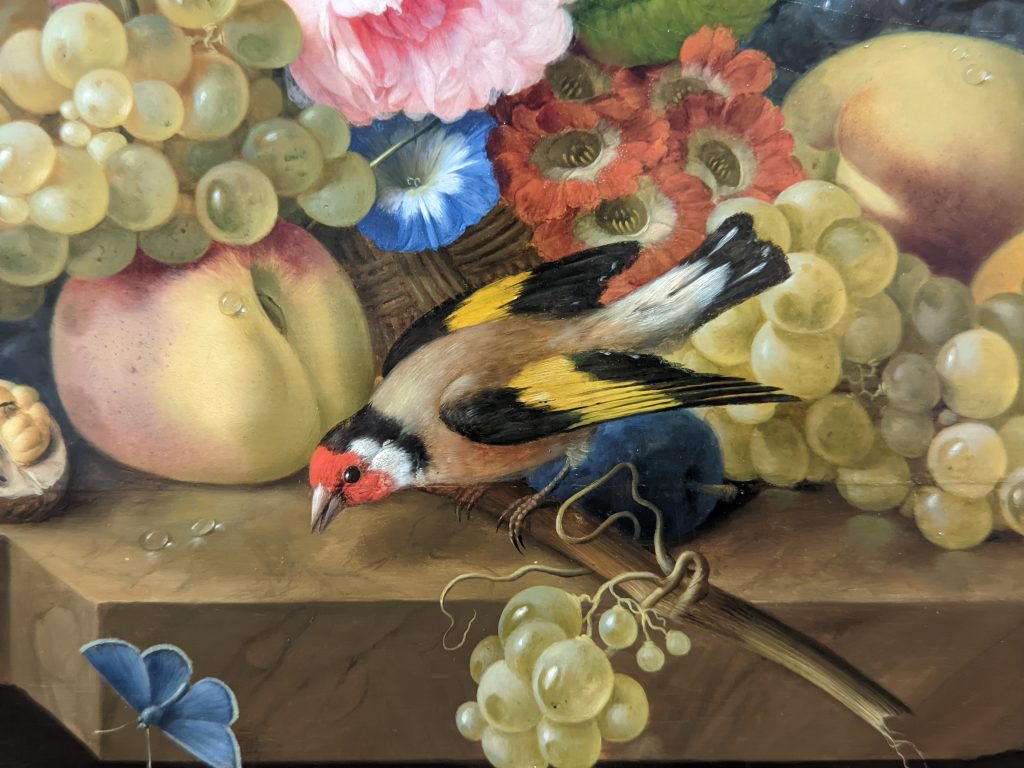
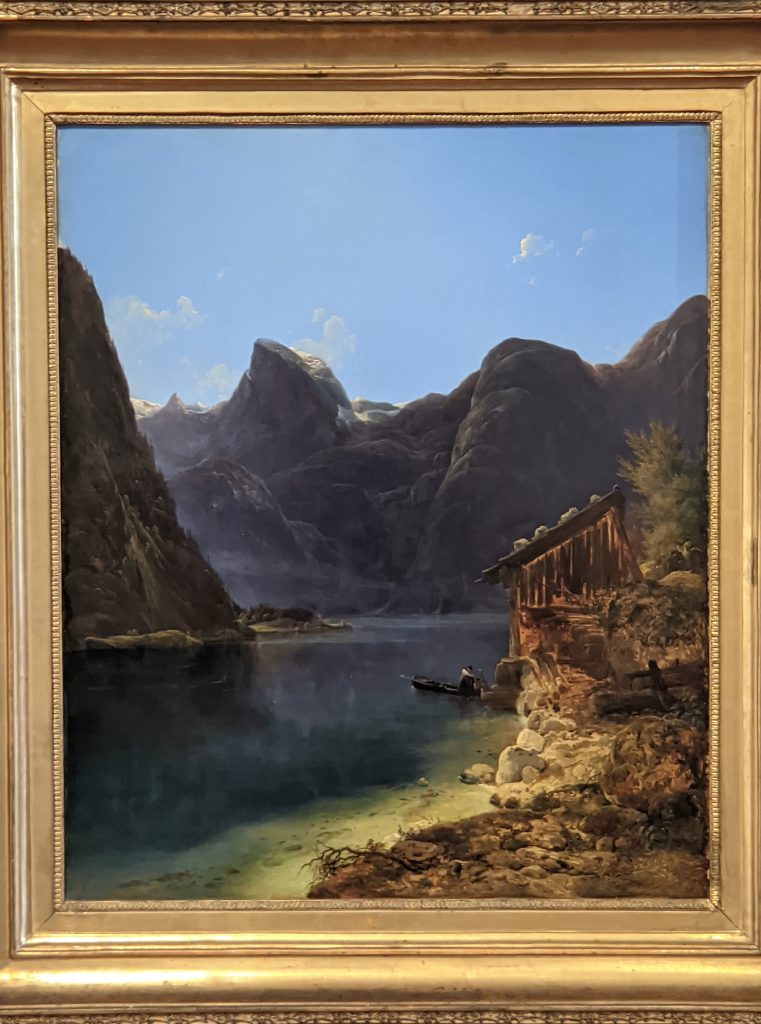
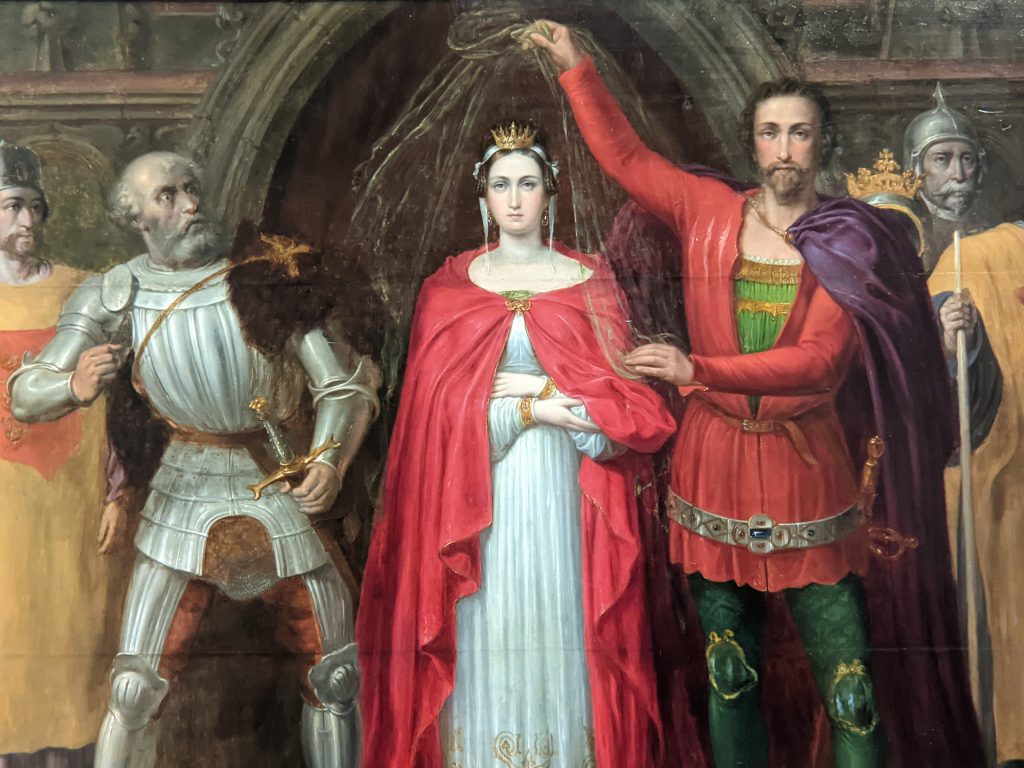

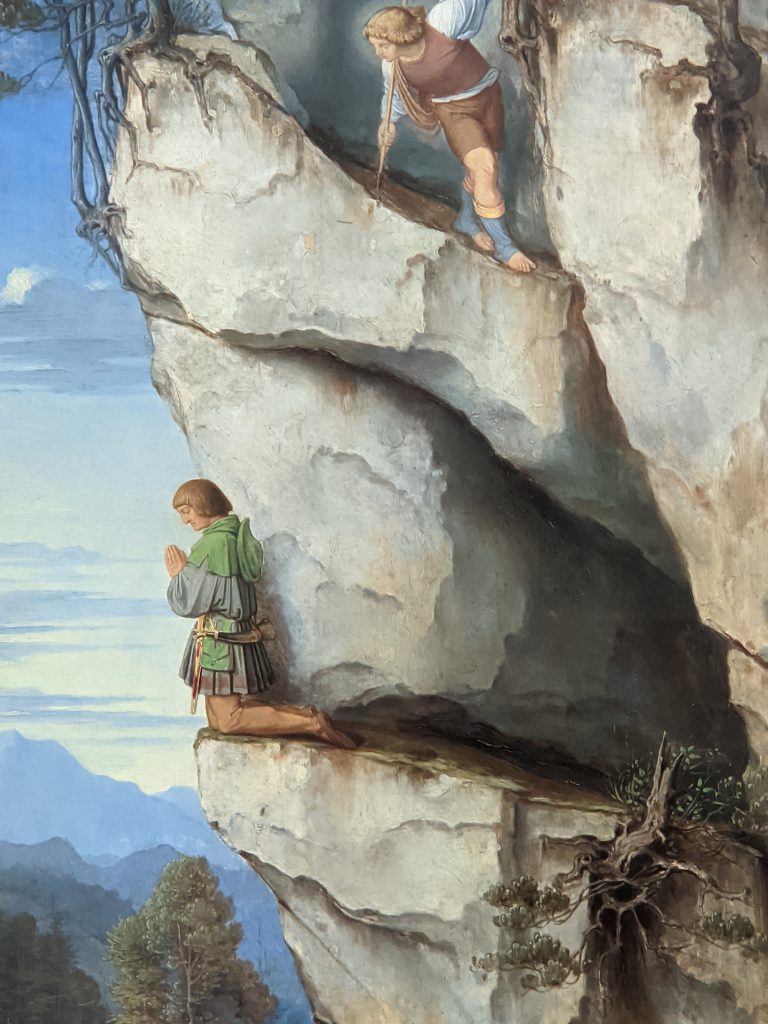
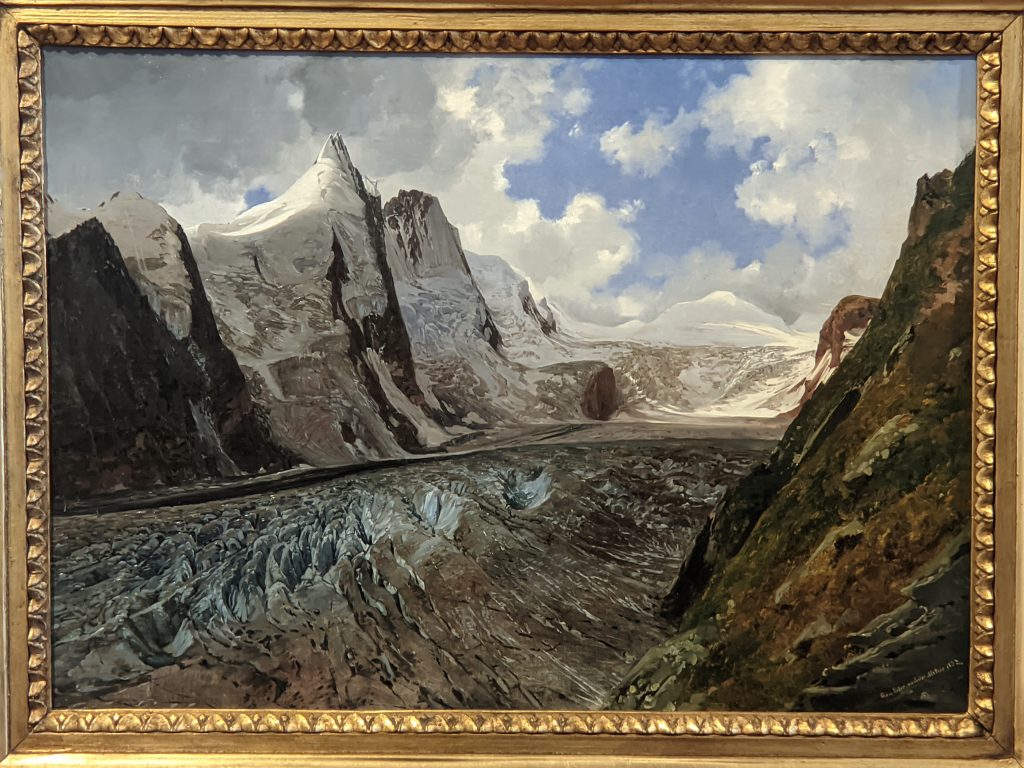
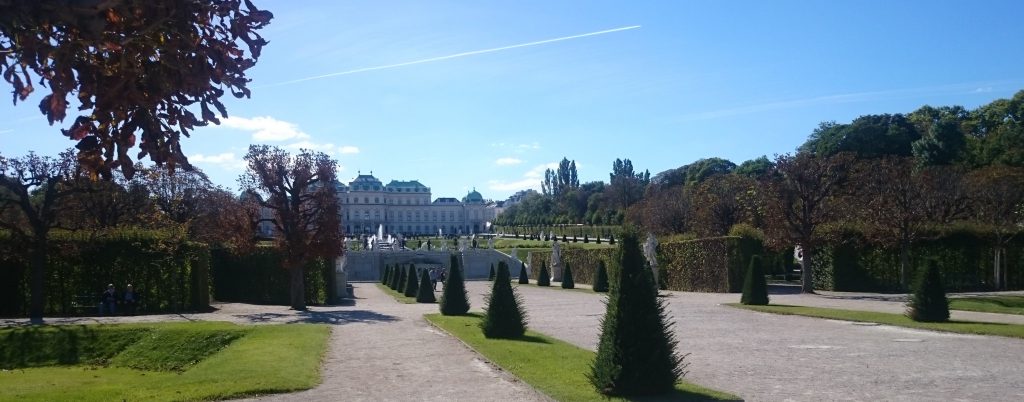
The Upper & Lower Belvedere: Two Baroque Palaces
The Belvedere complex contains two Baroque palaces (the Upper and Lower Belvedere), Palace Stables and the Orangery. Set in a Baroque park landscape, the gardens descend on a gentle gradient and include fountains, sculptures and clipped hedging in the formal French manner.
Records indicate that the construction of the Lower Belvedere (below left) began in 1712 and was completed in 1723.
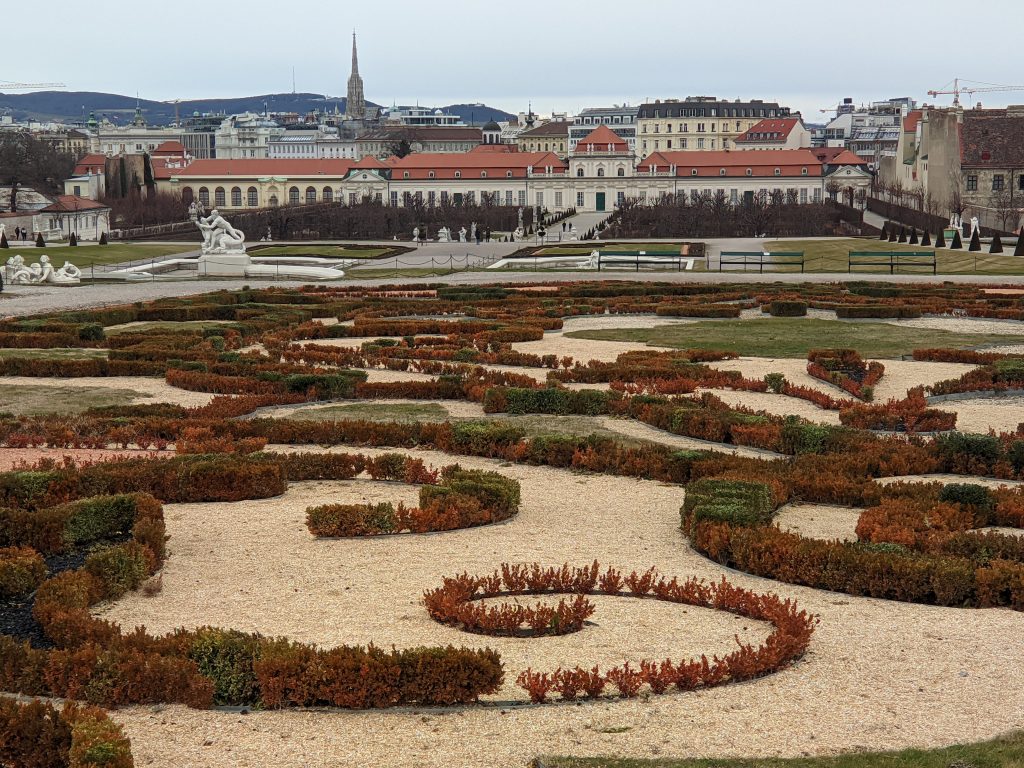
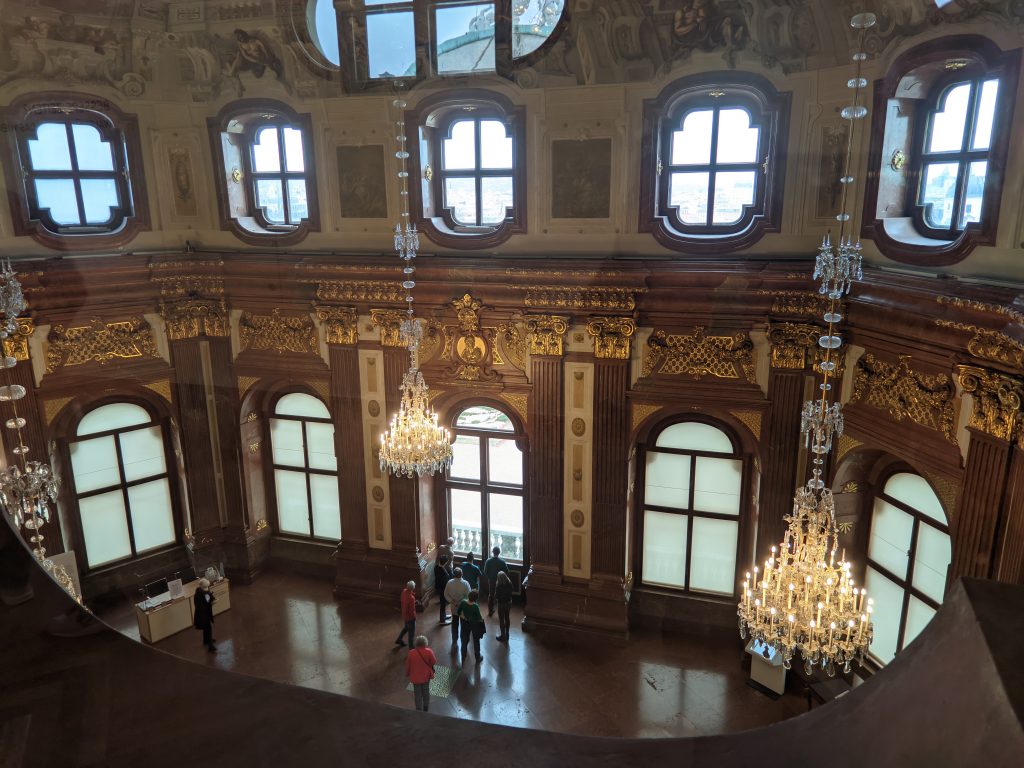
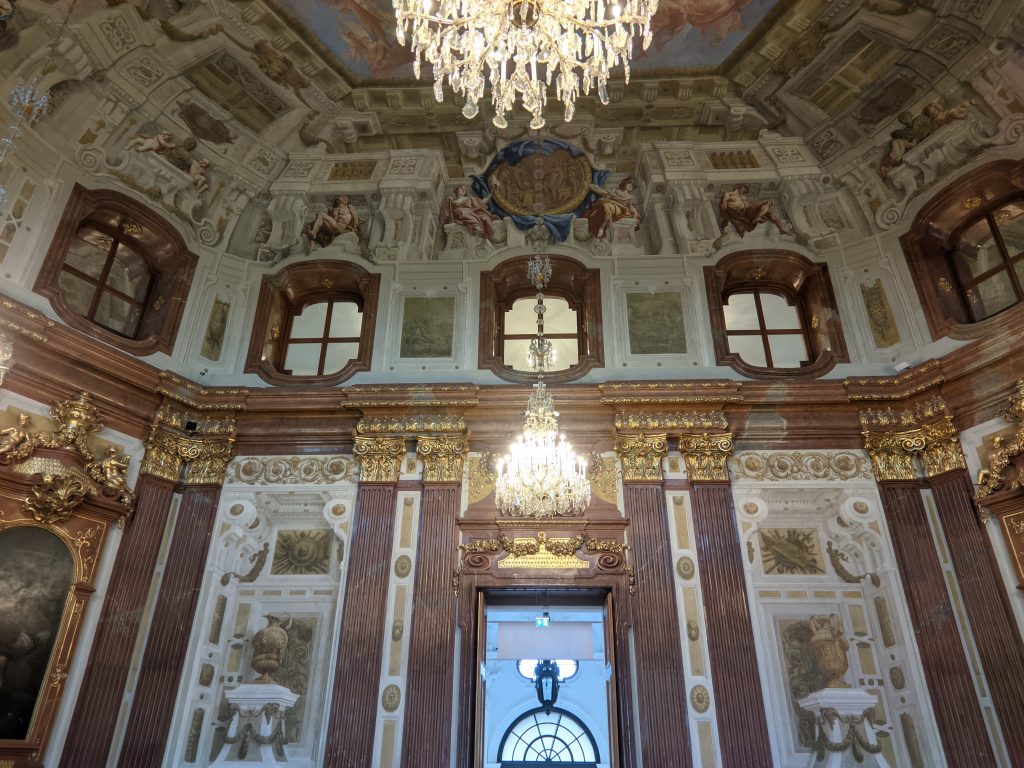
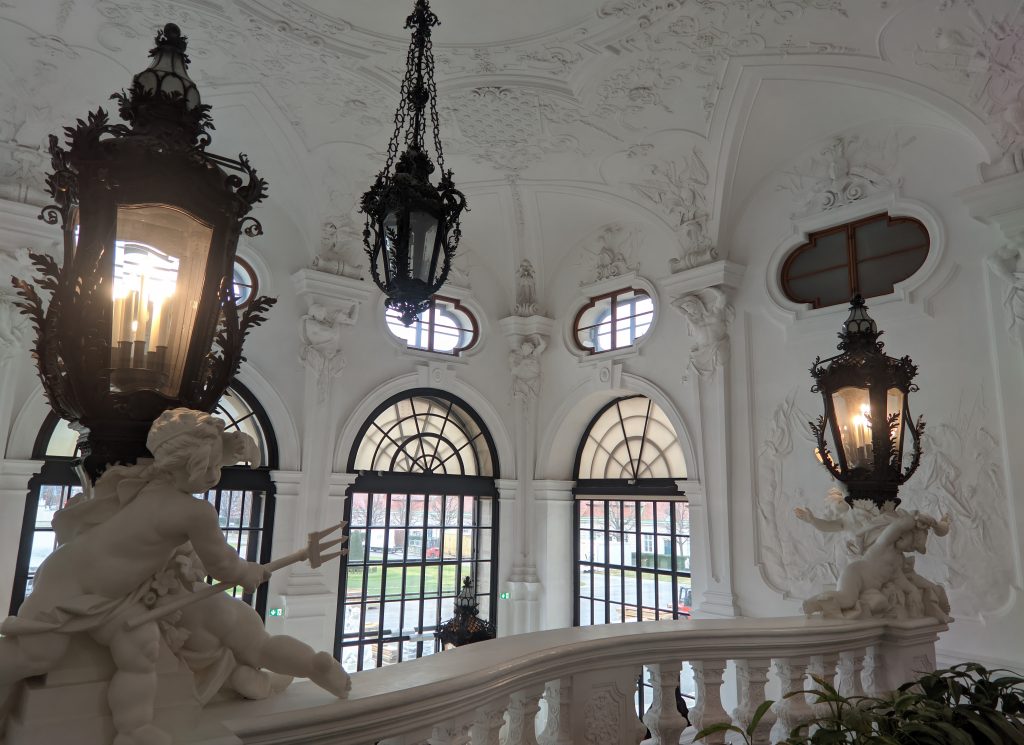
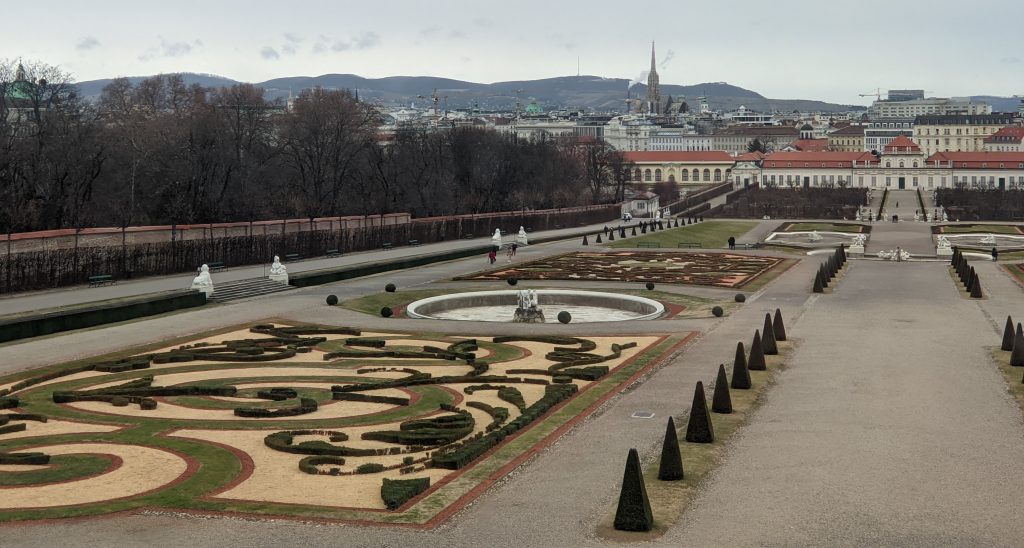

The Klimt portrait Adele Bloch-Bauer II, 1912-13, was one of five paintings returned by the Belvedere in 2006 to the descendant of Ferdinand and Adele Bloch-Bauer. This famous restitution case is described in the 2015 film “Woman in Gold.” The painting (shown above), now in private hands, returned to Vienna for a short visit in 2023 for purposes of analysis and restoration, and it will be on view until February 11, 2024.
The good news is that we at ArtLoversTravel have profiled the Belvedere as the “4th Greatest” art museum in Vienna, and we have chosen the Leopold Museum as the 3rd greatest art museum in Vienna. If you would like to learn more about the art of Egon Schiele, Gustav Klimt, the Secession, and the stylish era of Jugendstil, please continue your exploration with our article entitled “The Leopold Museum — 3rd Greatest Museum in Vienna”.
Our selection of the two finest art museums in Vienna is described in “Two Superior Museums of Art in the Heart of Vienna”.
Please feel free to leave a COMMENT, or tell us about your favorite museum experiences in the Austrian capital. Thank you for your visit!
The post Klimt + Gold = The Belvedere — 4th Greatest Museum in Vienna appeared first on Art Lovers Travel.
]]>The post Morozov Collection — The Best Art in Paris at Fondation Vuitton appeared first on Art Lovers Travel.
]]>The Morozov Collection — Alfred Sisley
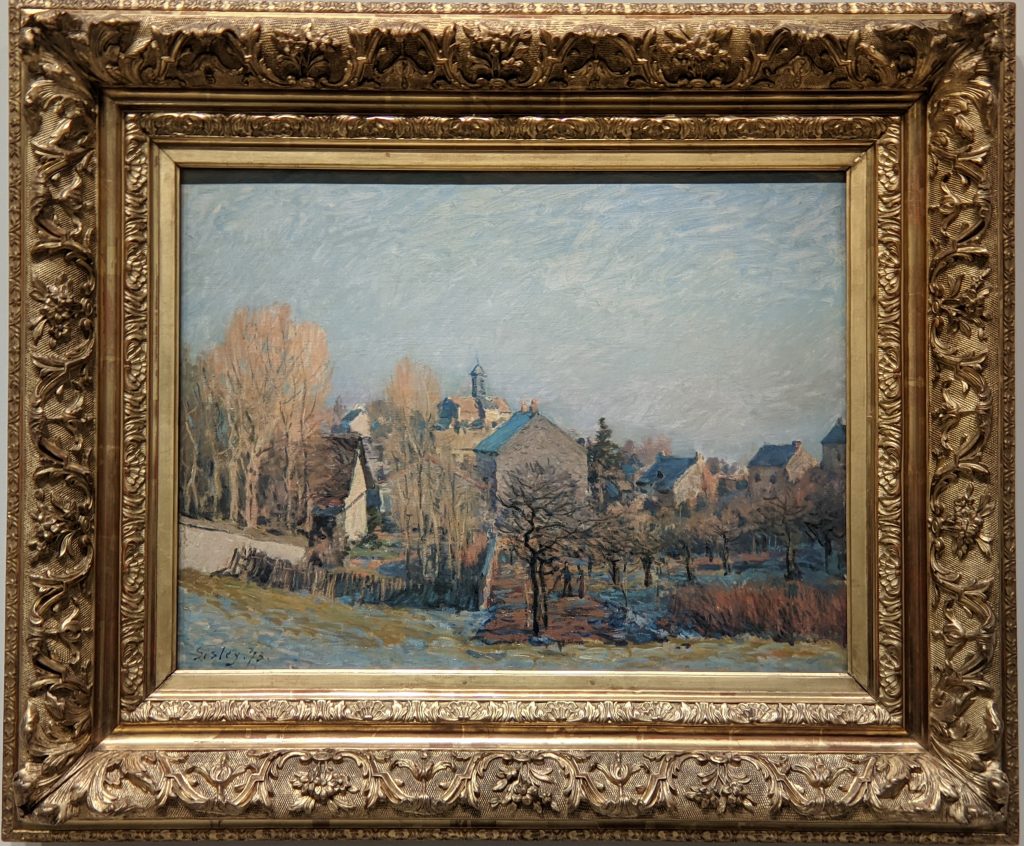

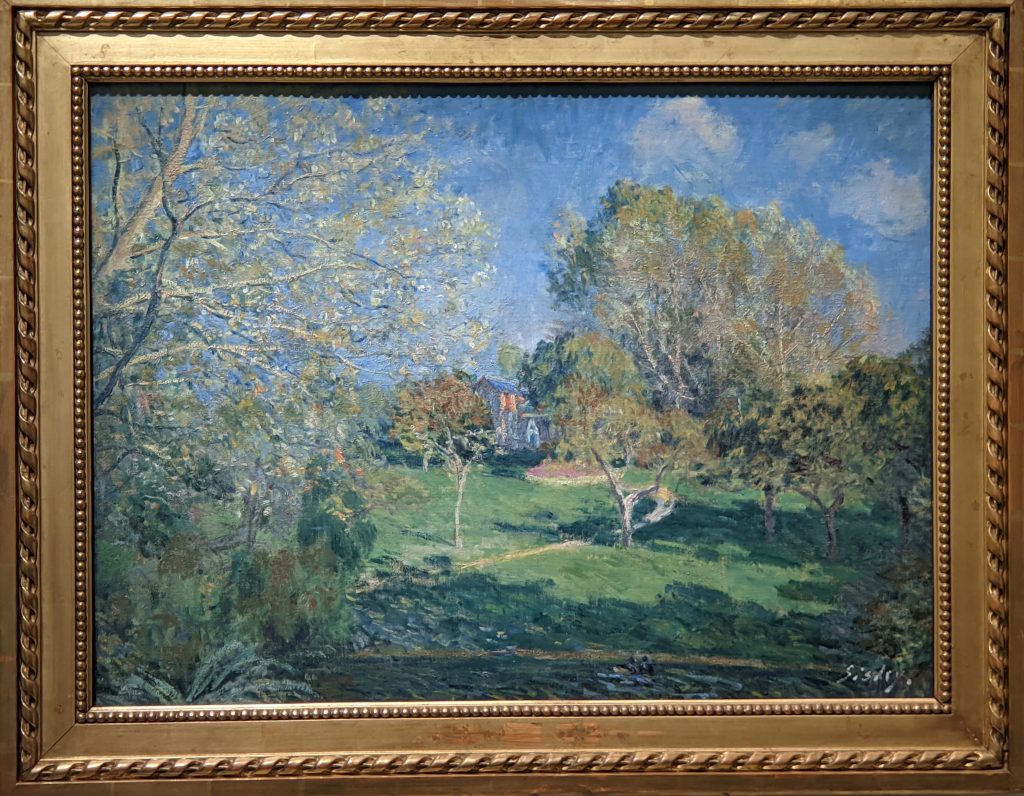
This exhibition in Paris marked the first time the Morozov Collection, established between 1889 and 1914, traveled outside of Russia. We begin with a focus on landscapes because in their youth the Morozov brothers took courses in landscape painting; therefore, they understood the challenges of working with oil paint. That experience certainly informed their taste in fine art, as evidenced by these paintings by Claude Monet (1840 — 1926).
Claude Monet in the Show
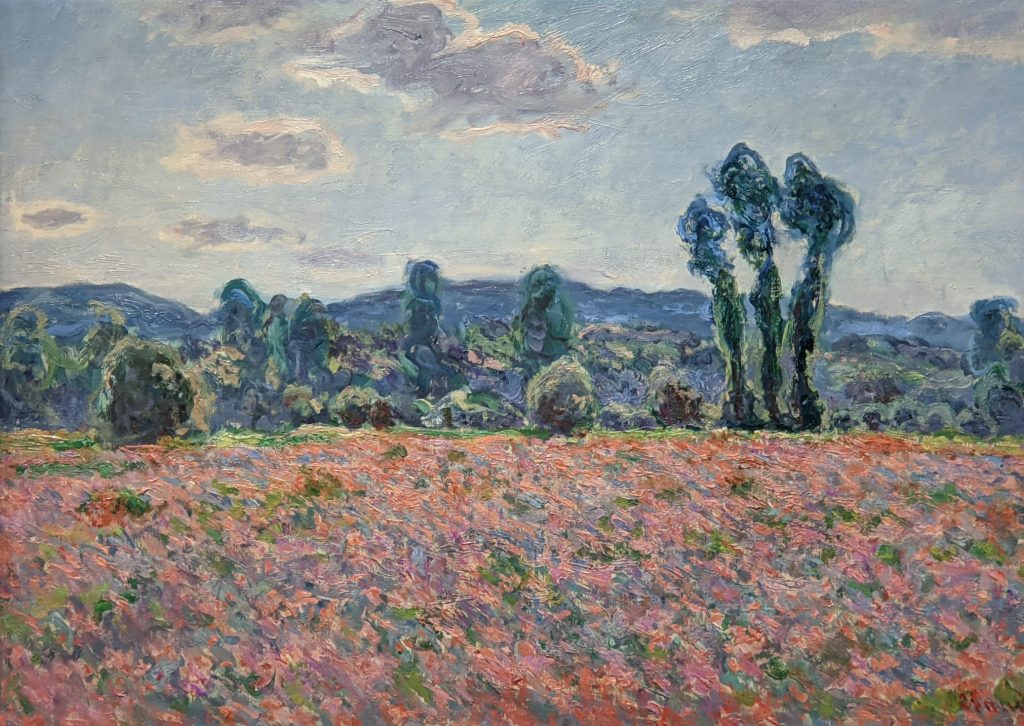
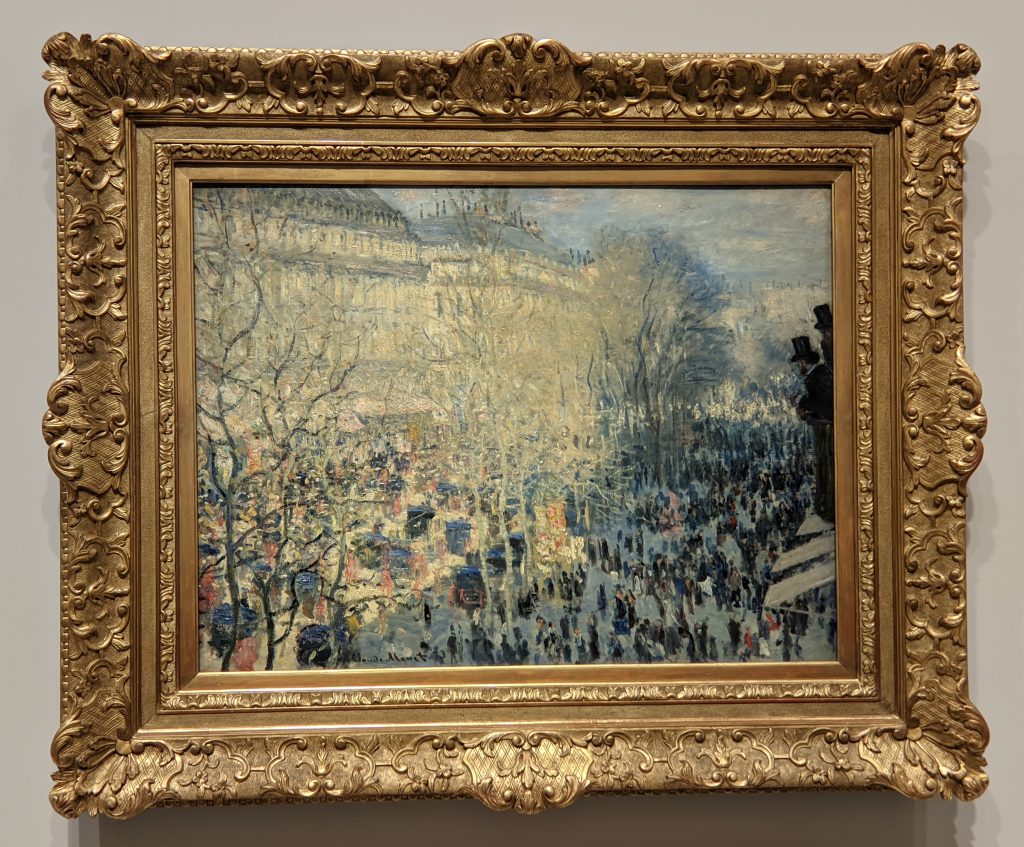


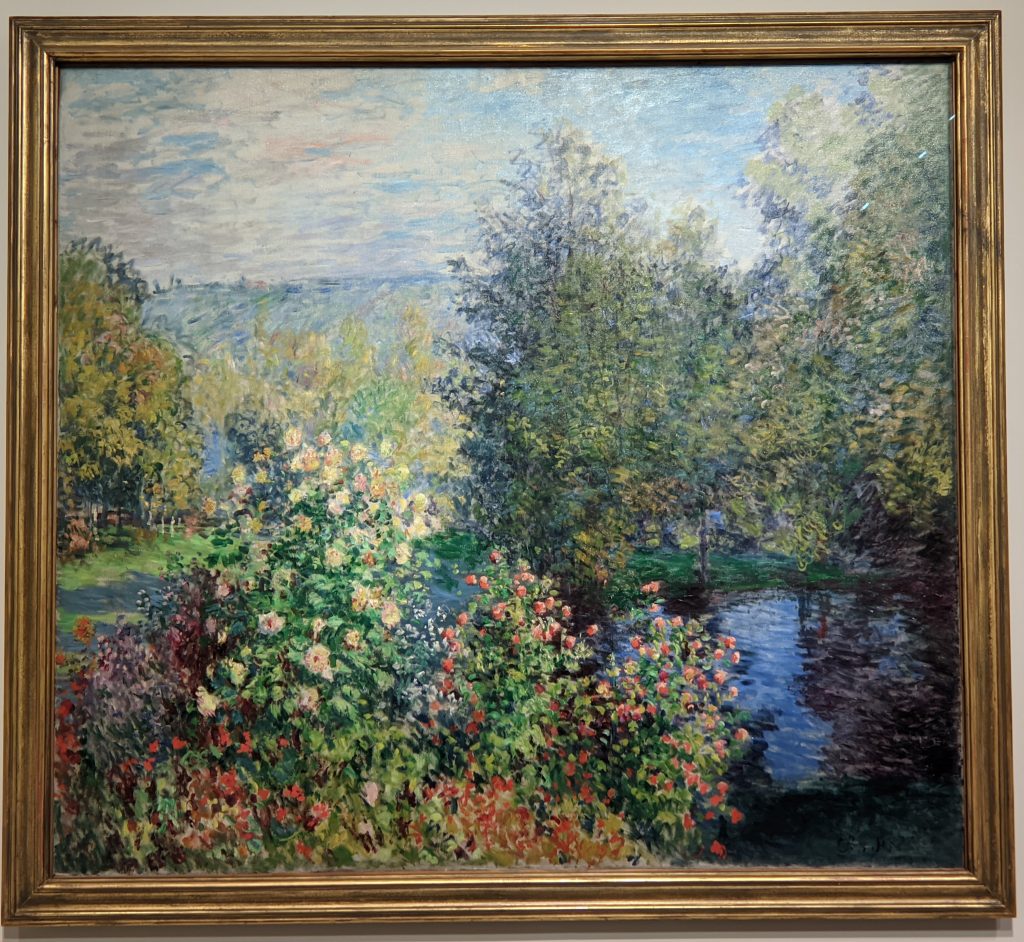
Mikhail Morozov, the elder brother, began collecting first — during the 1890s — buying art from his native Russia and the Impressionists in France, including portraits of the actress Jeanne Samary (below) by Auguste Renoir. When Mikhail died in 1903 — at the age of 33 — his brother Ivan, a textile merchant, began making the 1,800-mile journey to the French capital twice each year to purchase Impressionist, modern and avant-garde works of art.
Auguste Renoir in the Collection

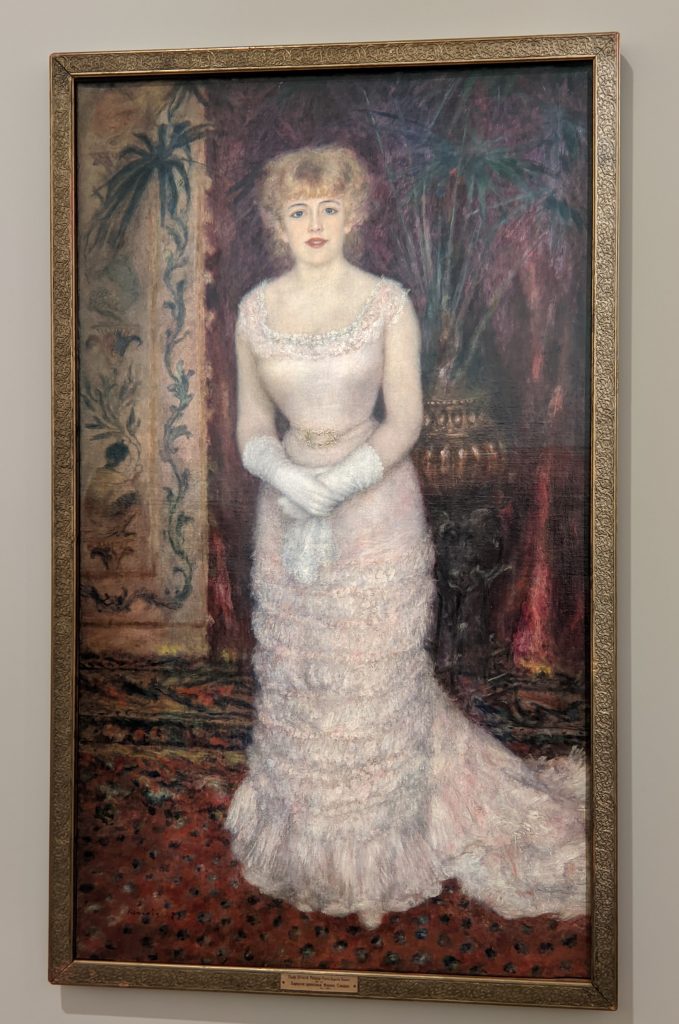

While both brothers acquired works by Monet for their collection (purchasing a total of 19), it was the older brother Mikhail who had an eye for representational pieces by Jean-Baptiste Corot and Auguste Rodin, for example, and Édouard Manet (above). Later, Ivan Morozov added paintings by Ker-Xavier Roussel (below), the Frenchman associated with Les Nabis.

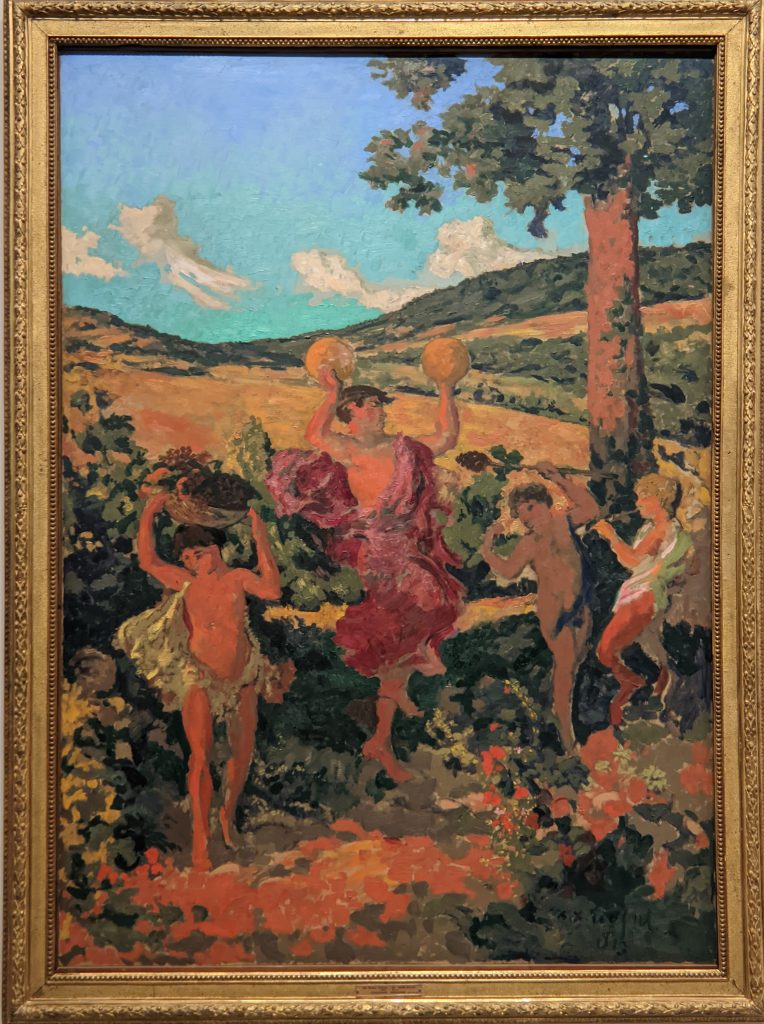
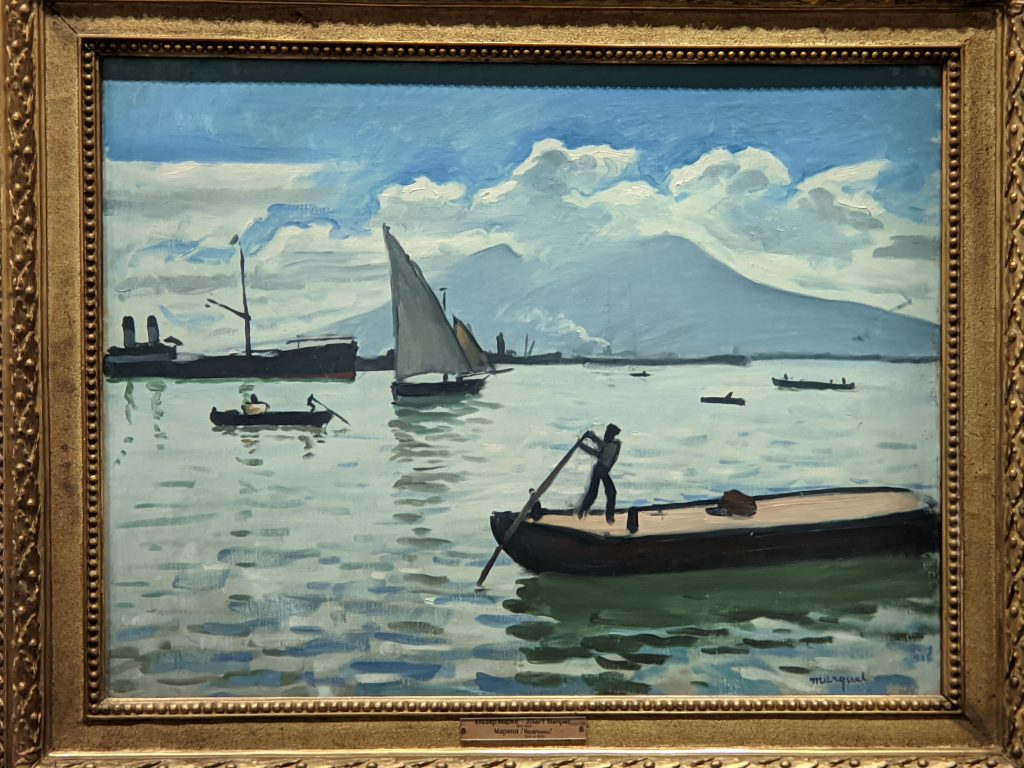
This landmark exhibition is the second in the series entitled Icons of Modern Art, following the Vuitton’s presentation of The Shchukin Collection in 2016-17 which attracted a record 1.3 million visitors. After the Bolshevik Revolution in 1917, the Morozov Collection was nationalized and displayed alongside 258 paintings seized from the palatial home of Sergei Shchukin, a cloth merchant. When Alfred Barr, the future director of MoMA, made an historic visit to Moscow in 1927 he was stunned by the quality of French art in the Shchukin and Morozov Collections, which surpassed art shown in Parisian (and all other) museums at that time. Morozov acquired four important paintings of the river Seine (below) by Albert Marquet.
Albert Marquet (1875 — 1947)

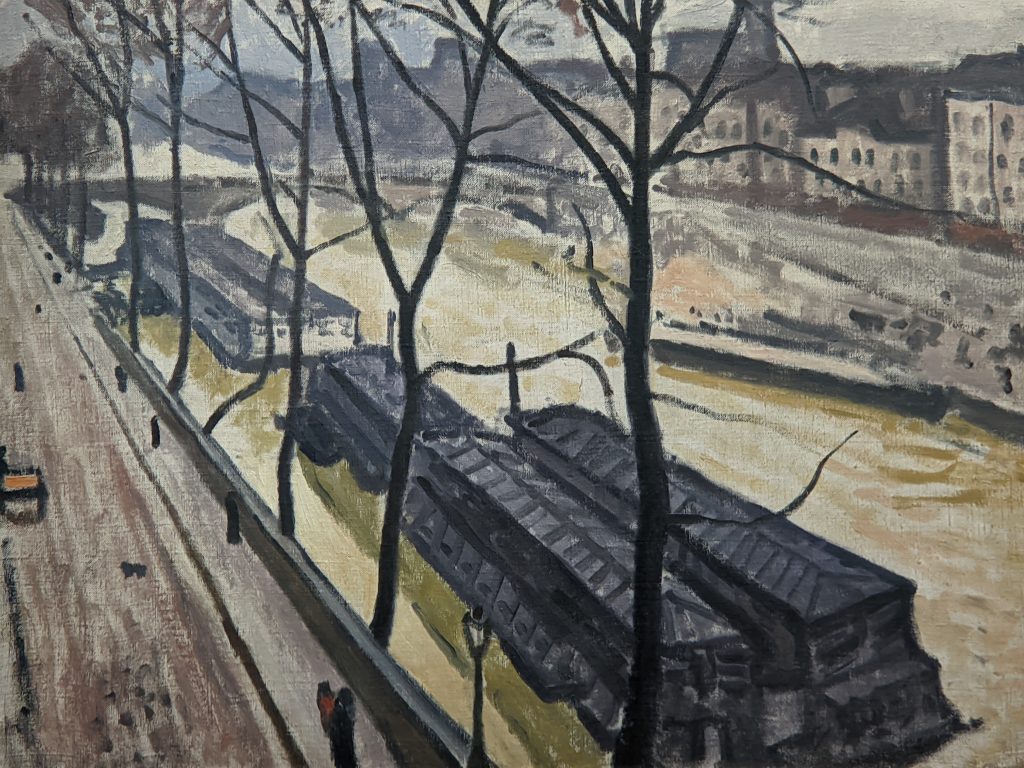
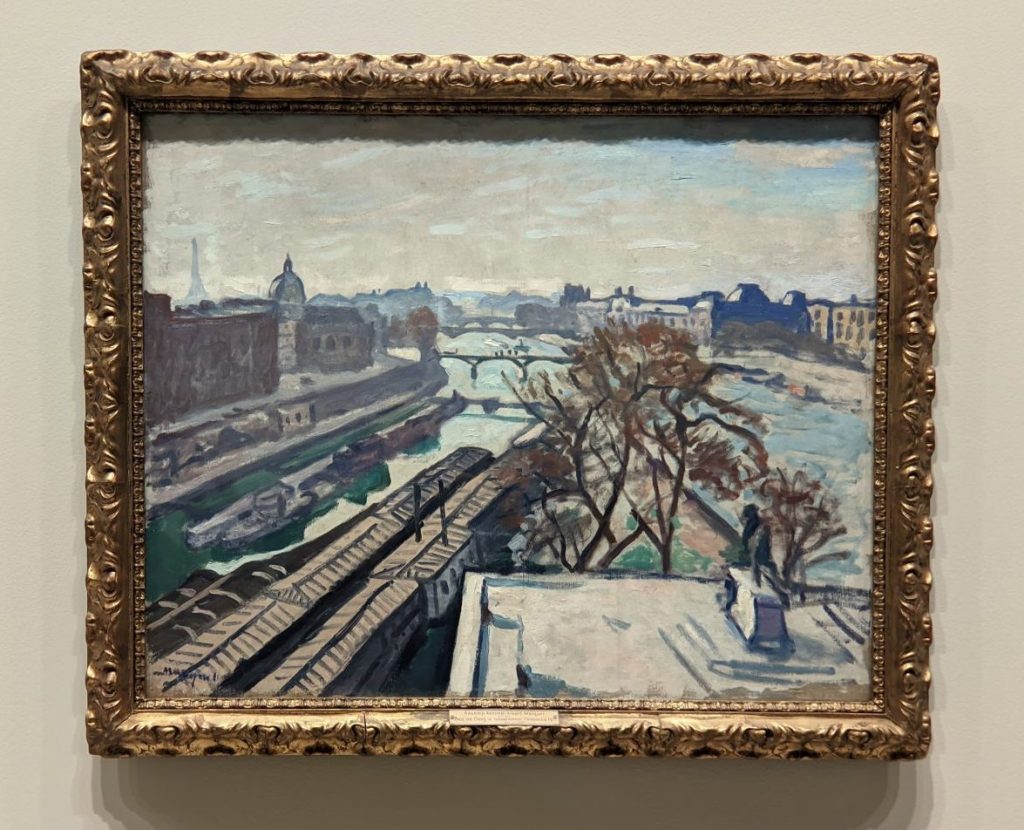

Mikhail Morozov grew more adventurous in his choices at the turn of the century, becoming the first Russian collector to purchase paintings by Gauguin and van Gogh, in 1900 and 1901 respectively. When he acquired White Night, Aasgardstrand (Girls on the Bridge), below, in 1903, Mikhail was the only Russian collector of his day to own a work by Edvard Munch, the Norwegian — an indication that Morozov’s tastes had expanded beyond Post-Impressionism to include Symbolism and Expressionism.
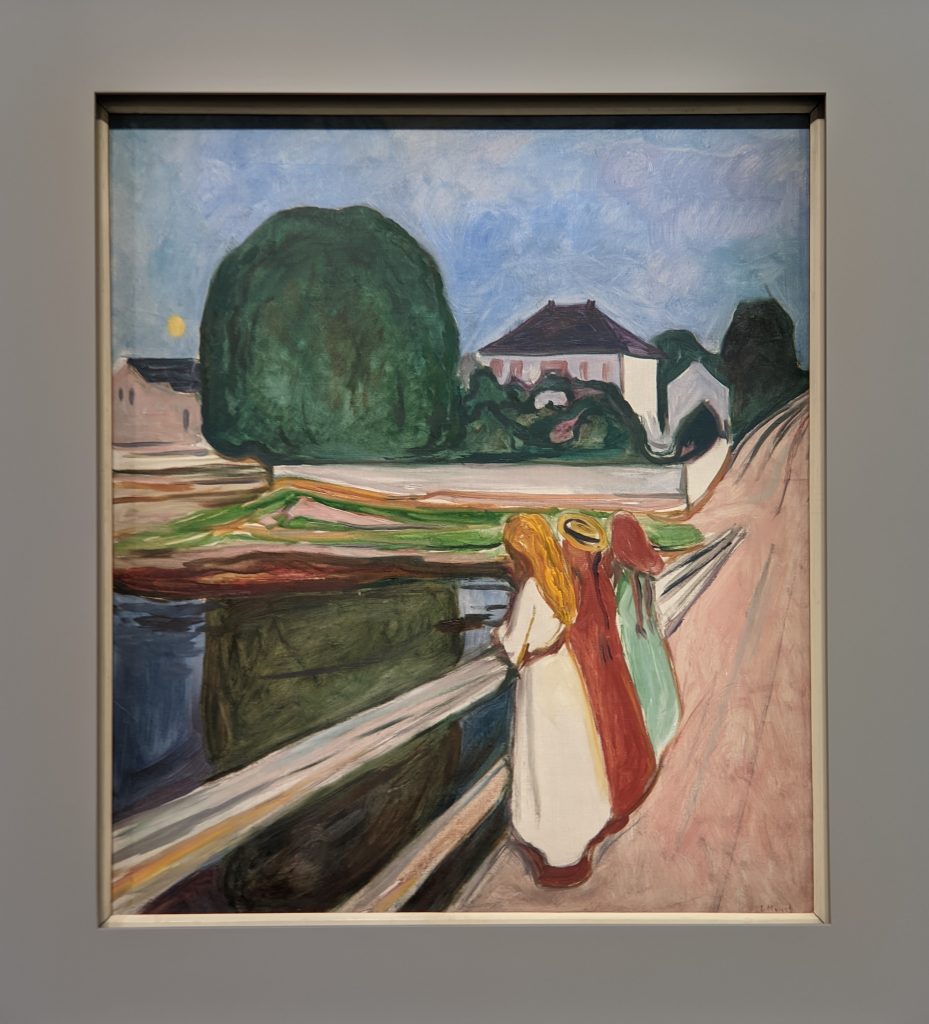
During his university years in Zurich, the younger brother Ivan became an enthusiastic amateur landscape painter, before returning home to take over the family textile business. While Moscow had been the conservative and religious heart of Russia, the city was changing and had become one of the most dynamic, forward-looking cities in the world before the 1917 Revolution. Ivan Morozov collected nudes by Henri Manguin (below left) and Charles Guérin (below right).


Paul Cézanne & Ivan Morozov
For Ivan Morozov, Paul Cézanne was his most favored painter, and eventually he would own 18 Cézannes (four of which are pictured below).
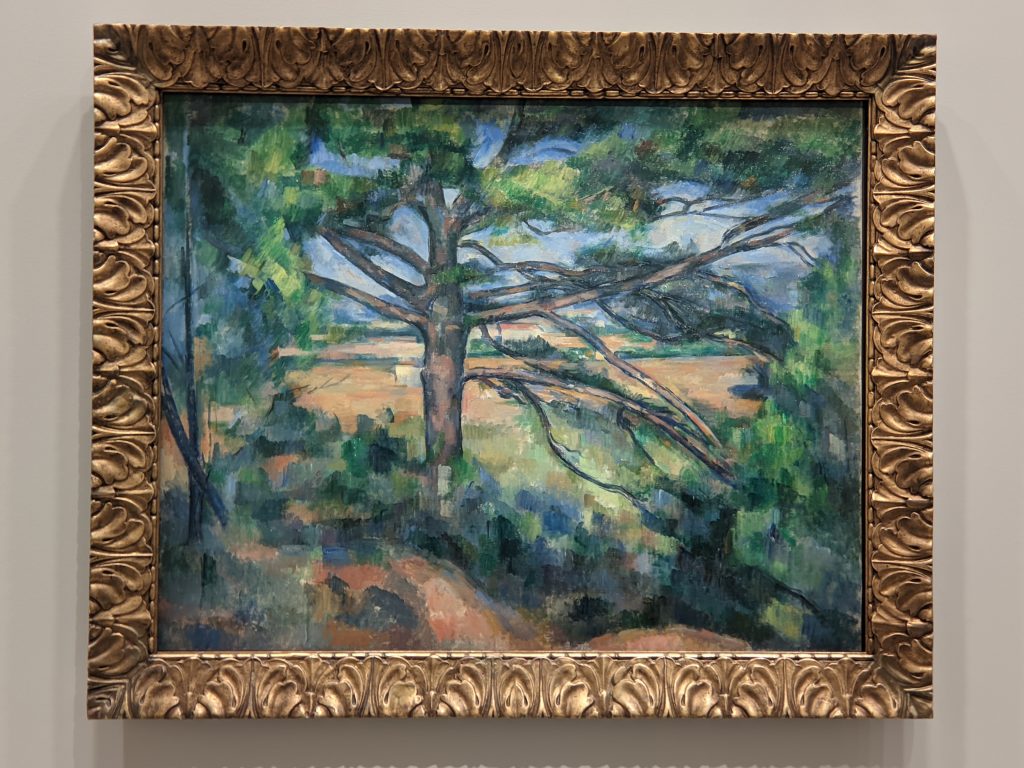
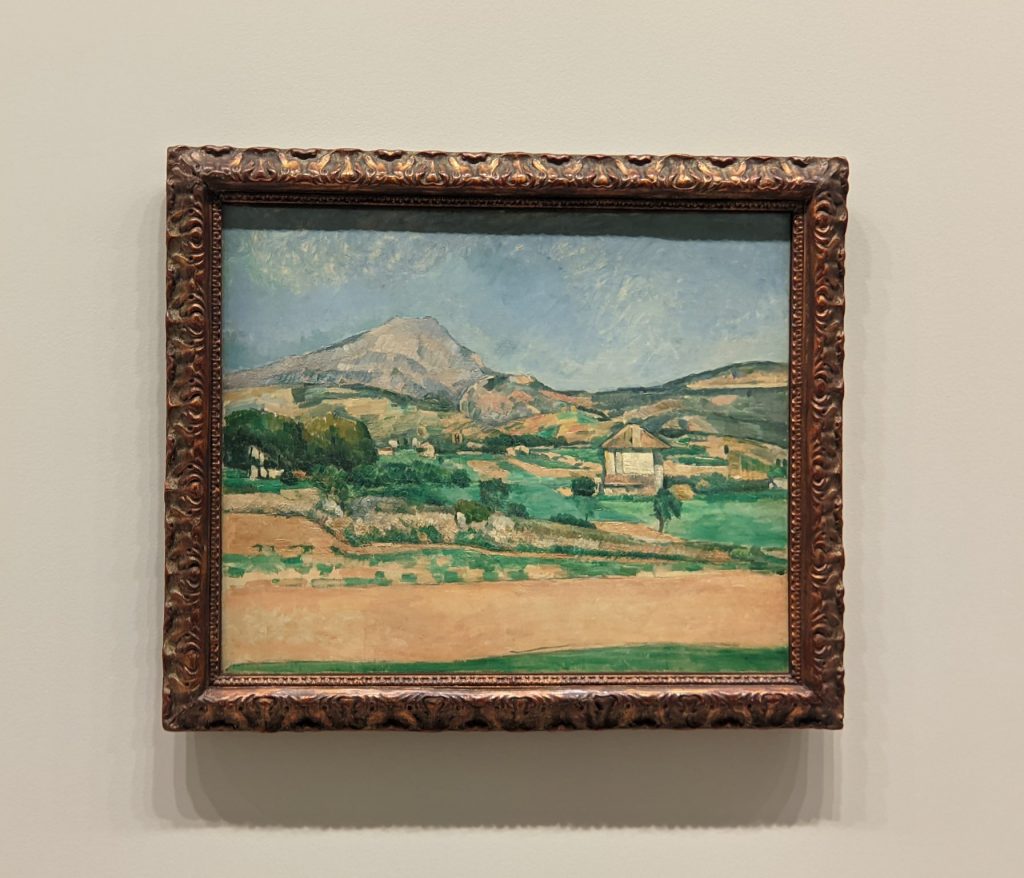
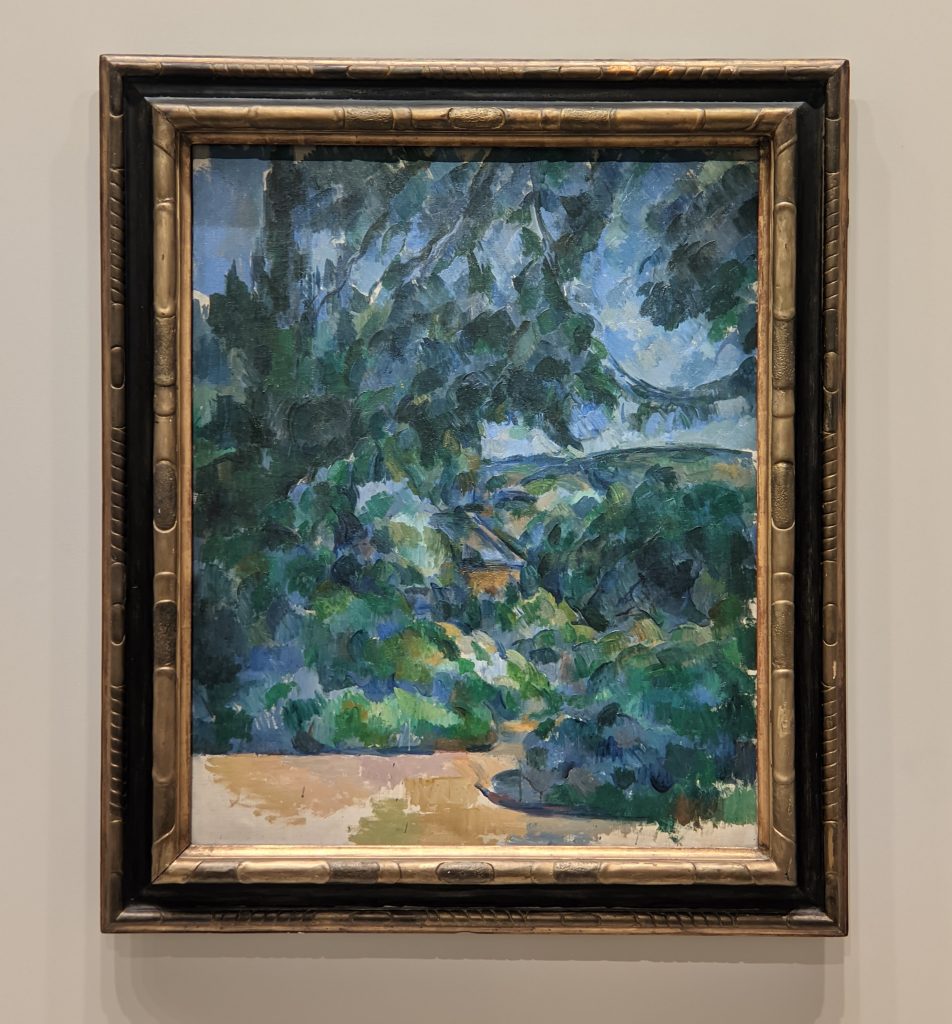
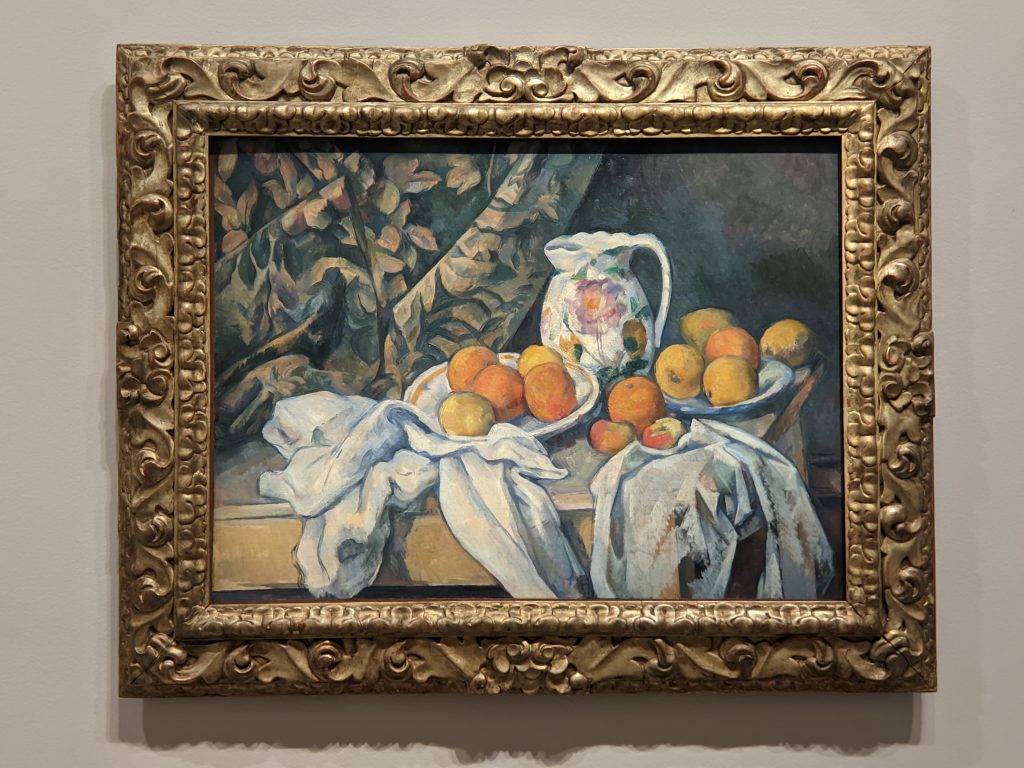
Ivan Morozov possessed very few still lifes in his collection; however, he would go on to purchase three created by his favorite artist including Still Life with a Curtain (above) knowing that Cézanne held a fascination for the genre.
Van Gogh in the Morozov Collection
While his older brother chose to purchase Vincent van Gogh’s Seascape at Saintes-Maries (below left) in 1901, eight years later Ivan selected Vincent’s more psychologically revealing The Prison Courtyard, which van Gogh painted during the time he felt “imprisoned” at the asylum in Saint Rémy five months before the artist died from a self-inflicted gunshot wound in 1890. You will notice that the prisoner closest to the viewer resembles van Gogh himself!
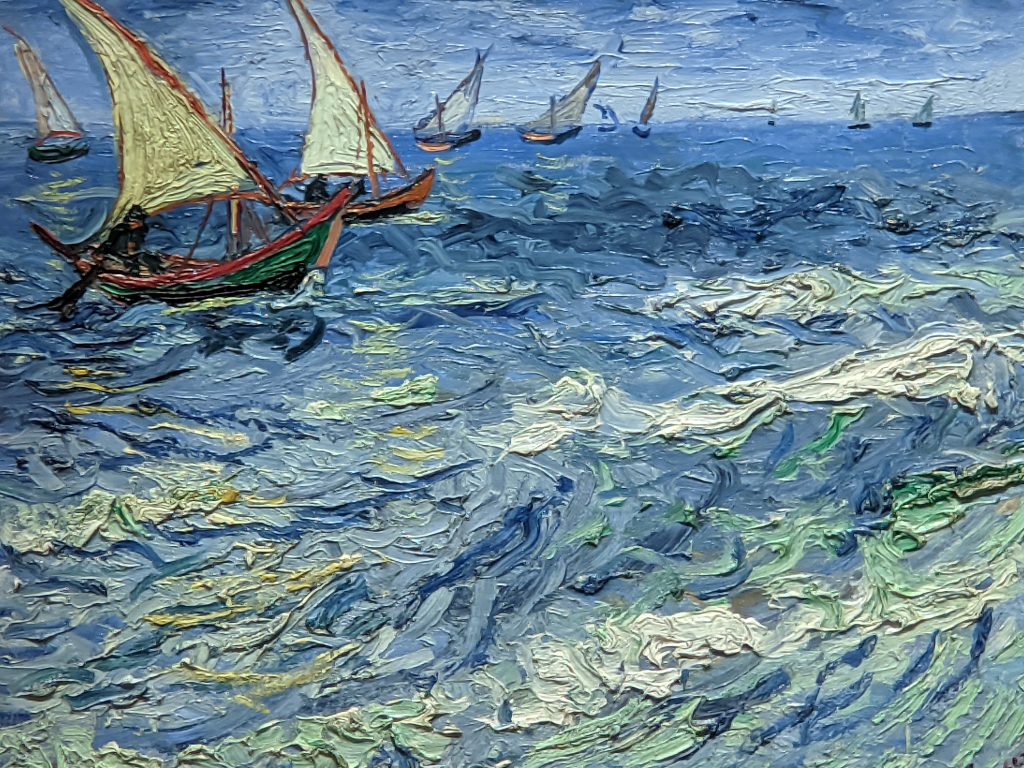

Fine works of art by André Derain (below) depicting the drying of sails in Collioure and the mountain roads leading to Cassis were also on exhibit at the Fondation Vuitton, a building located in the Bois de Boulogne and designed by Frank Gehry, which opened in 2014.

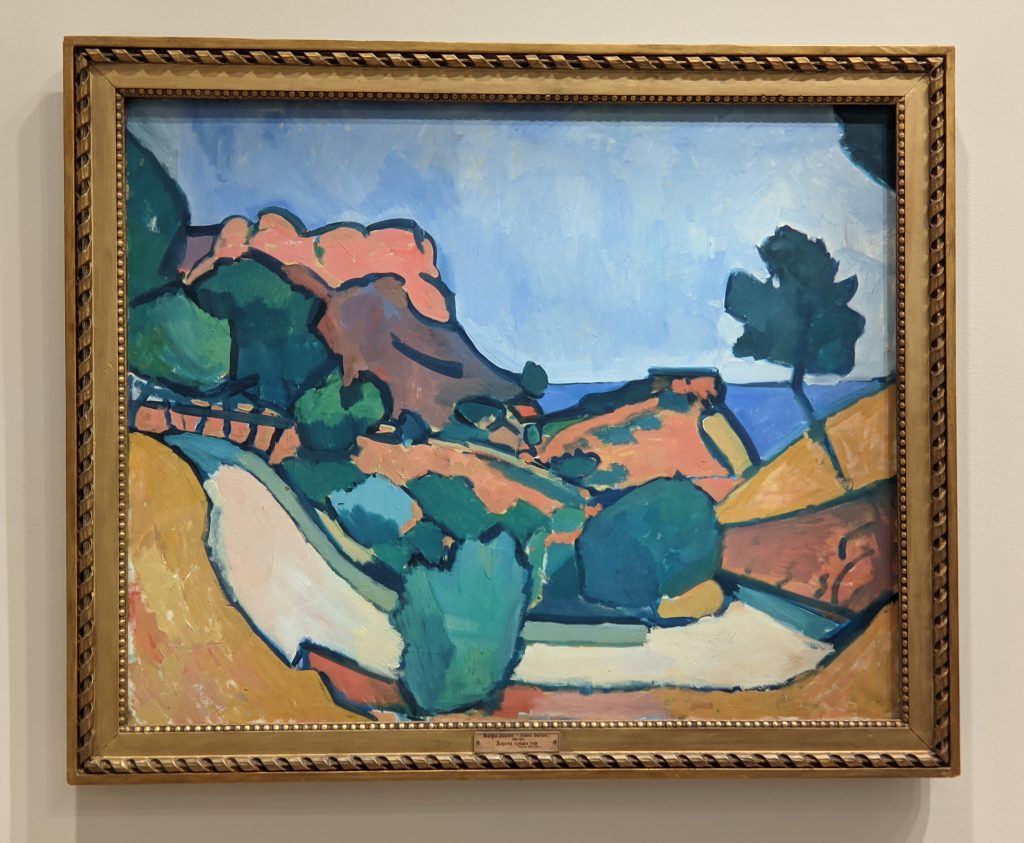

In the period 1904 to 1914, Ivan Morozov purchased 240 paintings by French artists; and in addition he strengthened his collection with fine works from Russia’s neighbors, including Lake Ruovesi (above) by the most famous Finnish master Akseli Gallen-Kallela, and two pieces (below) by Martiros Saryan, founder of an Armenian national school of modern painting.
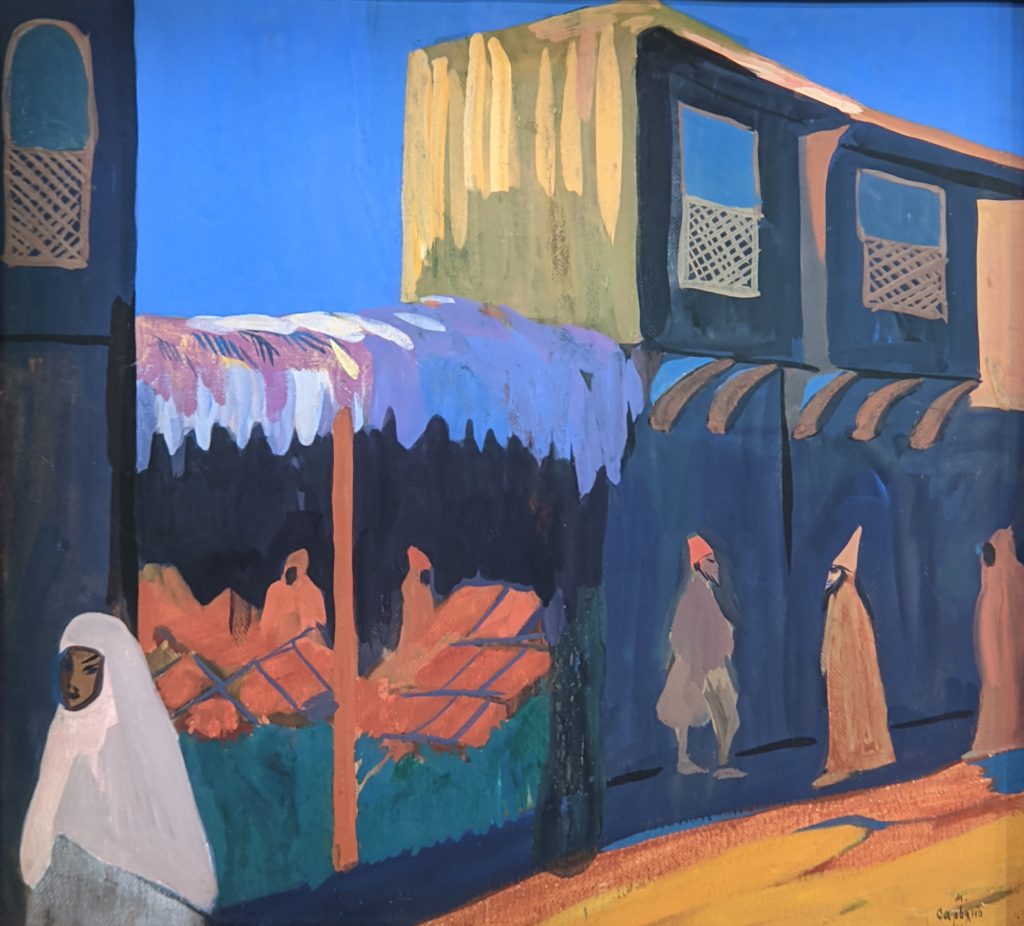
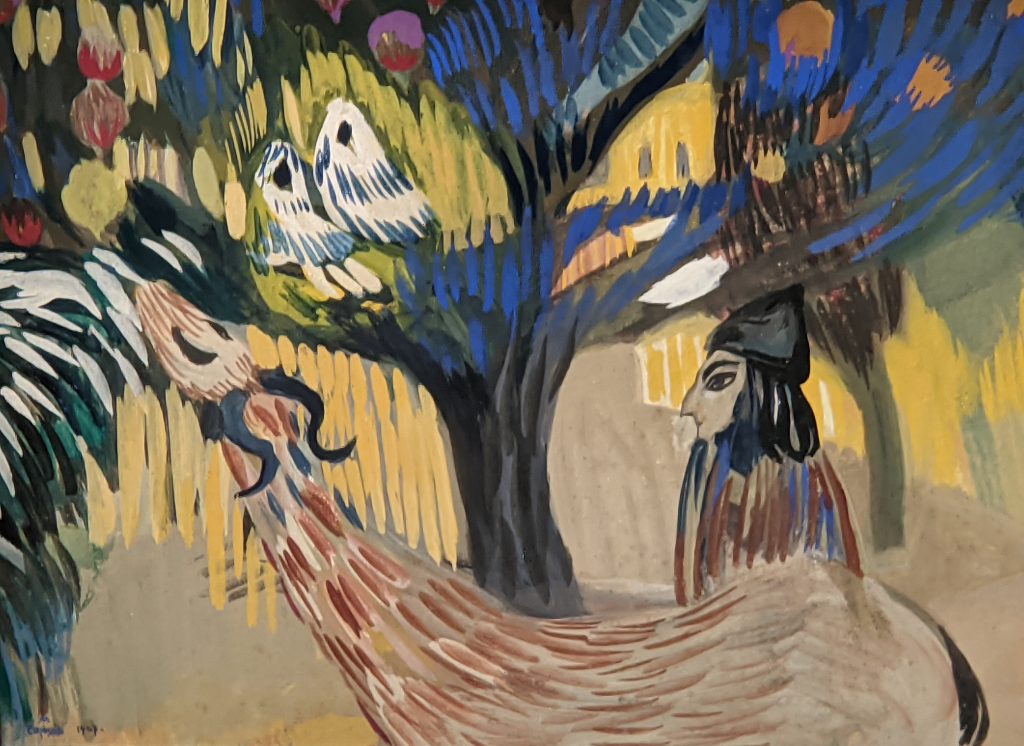
Paintings by Paul Gauguin
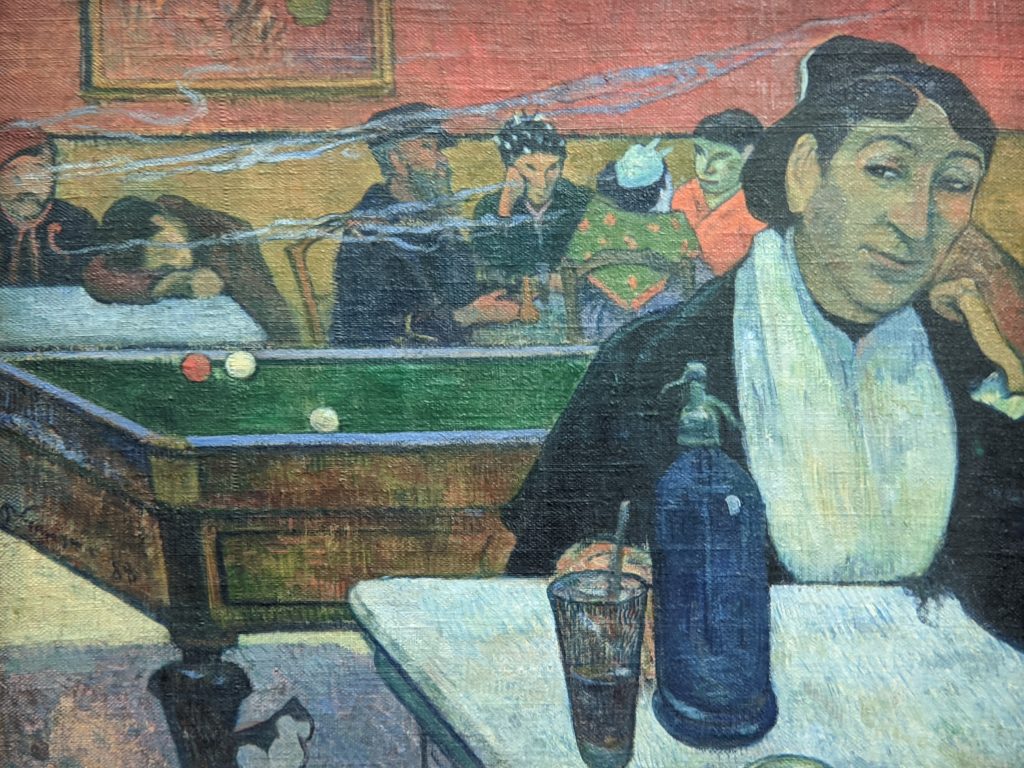
The Morozov brothers acquired 29 paintings by Paul Gauguin (1848 — 1903), and many paintings from the artist’s Tahitian period (below) are of the highest quality. When he set sail for his first trip to Tahiti in 1991, Gauguin’s avowed intent was to escape “everything that is artificial and conventional” about European civilization.
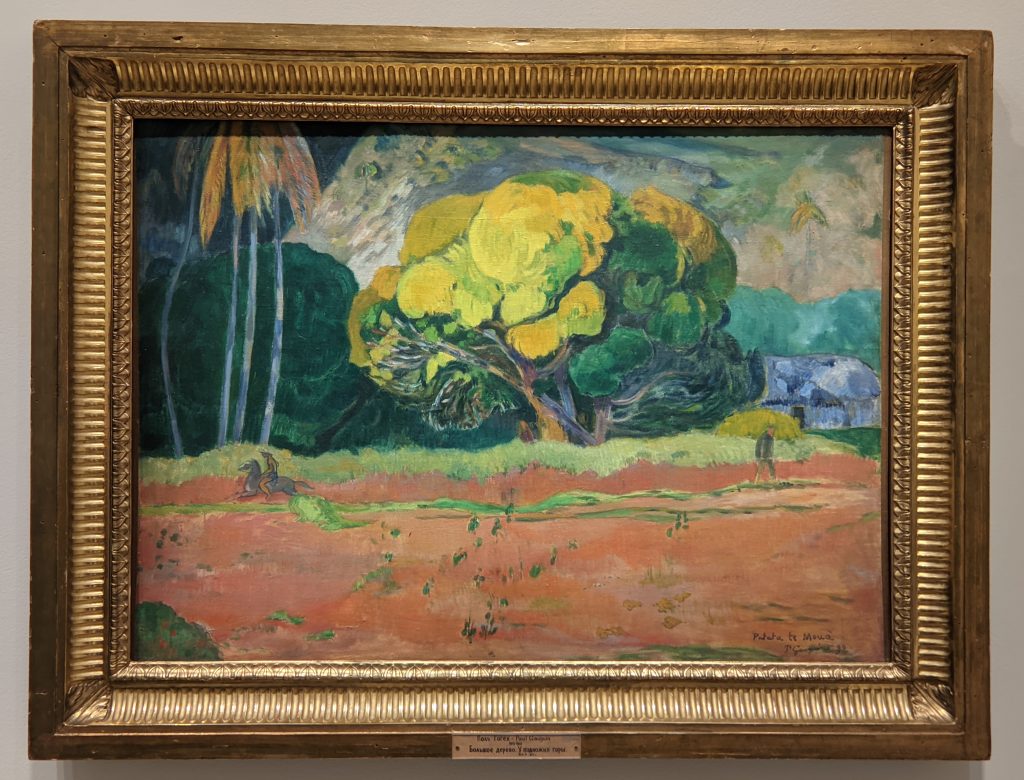

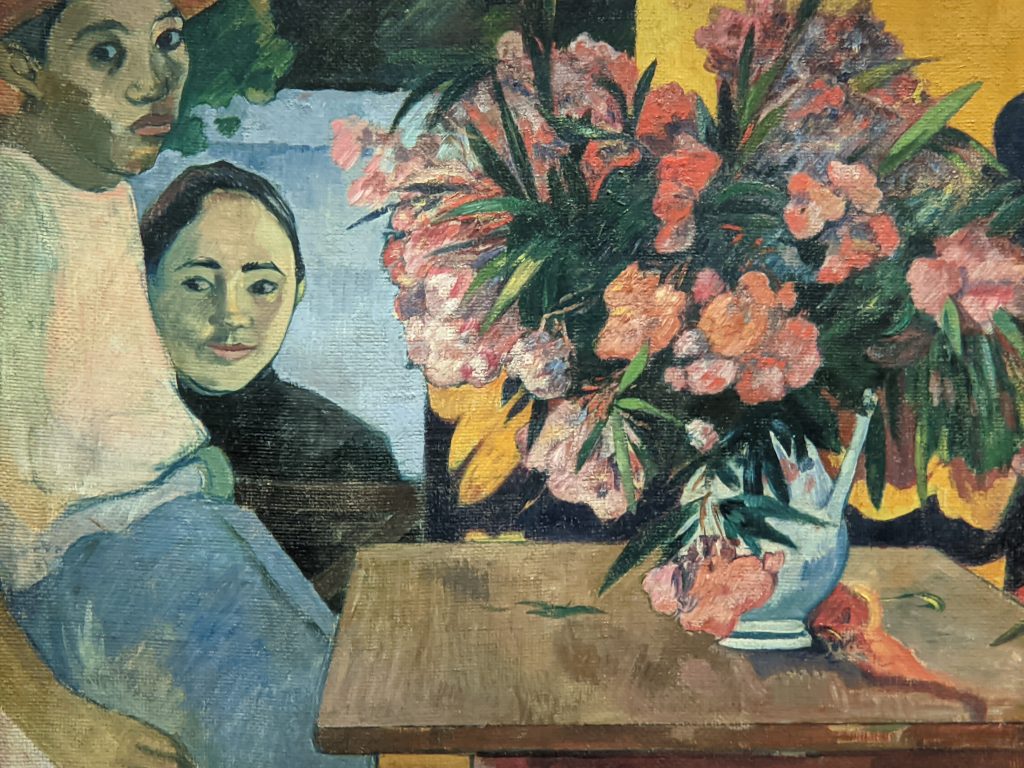
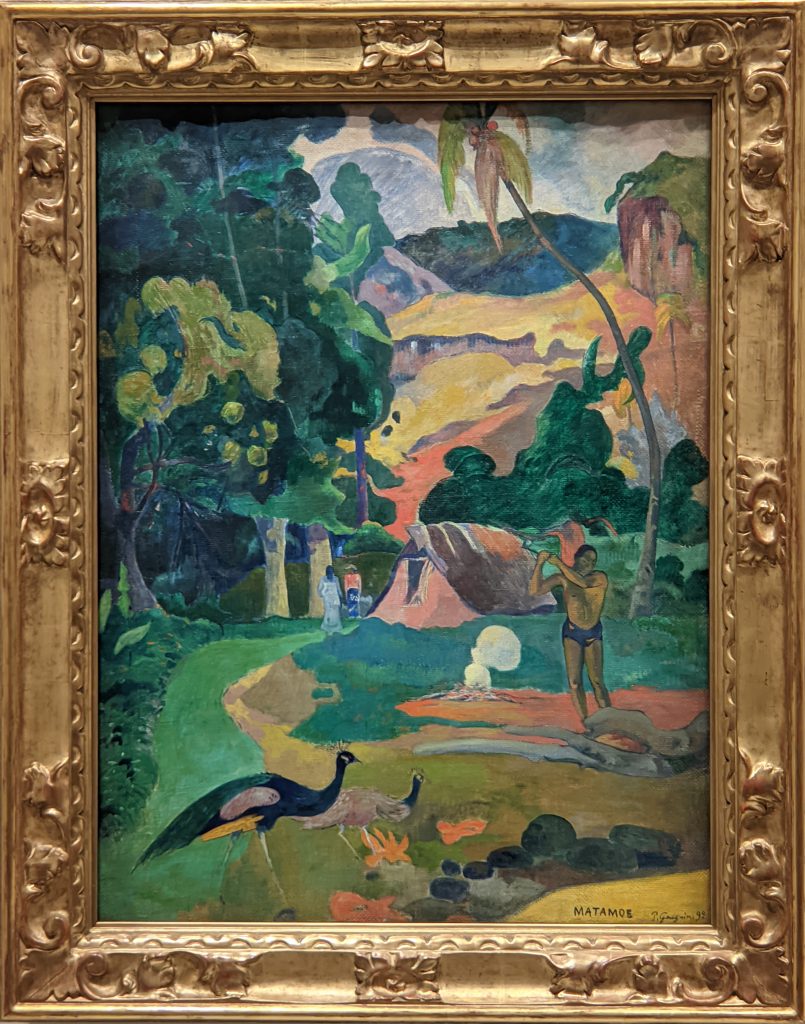
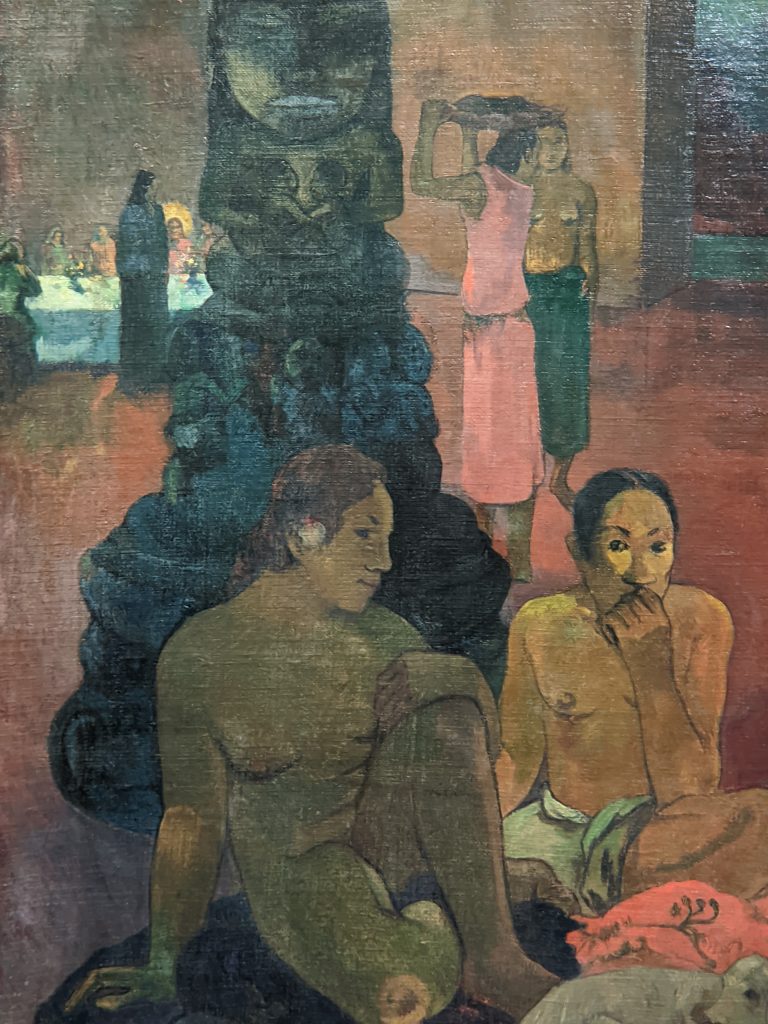

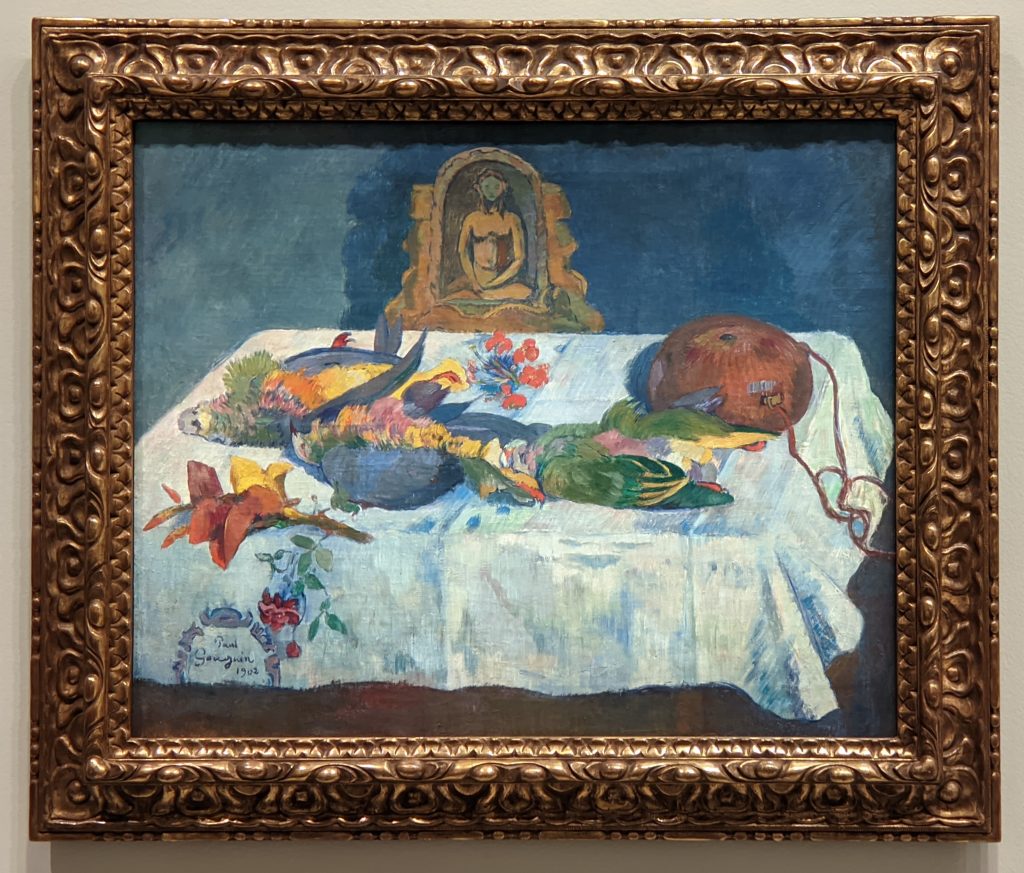
Russian Painters / Morozov Collection
Begun in 1889, Ivan Morozov’s Collection of Russian modern art amounted to 430 pieces, and included Orchard in Autumn (below) by Natalia Goncharova (1881 — 1962).
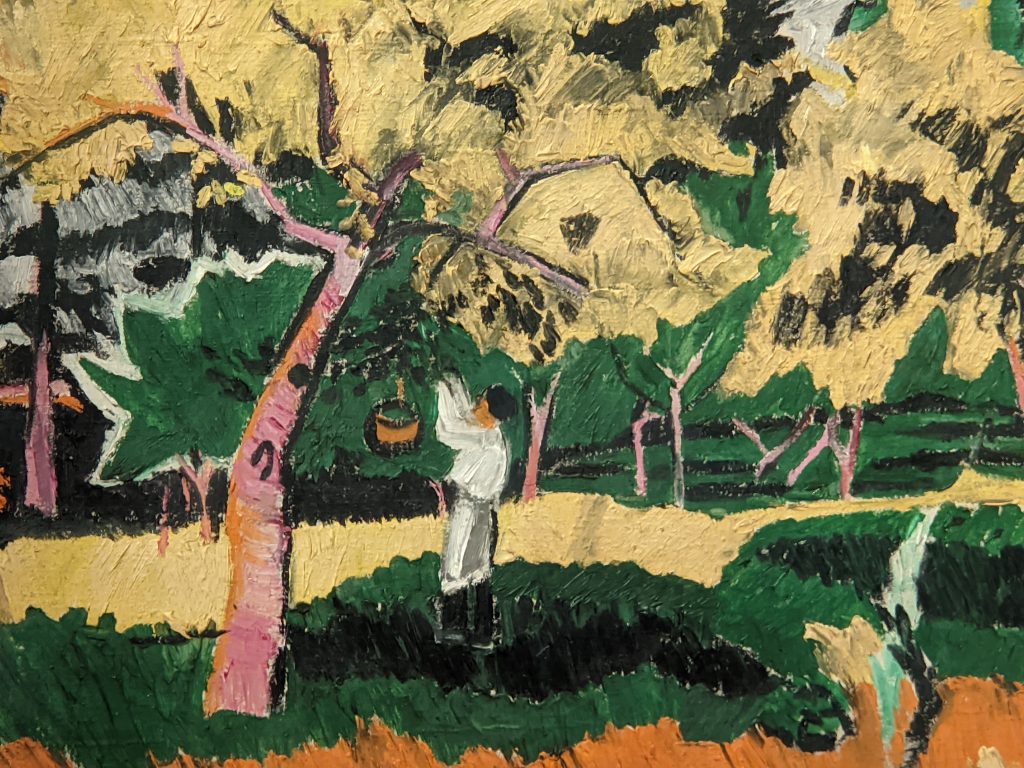
Mikhail Larianov was an avant-garde Russian painter and the lifelong partner of Natalia Goncharova. He pioneered the path toward abstraction in his homeland.
Larionov (1881 — 1964) was born in Moldova and died in France.
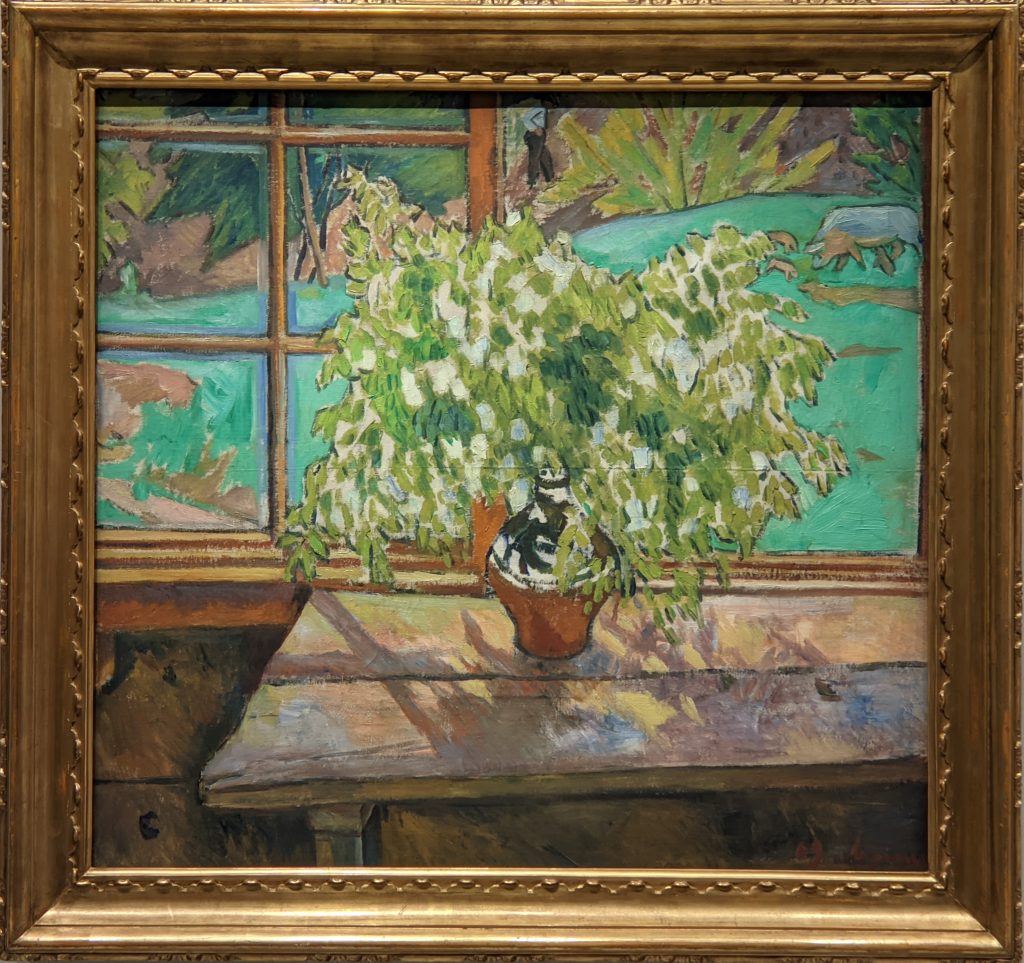
Konstantin Korovin
Konstantin Korovin (1861 — 1939) was an up-and-coming artist when Varvara Morozova engaged this painter for two years to give weekly lessons to her sons, Mikhail and Ivan. In 1885 Korovin traveled to Spain and France: “Paris was a shock for me,” he said, because through exposure to what the Impressionists were achieving “I found everything I was scolded for back in Moscow.” Korovin would become a leading Russian Impressionist and, in 1900, he was awarded the Legion of Honor from the government of France.

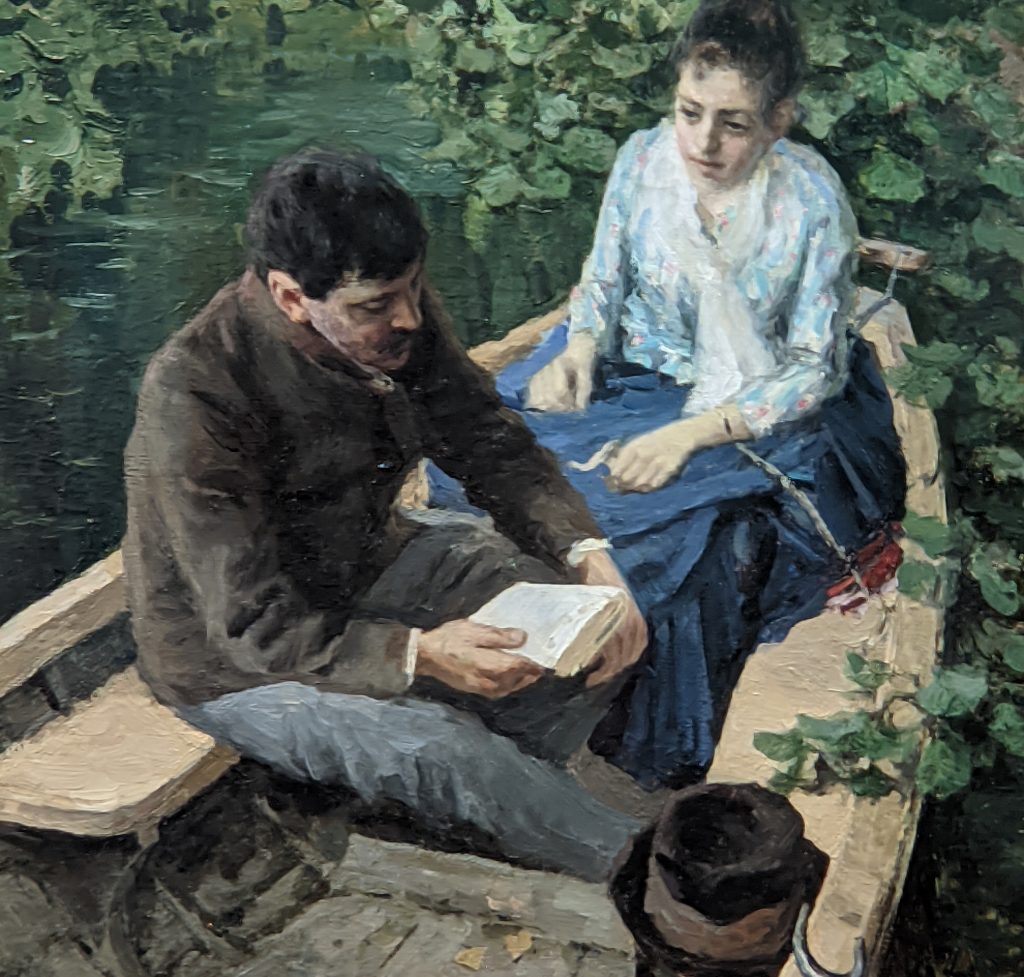
Ivan Morozov was pleased to buy works by Goncharova, Larionov and Korovin; however, he drew the line at abstraction. Morozov included Kazimir Malevich (1879 — 1935) in his collection, but the Suprematist compositions that made Malevich world-famous proved too extreme for Morozov.

Ilya Mashkov
After viewing this radiant exhibition, one could easily understand why Ivan Morozov would enthusiastically acquire Still Life, Fruit in a Dish (below) by Ilya Mashkov (1881 — 1944). Mashkov’s body of work reflects perfectly the color revolution championed by Matisse and Bonnard at the beginning of the 20th century, as well as the artistic innovations of Cézanne.
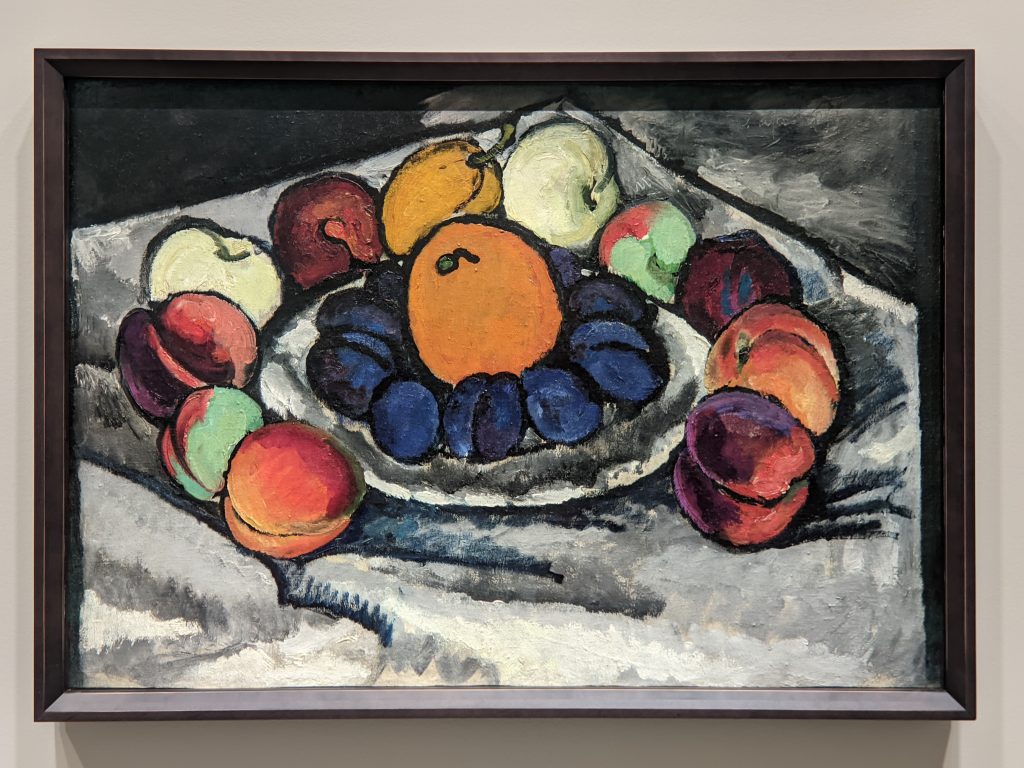
Morozov Collection & Henri Matisse
The astute collector Sergei Shchukin recognized the brilliance of Henri Matisse even before the artist was at the height of his international acclaim, and in 1910 Shchukin commissioned for his mansion two large decorative panels entitled Dance and Music.
Interestingly, it was Shchukin, Ivan Morozov’s influential elder rival, who would introduce Morozov to Henri Matisse (1869 — 1954). While the Morozov Collection contained an impressive 19 Monets, 29 Gauguins and 18 Cézannes (10 more than Shchukin’s), Ivan Morozov would ultimately acquire 50 paintings by Matisse.

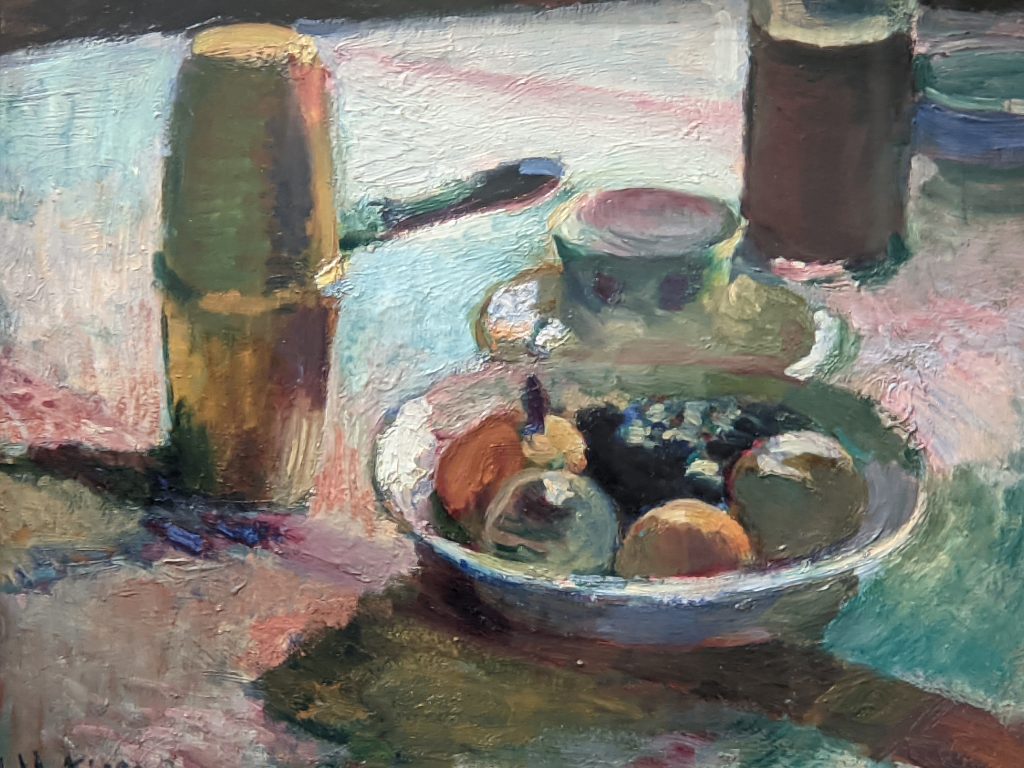
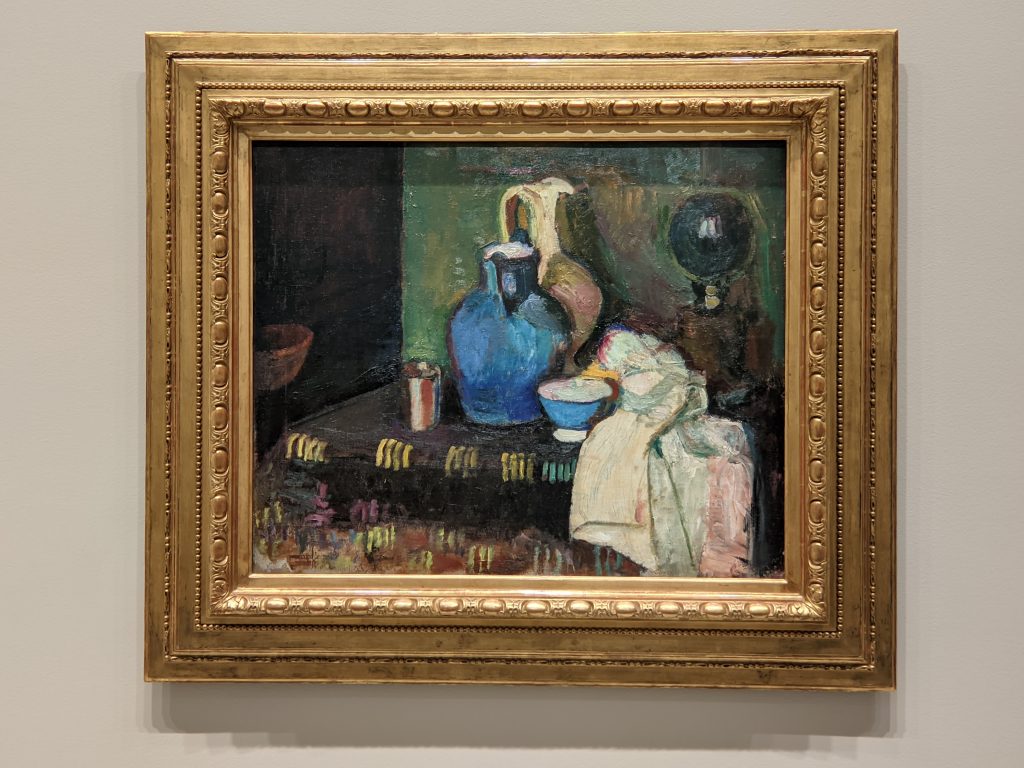
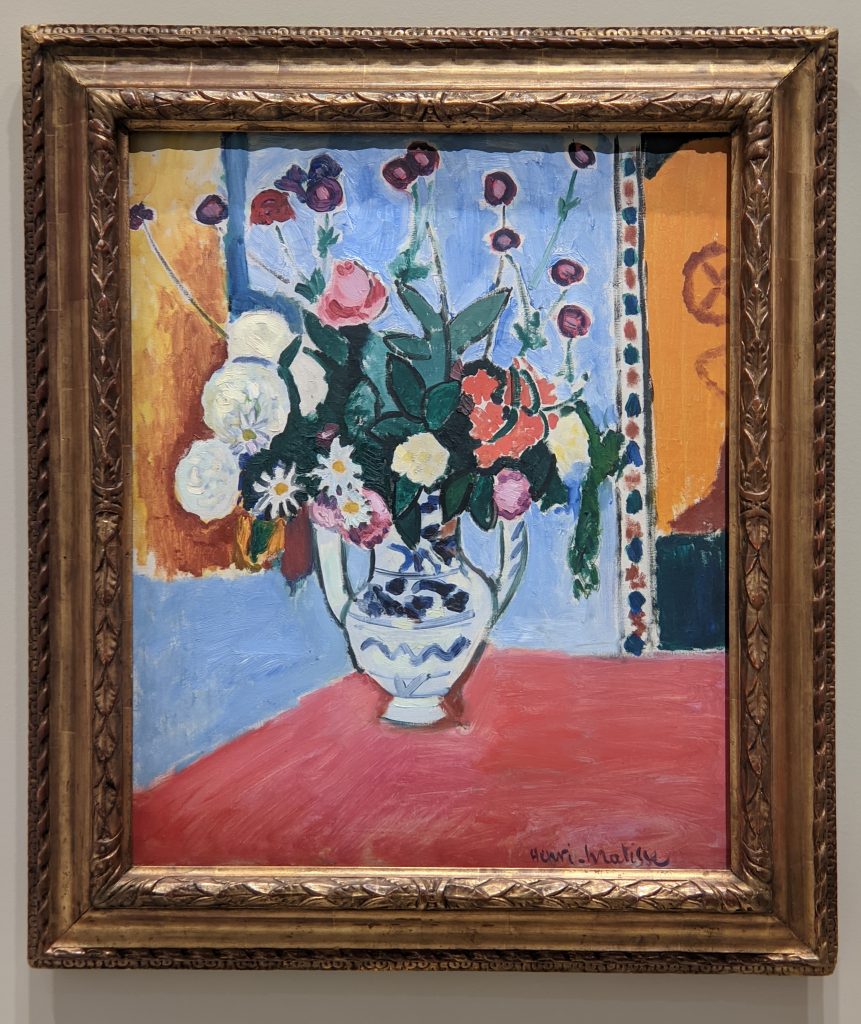
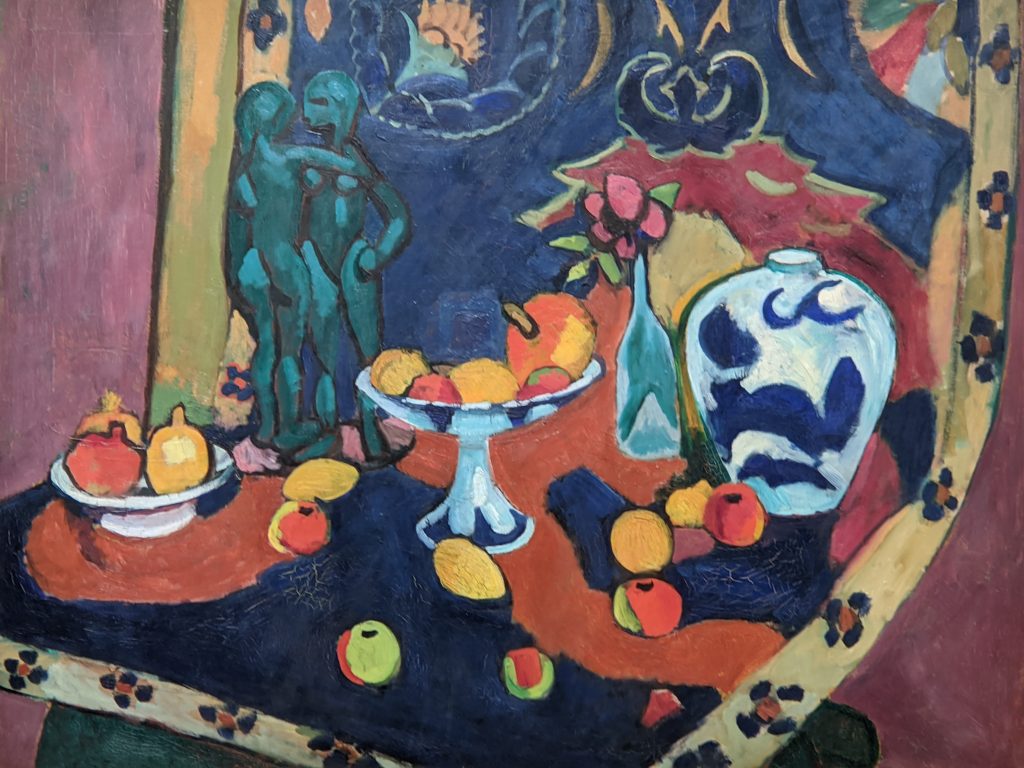
During a long stay in Tangier in 1912-13, Henri Matisse conceived the Moroccan Triptych, three large canvases (below) commissioned by Ivan Morozov.
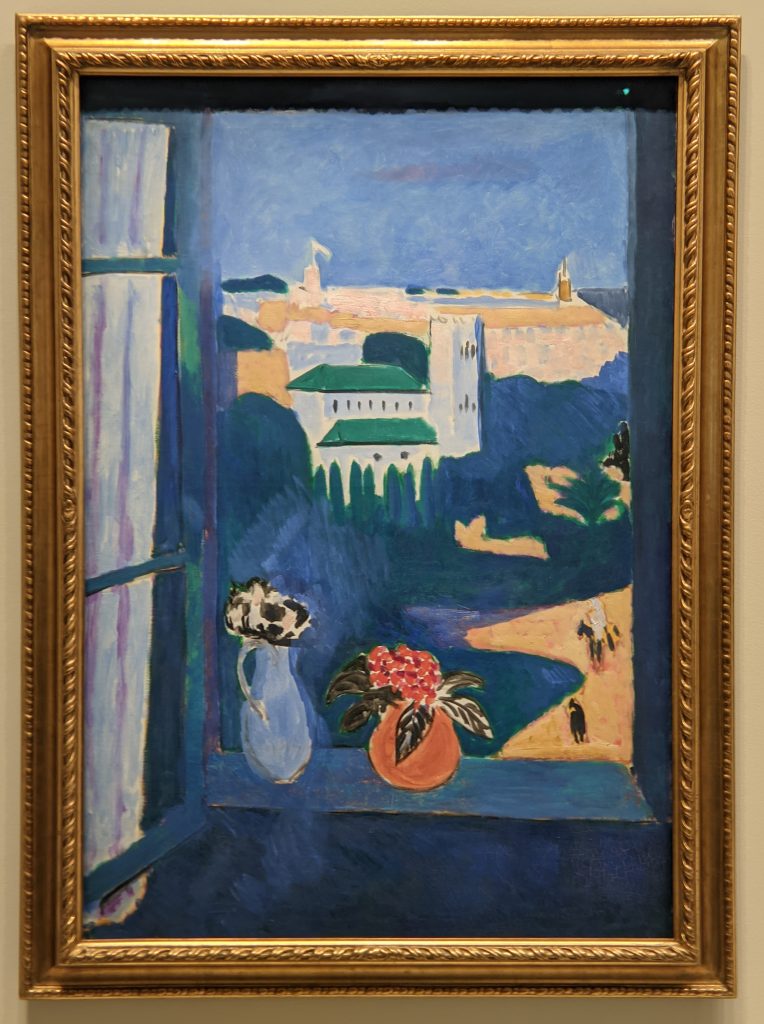
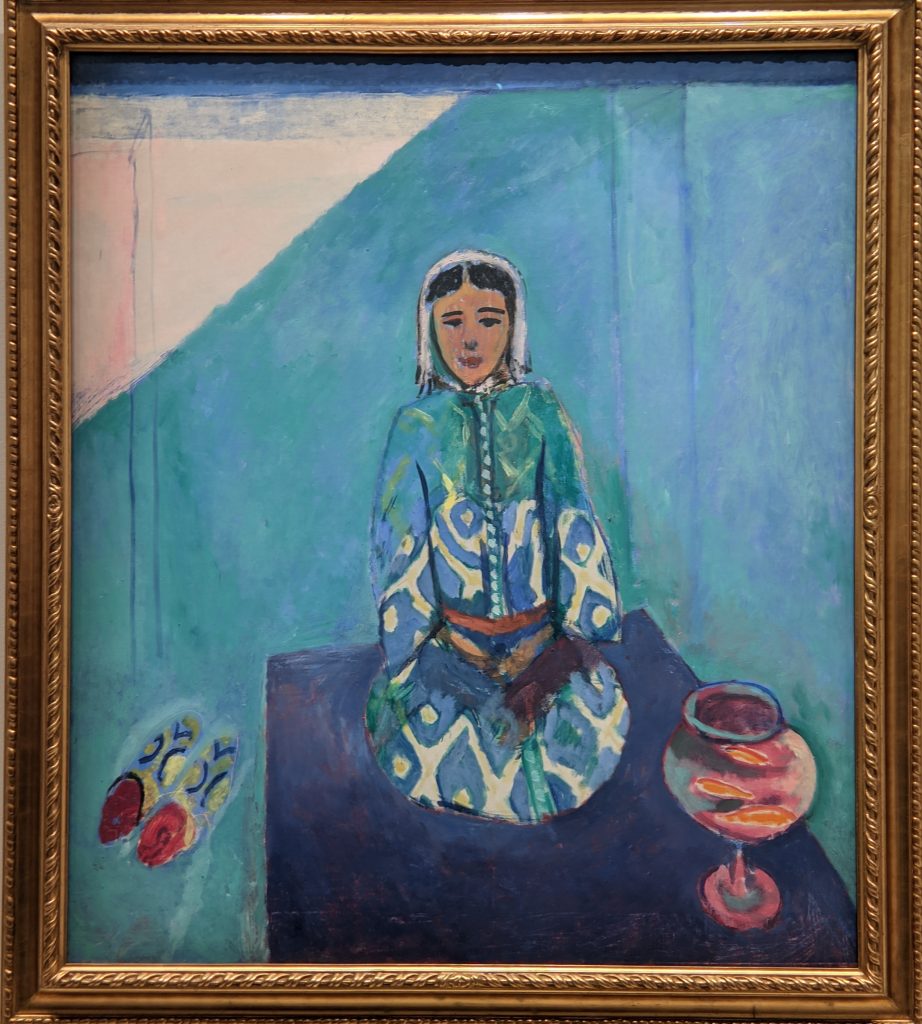
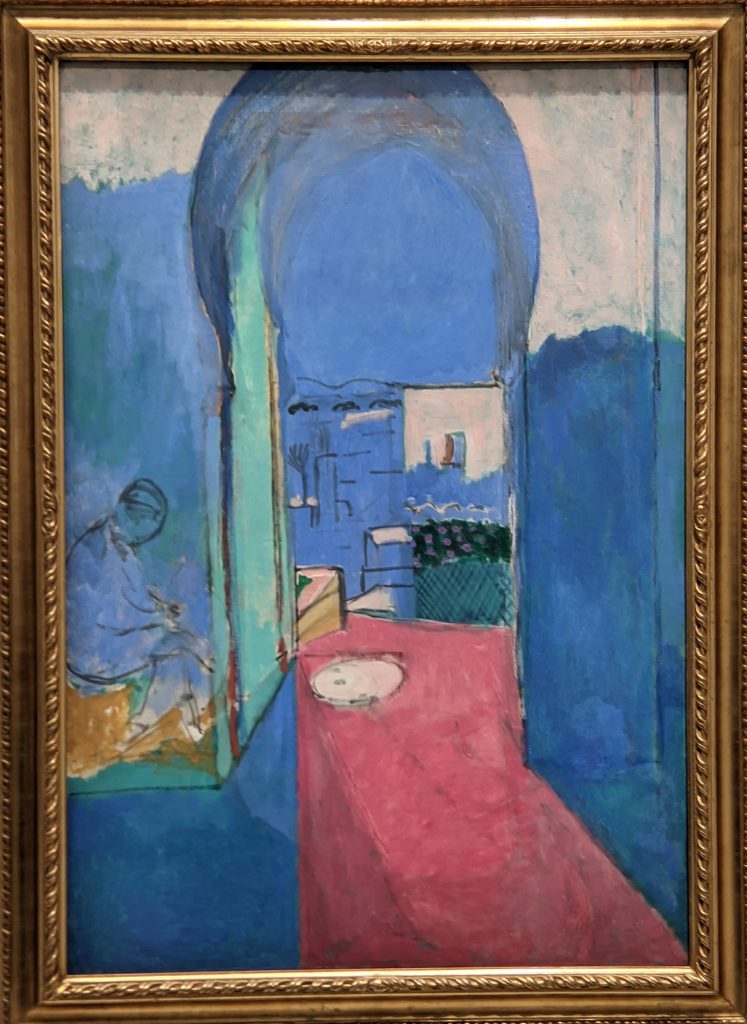
Ivan Morozov exhibited great courage through his artistic choices, including his lifelong appreciation of the nude as a genre, evidenced by his collection of sculpture (below) by Sergei Konenkov (1874 — 1971), known as the “Russian Rodin.”

Pablo Picasso in the Morozov Collection
To understand succinctly the difference in taste between Shchukin and the Morozov brothers — the greatest Russian patrons of modern art — one need look no further than Pablo Picasso (1881 — 1973). Though Ivan Morozov was the first collector to bring a Picasso to Russia when he purchased the Blue Period The Two Saltimbanques in 1908, he was a reserved man and a methodical connoisseur who would acquire only two other Picassos, Acrobat on a Ball from the artist’s Rose Period and Portrait of Ambroise Vollard. Vollard was the gallery owner from whom Ivan sourced much of his French art, and this portrait (below) represents the only purely cubist artwork in the Morozov Collection.
By contrast, Sergei Shchukin enjoyed the challenges presented by the most avant-garde art; he owned 50 choice canvases by Picasso, including many of his earliest Cubist paintings.

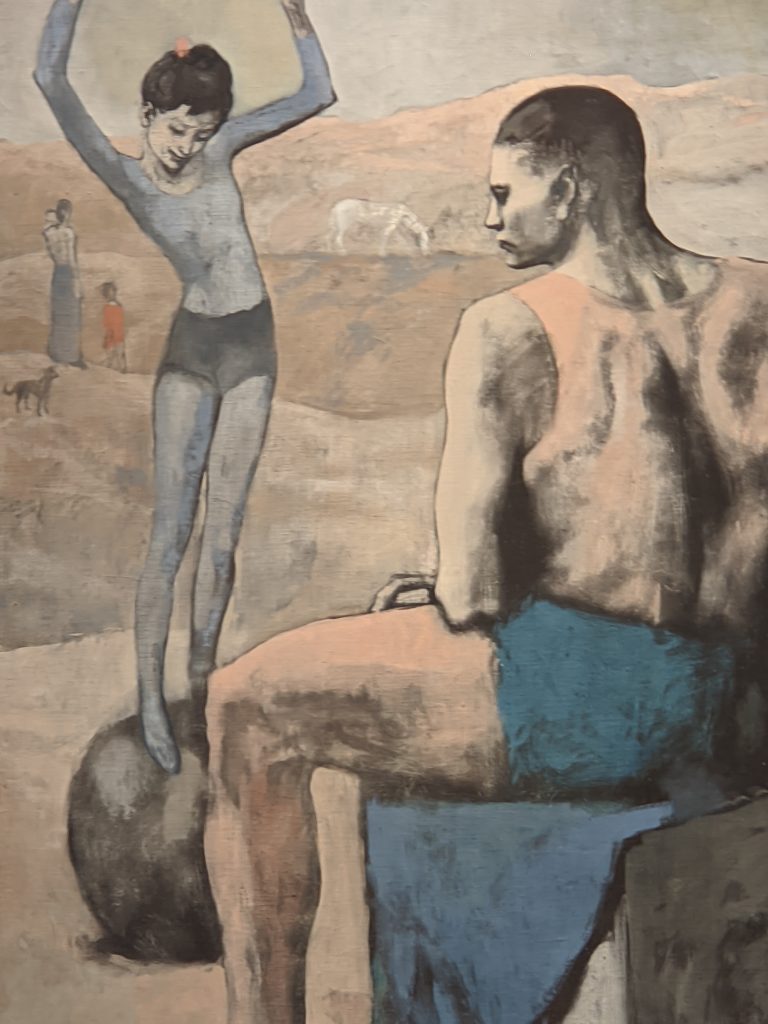
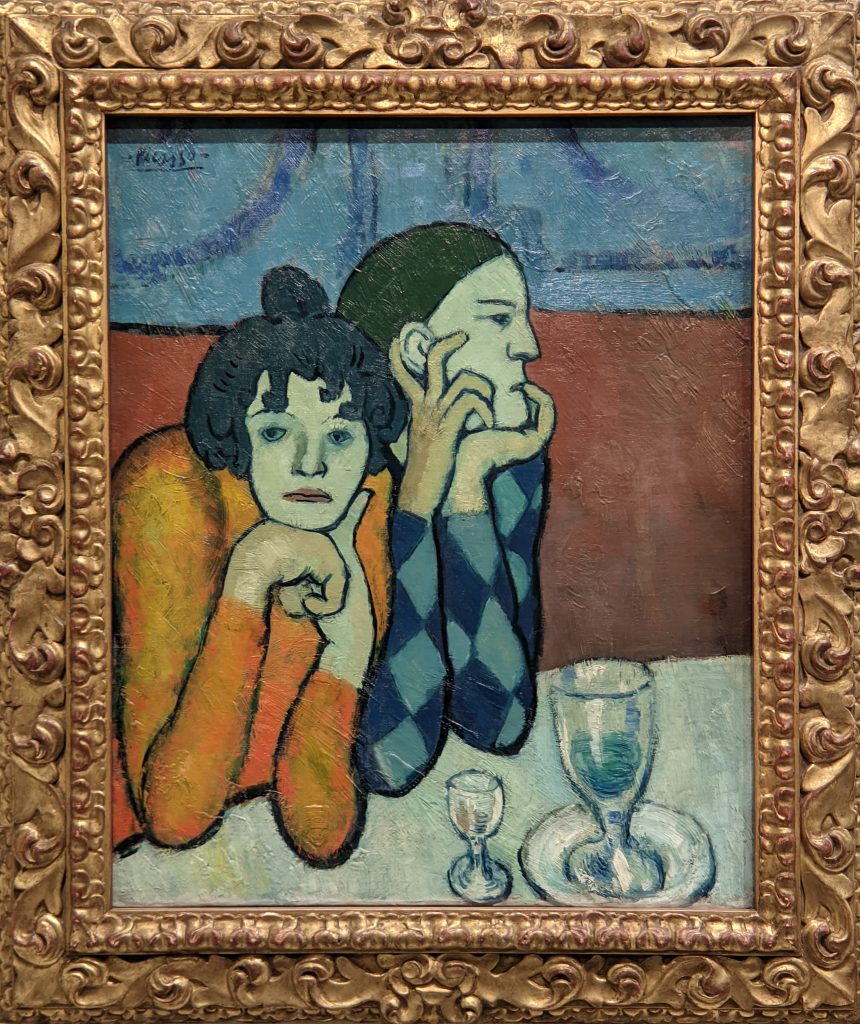
Pierre Bonnard
Morozov cherished his Cézannes and loved his Matisses. Pierre Bonnard (1867 — 1947) was another favorite artist of Morozov, and deservedly so.
When Matisse, the leading proponent of Fauvism, was taken to the Phillips Collection in Washington, D.C., and discovered that Bonnard was given more prominence than himself, Matisse commented “… and quite right too. Bonnard is the strongest of us all.”
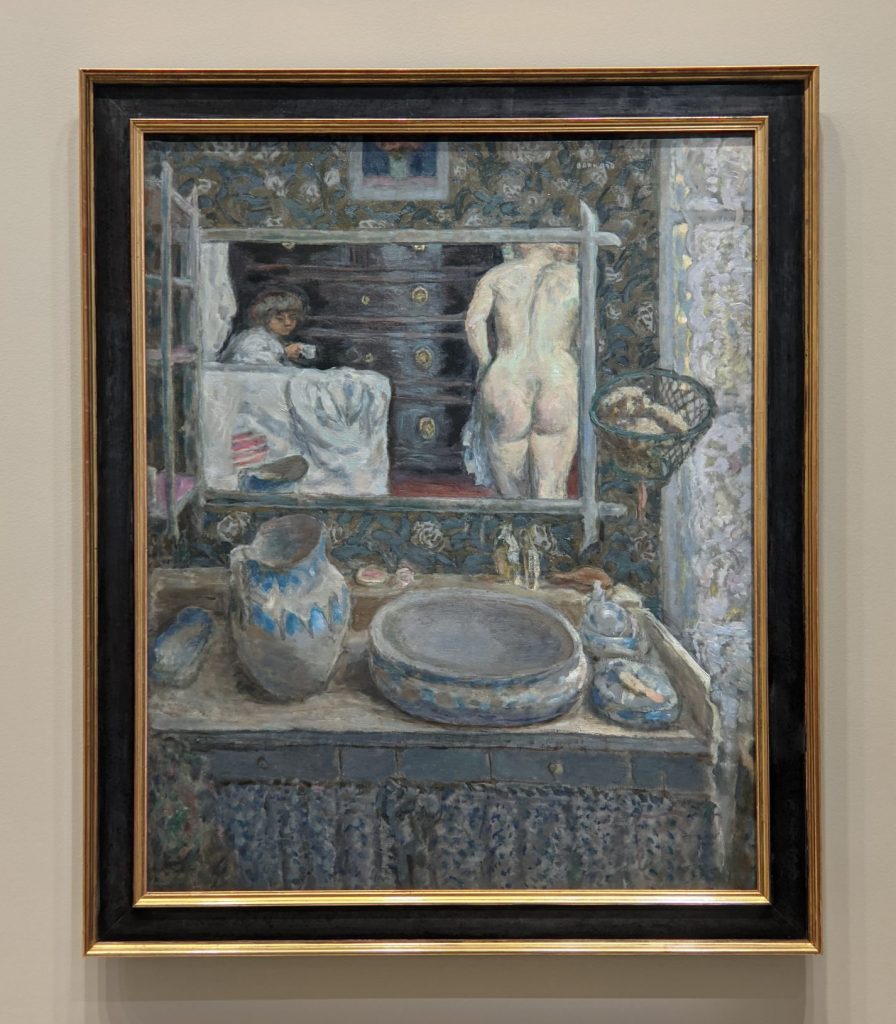
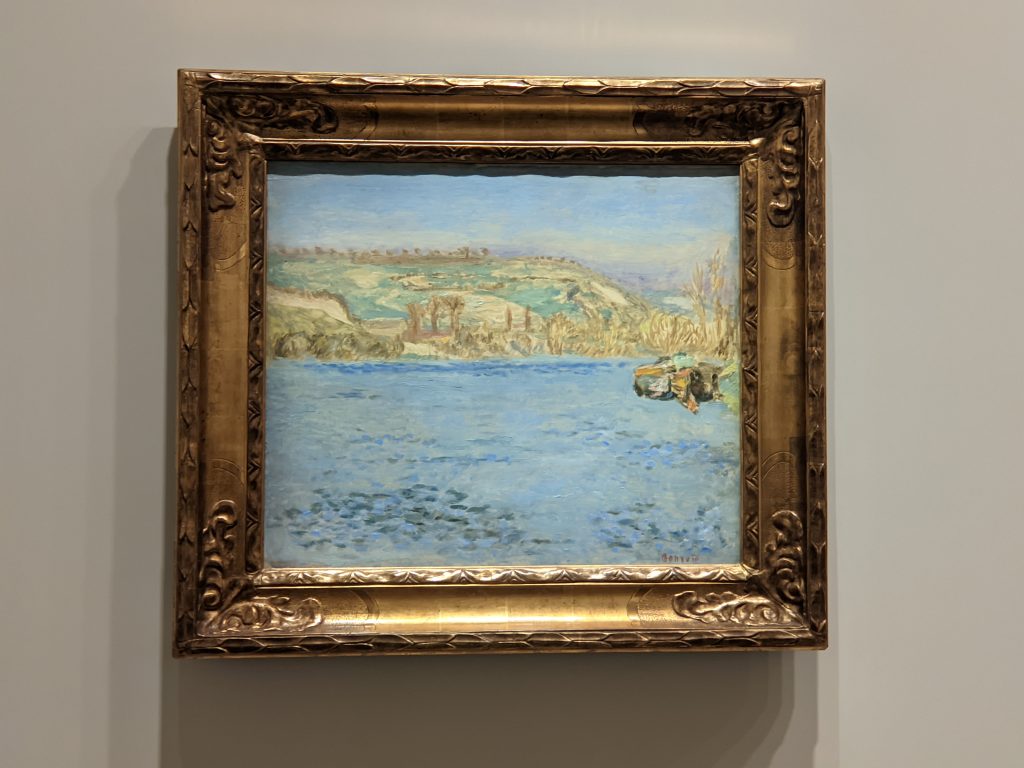


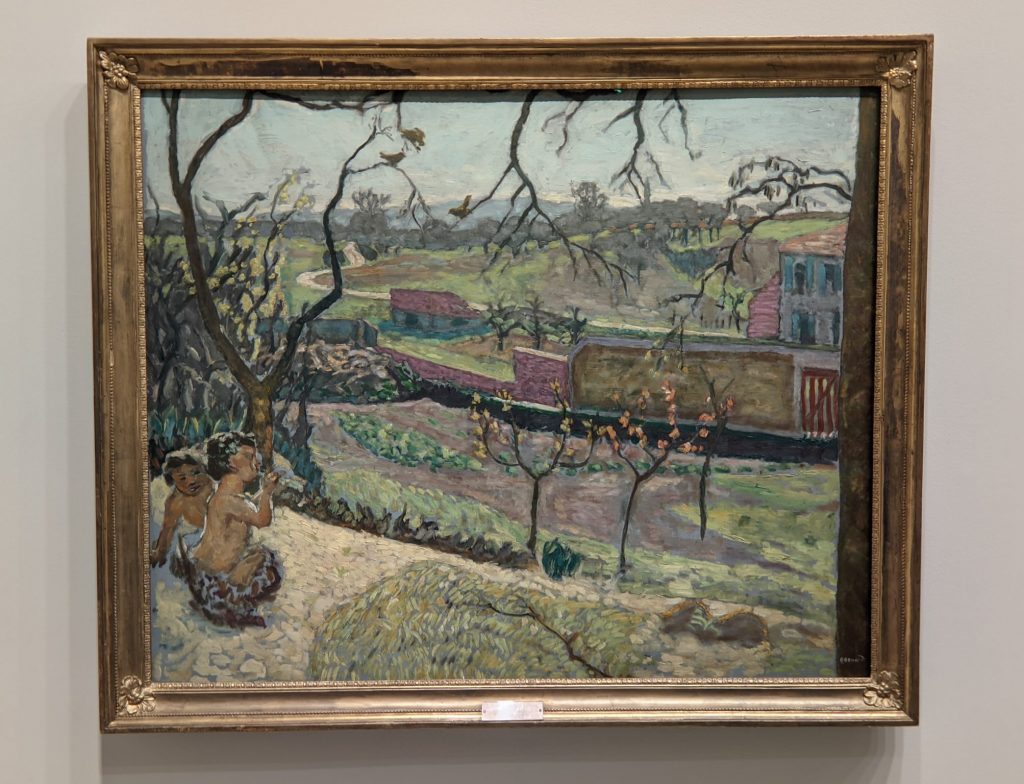
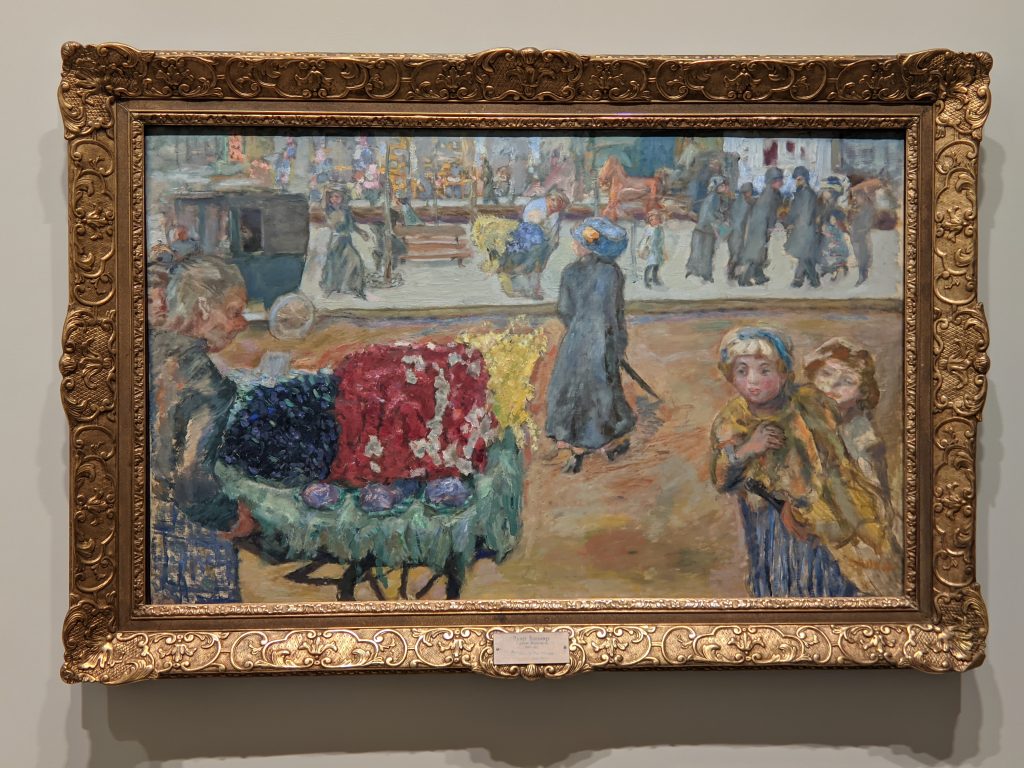
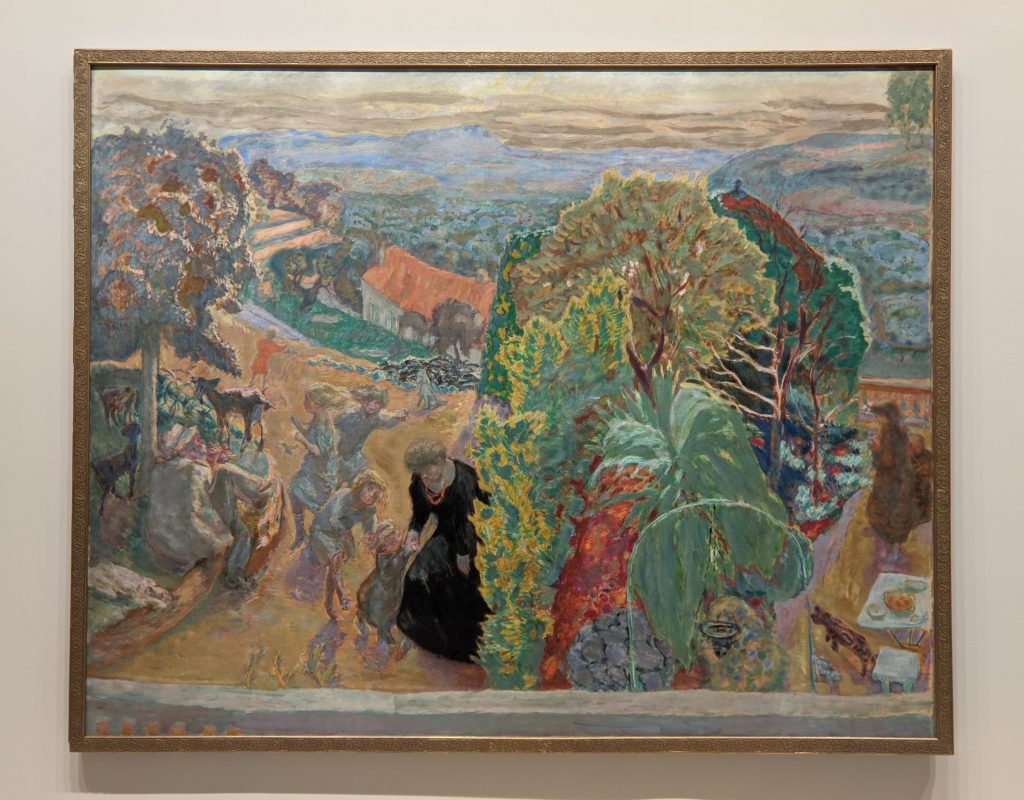
In 1977, a review in The New York Times of a Bonnard exhibition began with the following assessment: “At his best, Pierre Bonnard (1867 — 1947) was one of the greatest painters of all time. In the freedom and audacity of his color, he makes the Fauves look timid.”
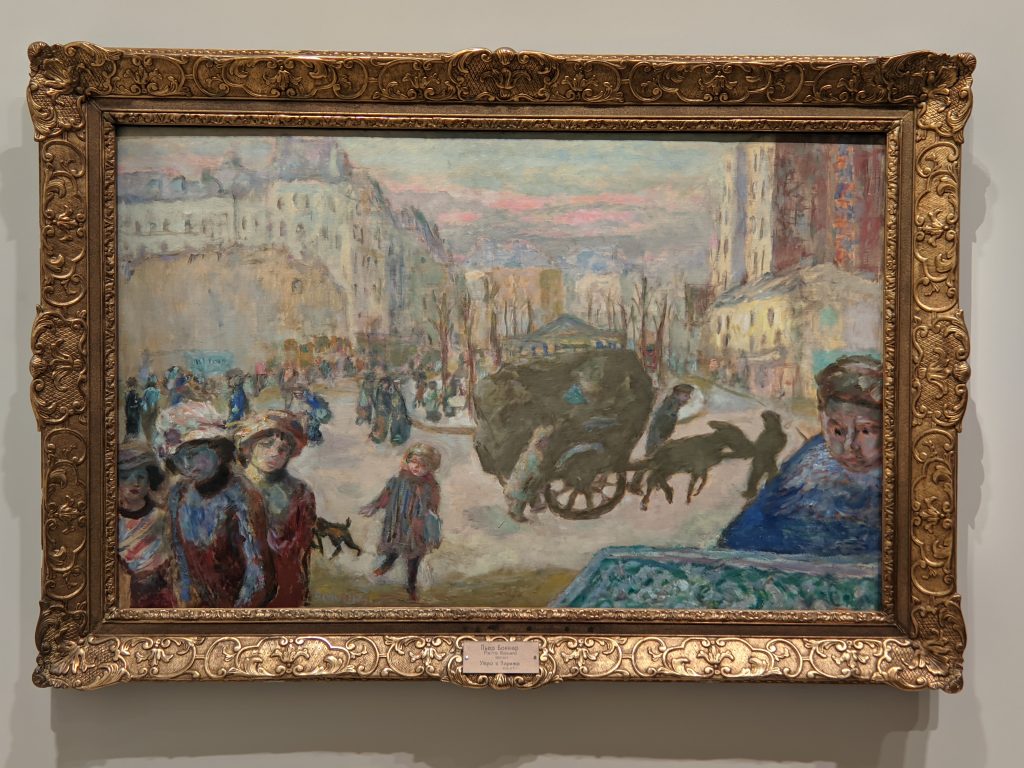
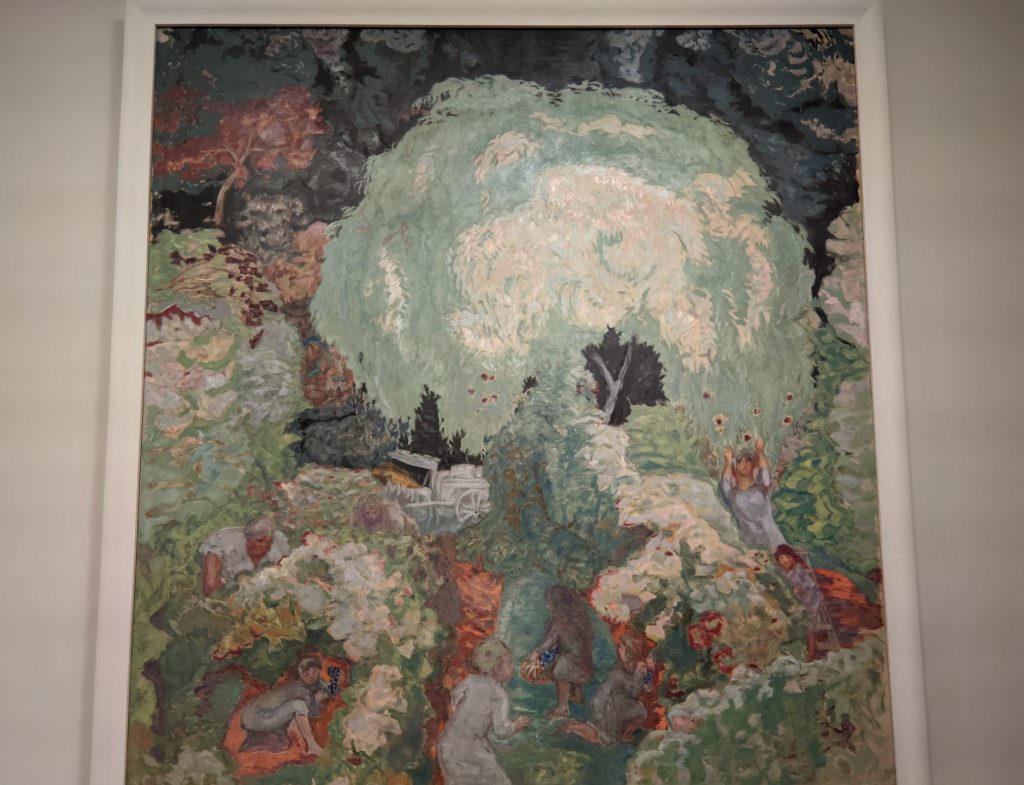

In 1910, Morozov commissioned Bonnard to paint La Méditerranée (above and below), a triptych, for his Moscow home, where it was prominently displayed above the staircase.
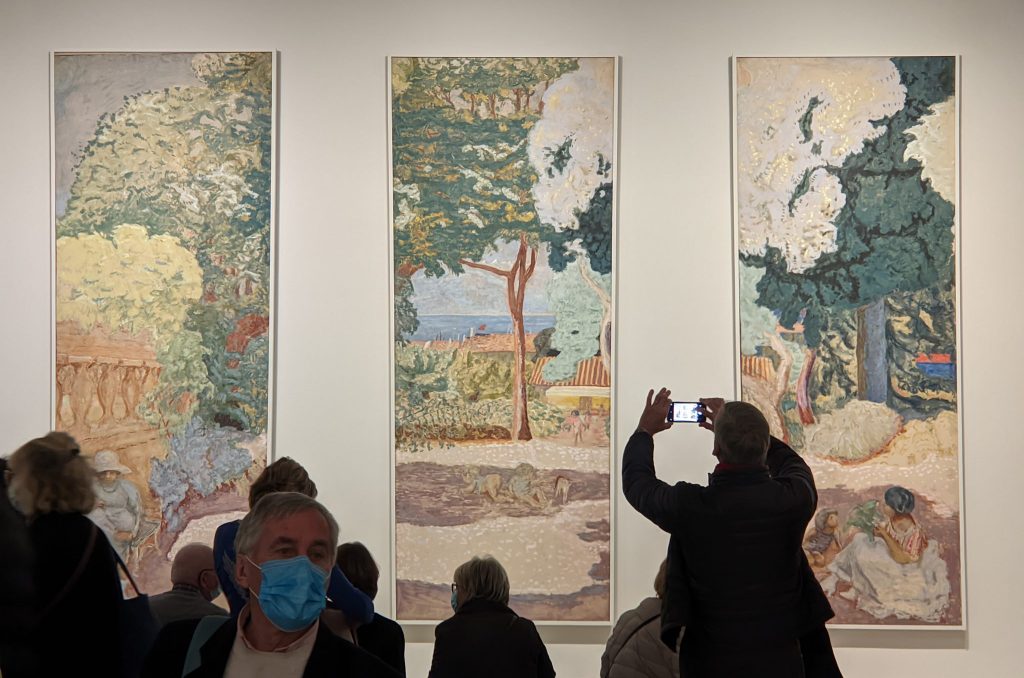
The two textile magnates and visionaries, Shchukin and Morozov, maintained friendly relations when they lived in Moscow, but both would leave revolutionary Russia soon after their collections were nationalized. Morozov passed away in Karlovy Vary in 1921, and his grave is situated in the Czech Republic; Shchukin died in Paris in 1936 and is buried in the Cemetery at Montmartre.
The Vuitton’s series Icons of Modern Art reminds us that artistic appreciation and legacies are also affected by affairs of state. In the 1930s and 40s, many of these masterpieces disappeared from public view for decades, and the collections were dispersed “on the basis that the propagation of foreign, bourgeois, formalist art was politically harmful.” Art collected by Shchukin and Morozov began to be exhibited again in 1953, following Stalin’s death. The three canvases comprising Tryiptyque Marocain by Matisse were finally reunited in 1968 at the Pushkin State Museum of Fine Arts in Moscow and were on display in Paris.
Blockbuster shows such as The Morozov Collection allow us to revisit our favorite paintings created by those recognized as among the greatest, and also to reassess and (in the case of Pierre Bonnard) elevate the artists who 50 years from now will be viewed as equally influential.
We would like to dedicate this article to our dear friend Titika Rapanaki-Bigot, an ardent supporter of the arts. Titika believes, as we do, that art appreciation nourishes the soul. We pray for the day when our shared love of art and respect for various cultures may shepherd all of us toward greater international cooperation and understanding.
If you are interested in the 2023-24 art scene in France, please read our article Paris – The 10 Best Art Museums to see what is currently on view in the top museums.

The post Morozov Collection — The Best Art in Paris at Fondation Vuitton appeared first on Art Lovers Travel.
]]>